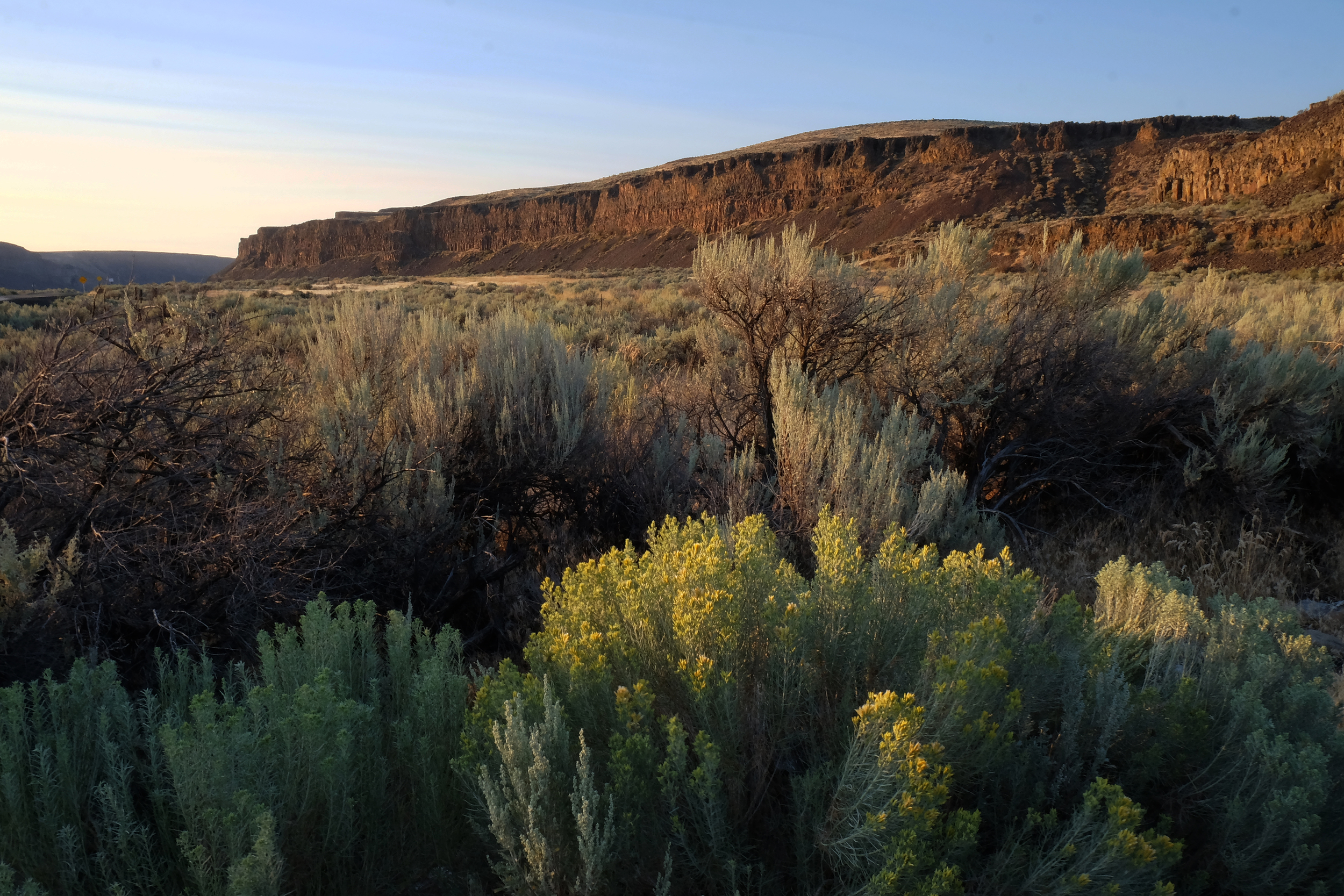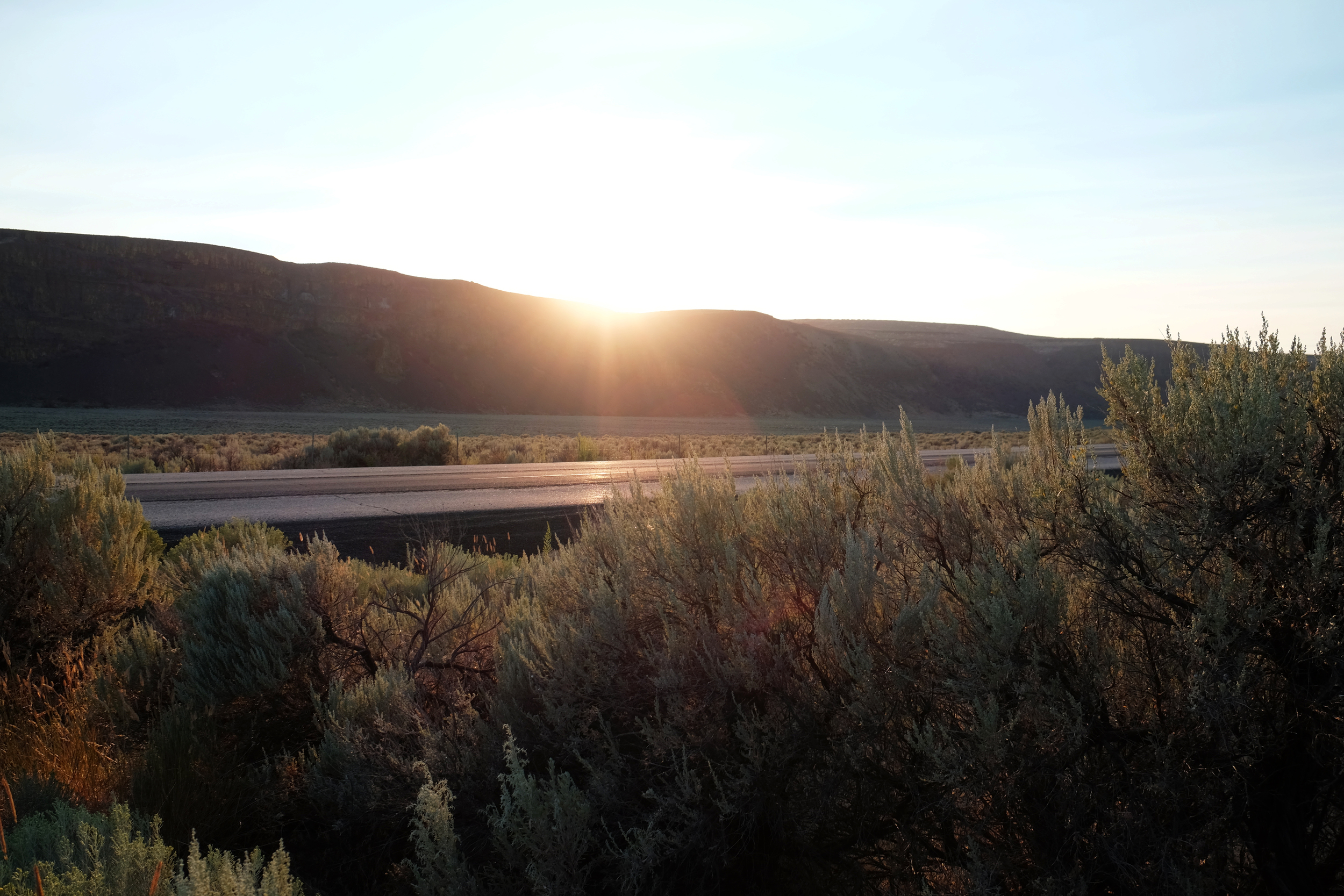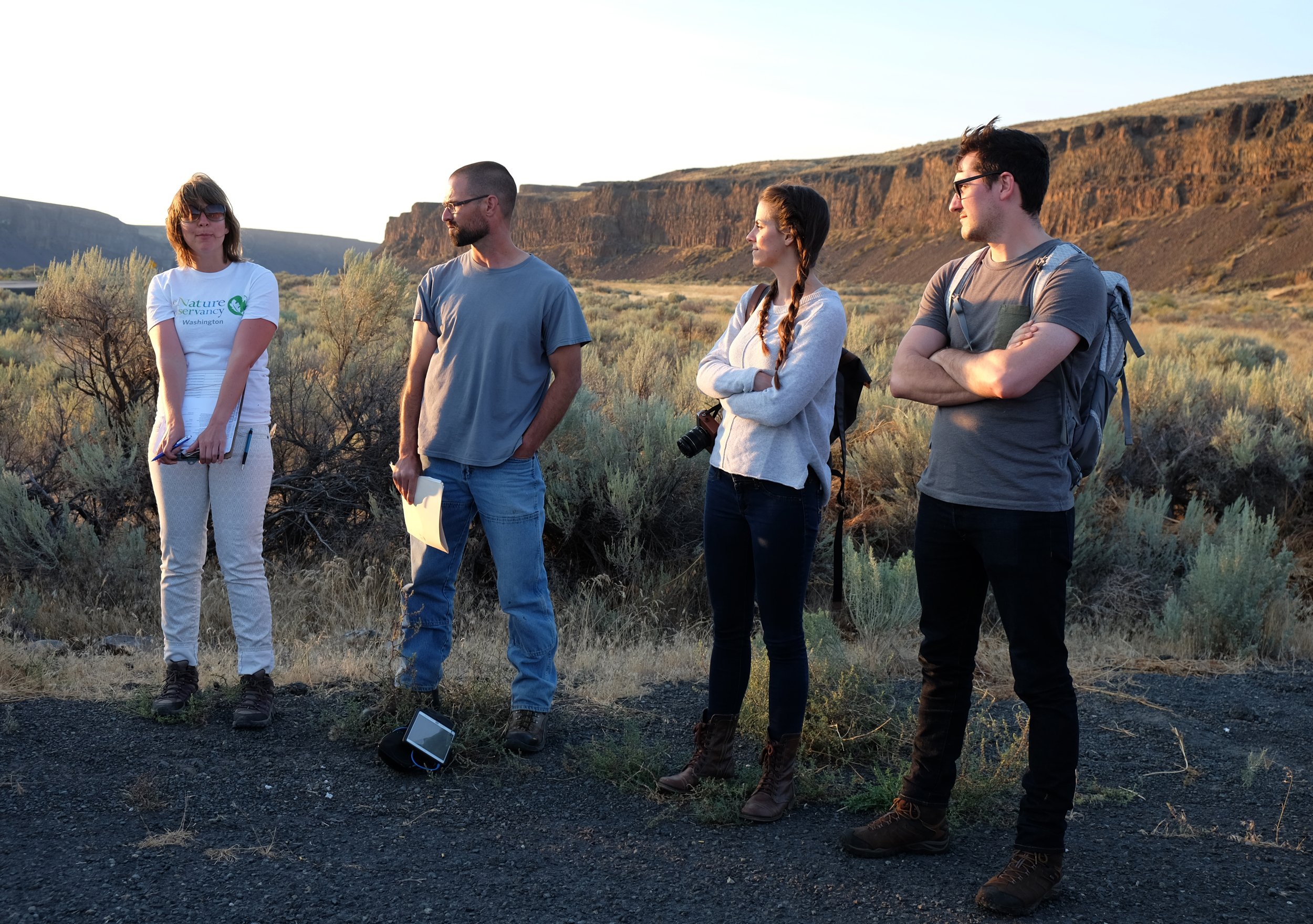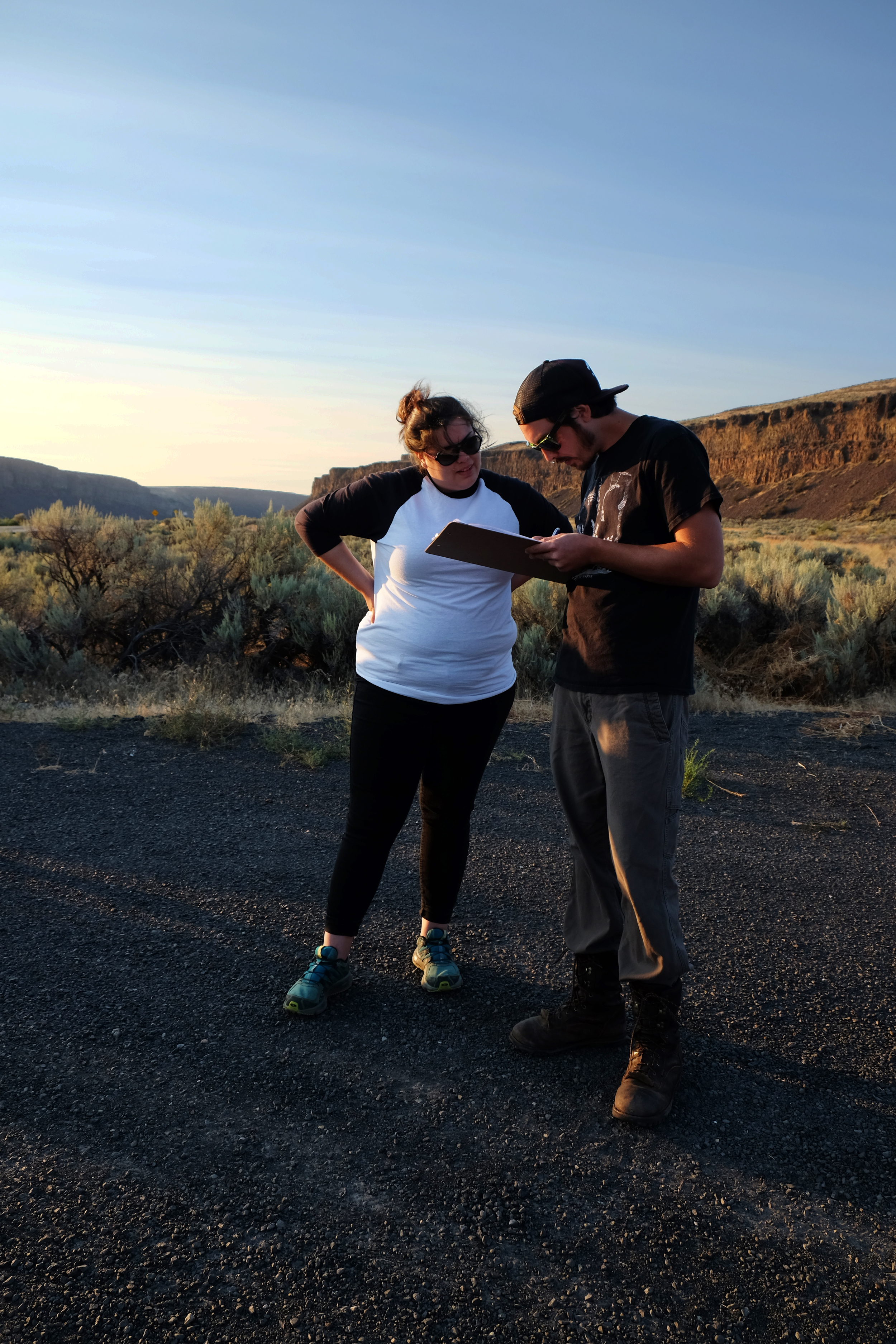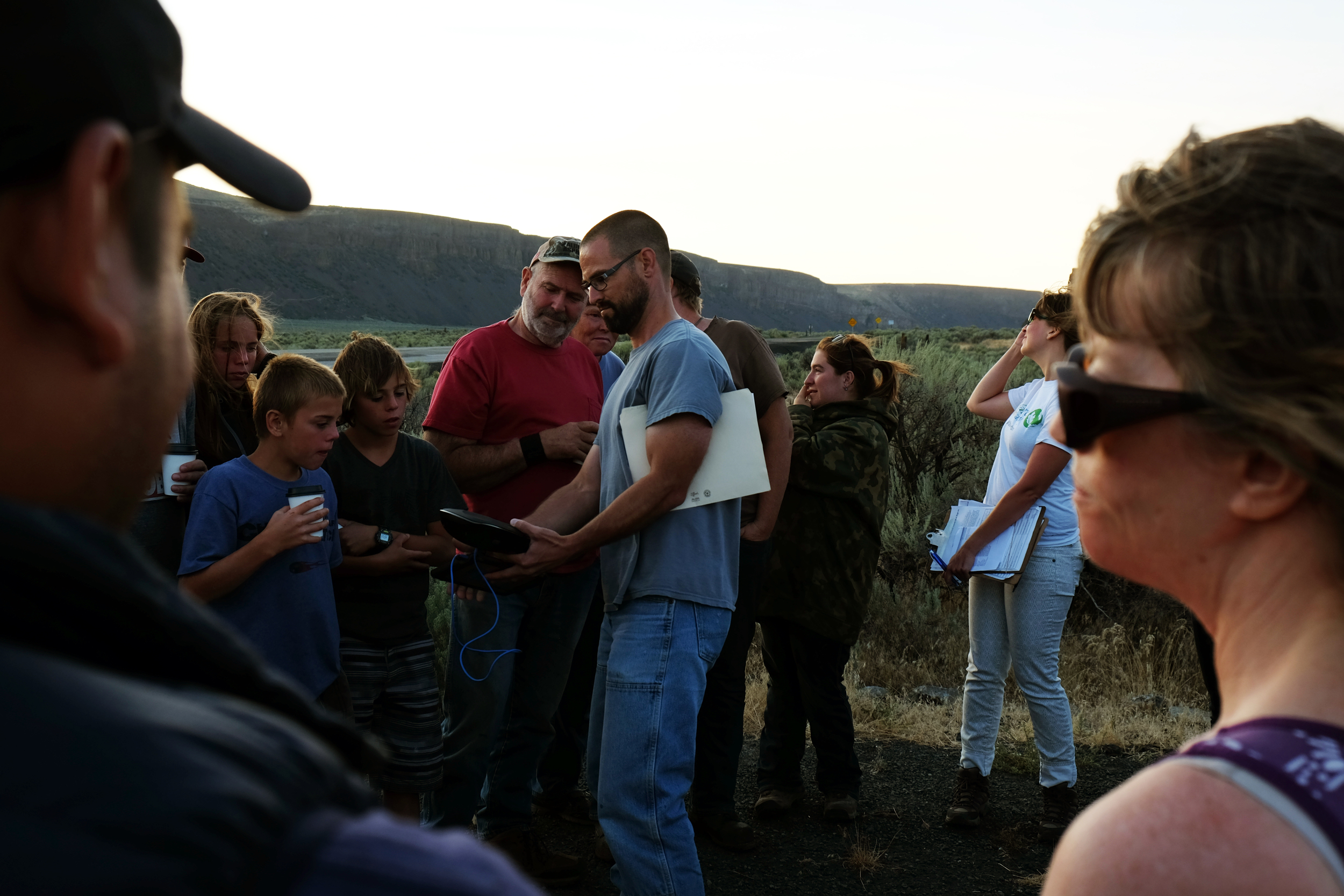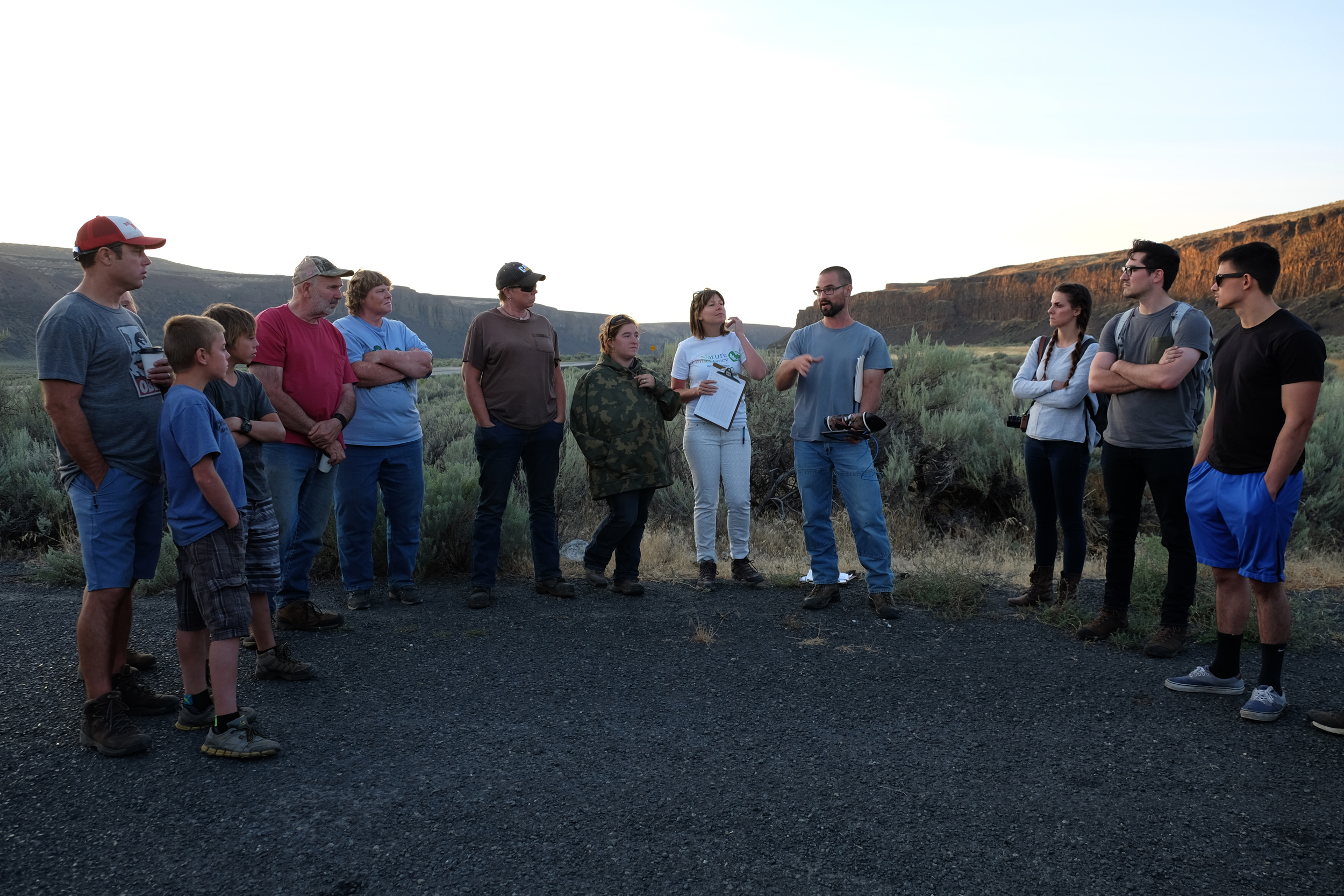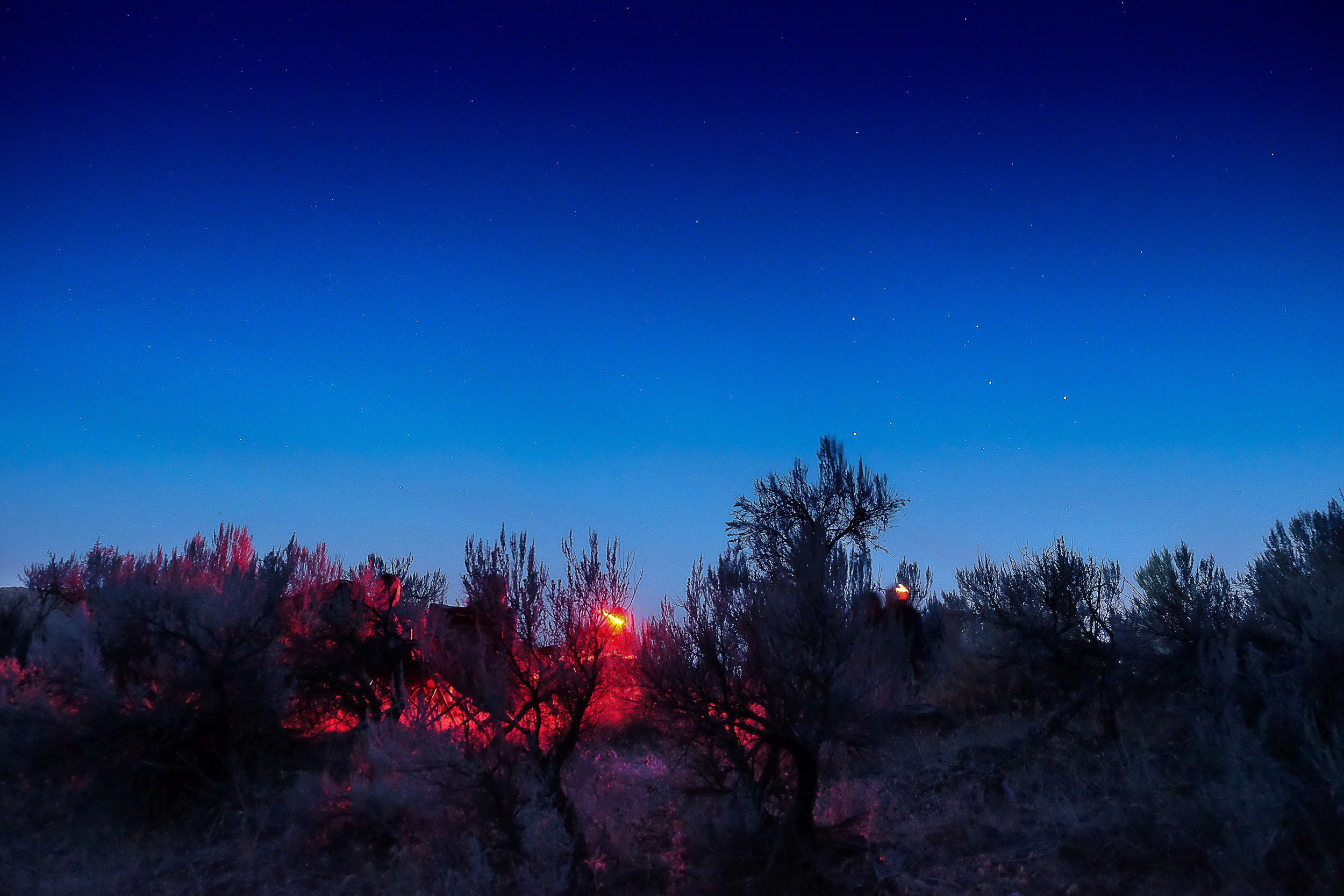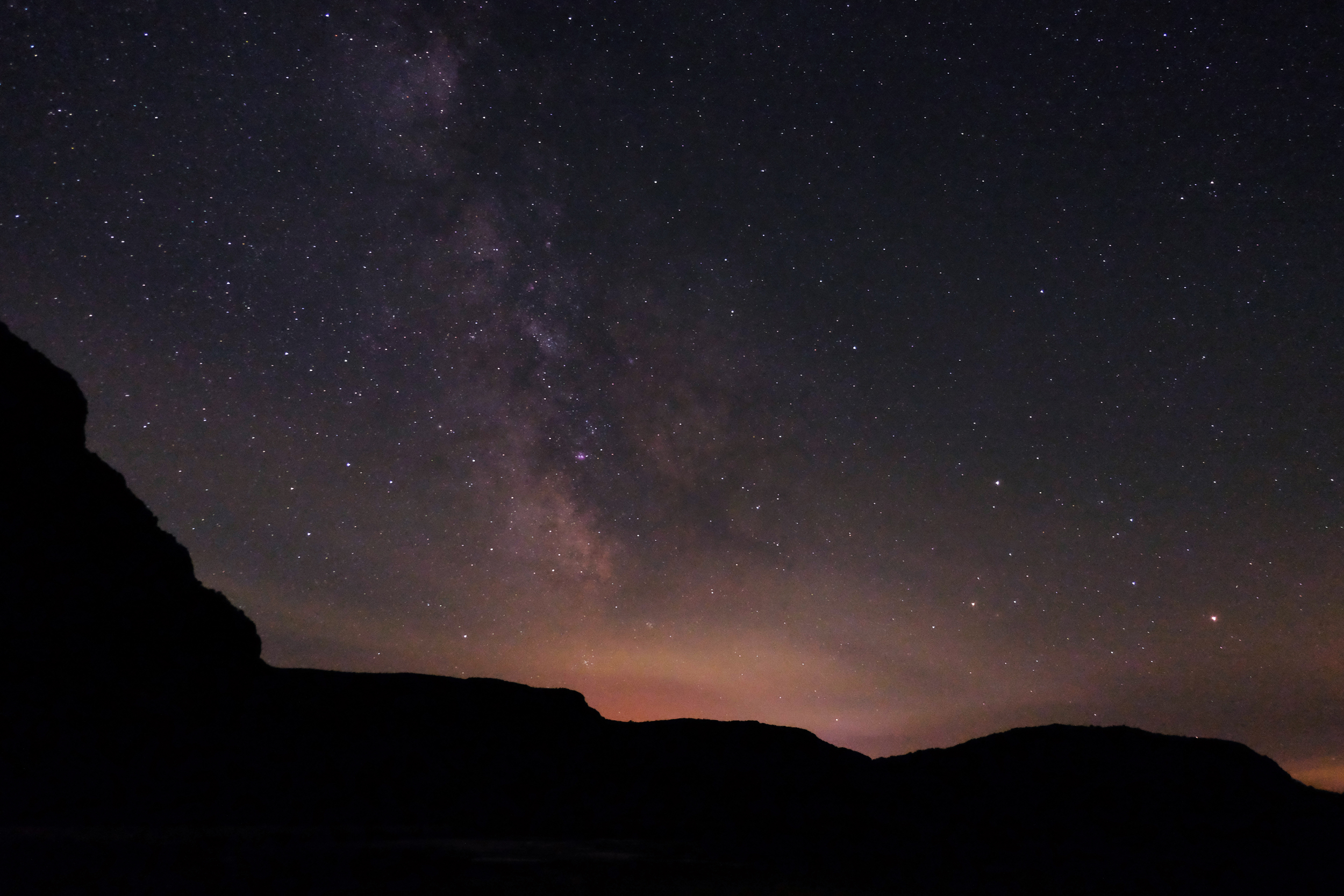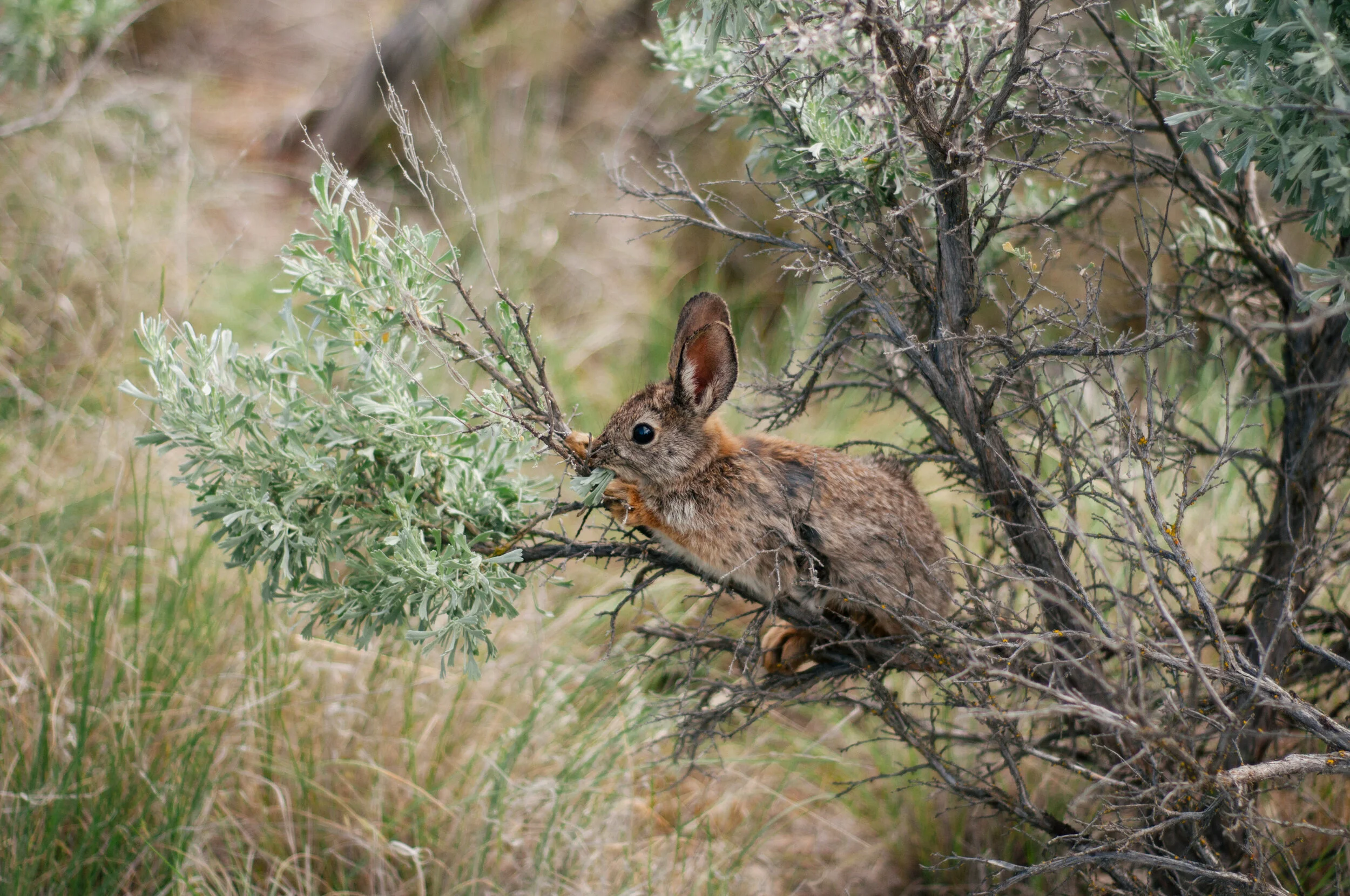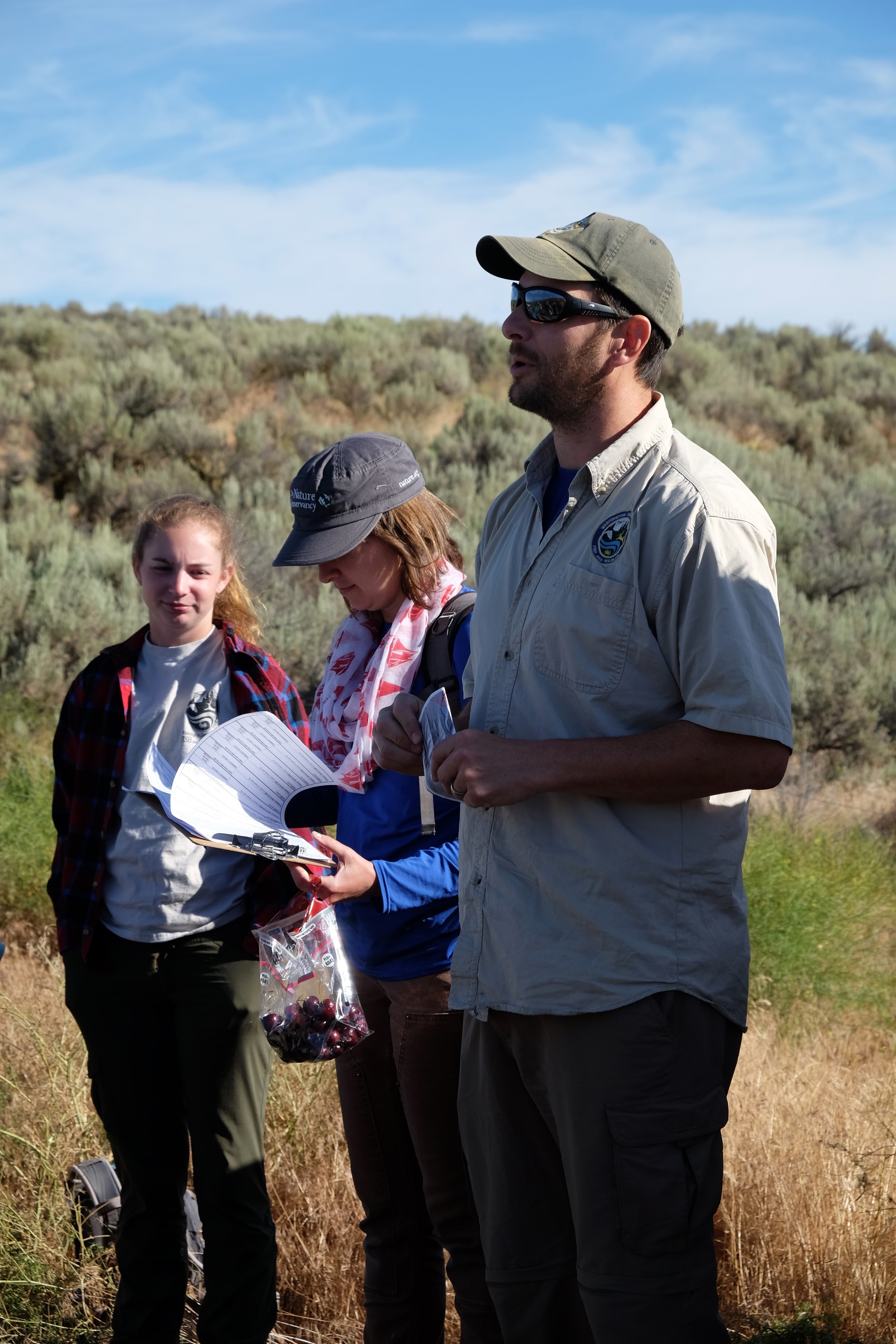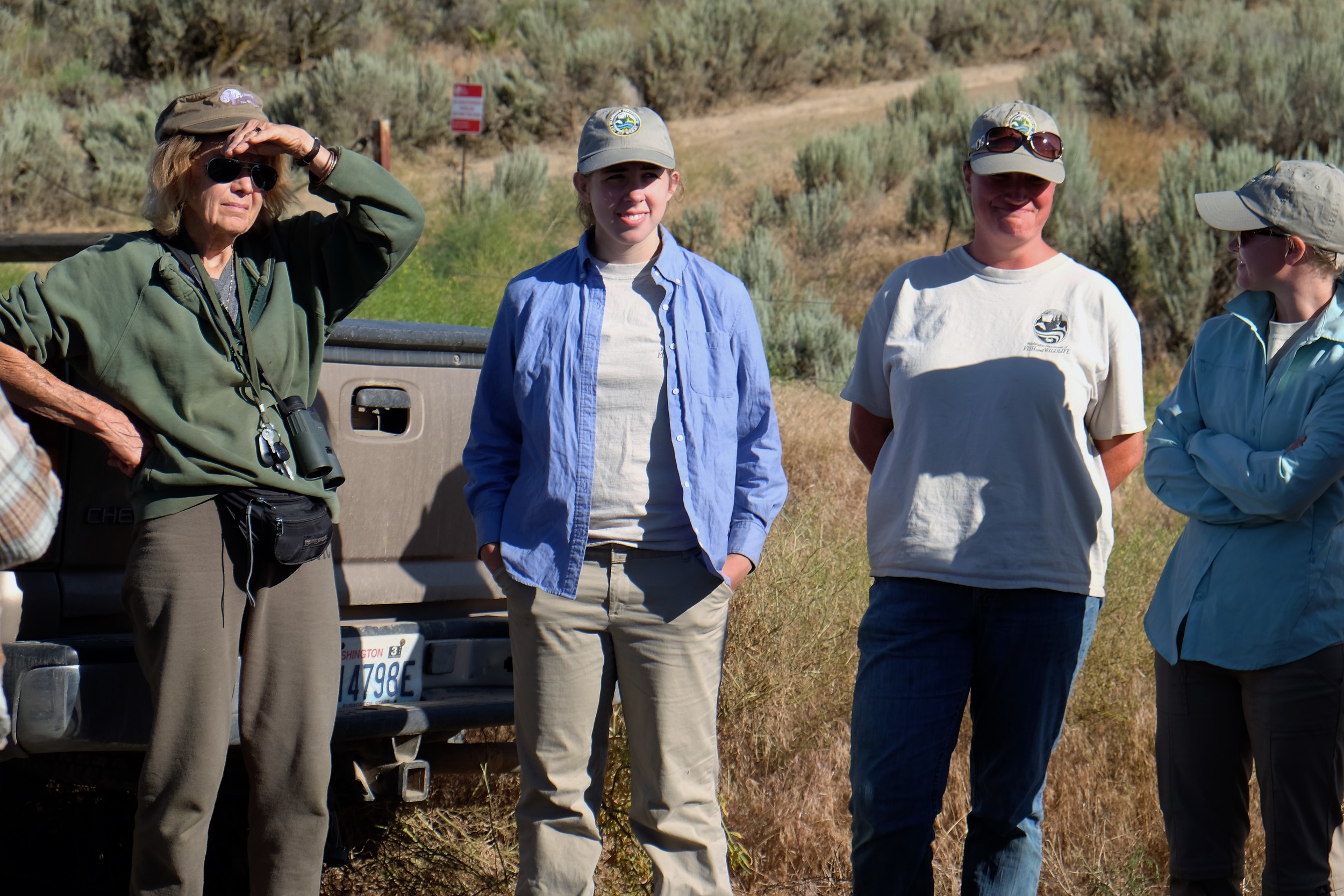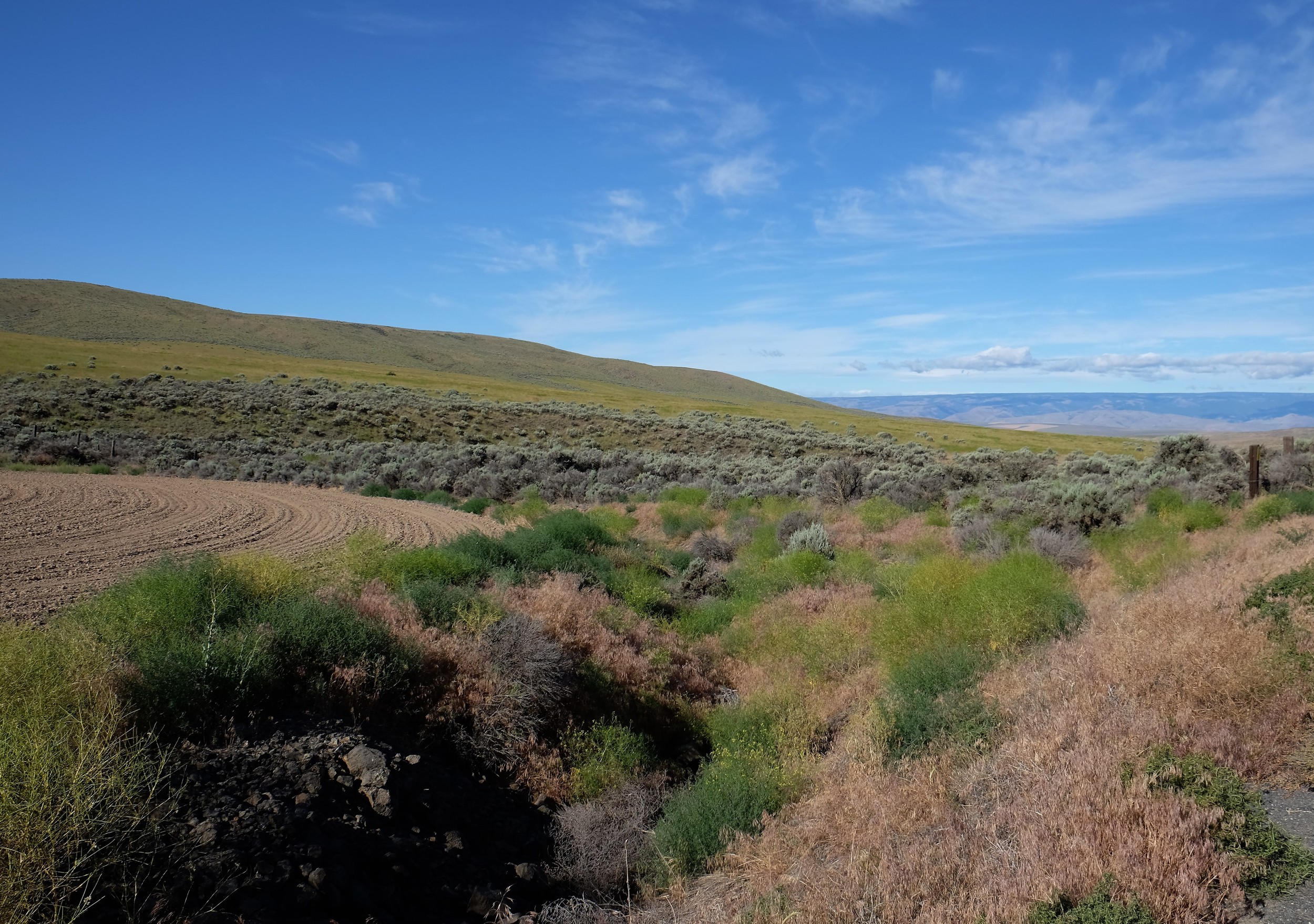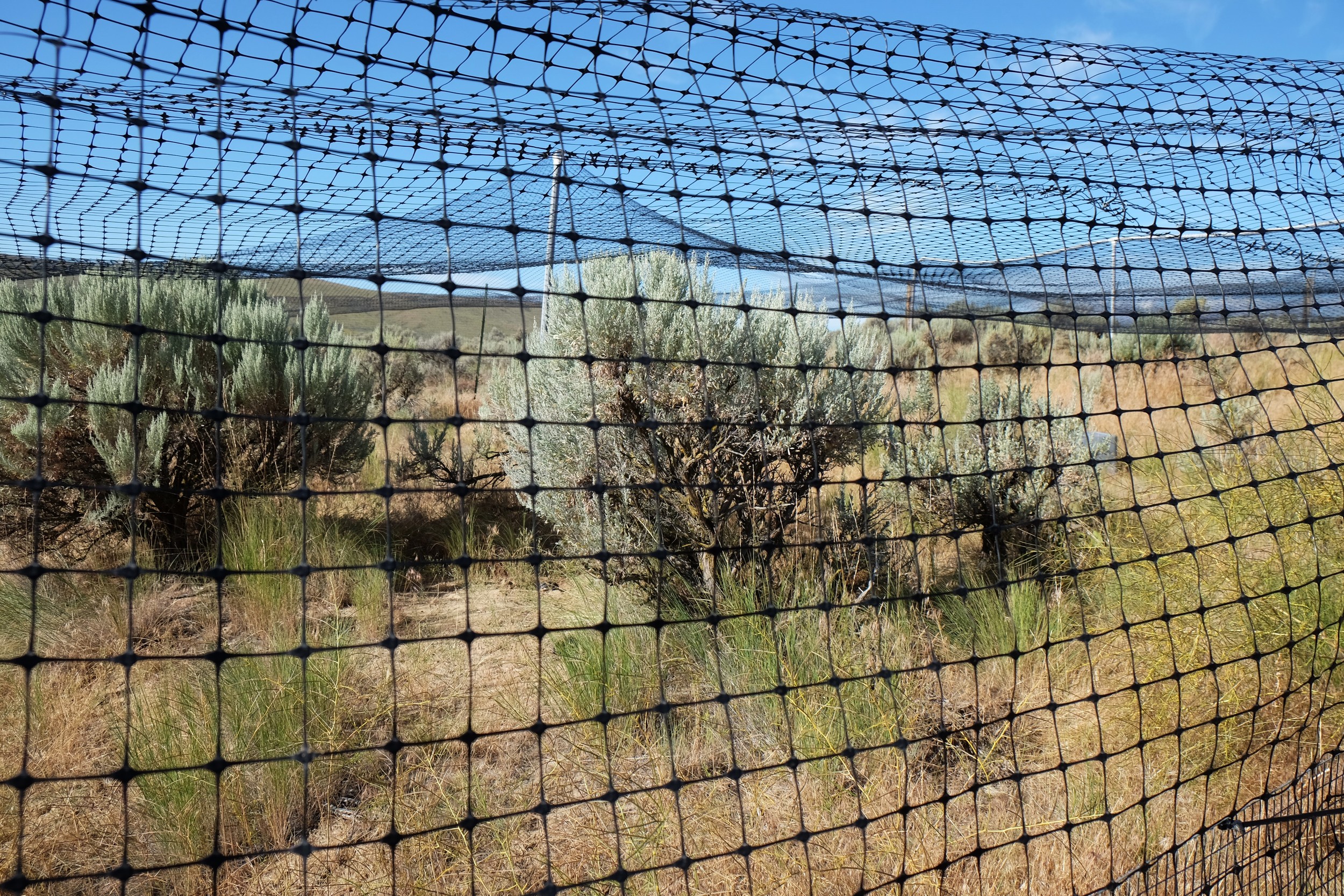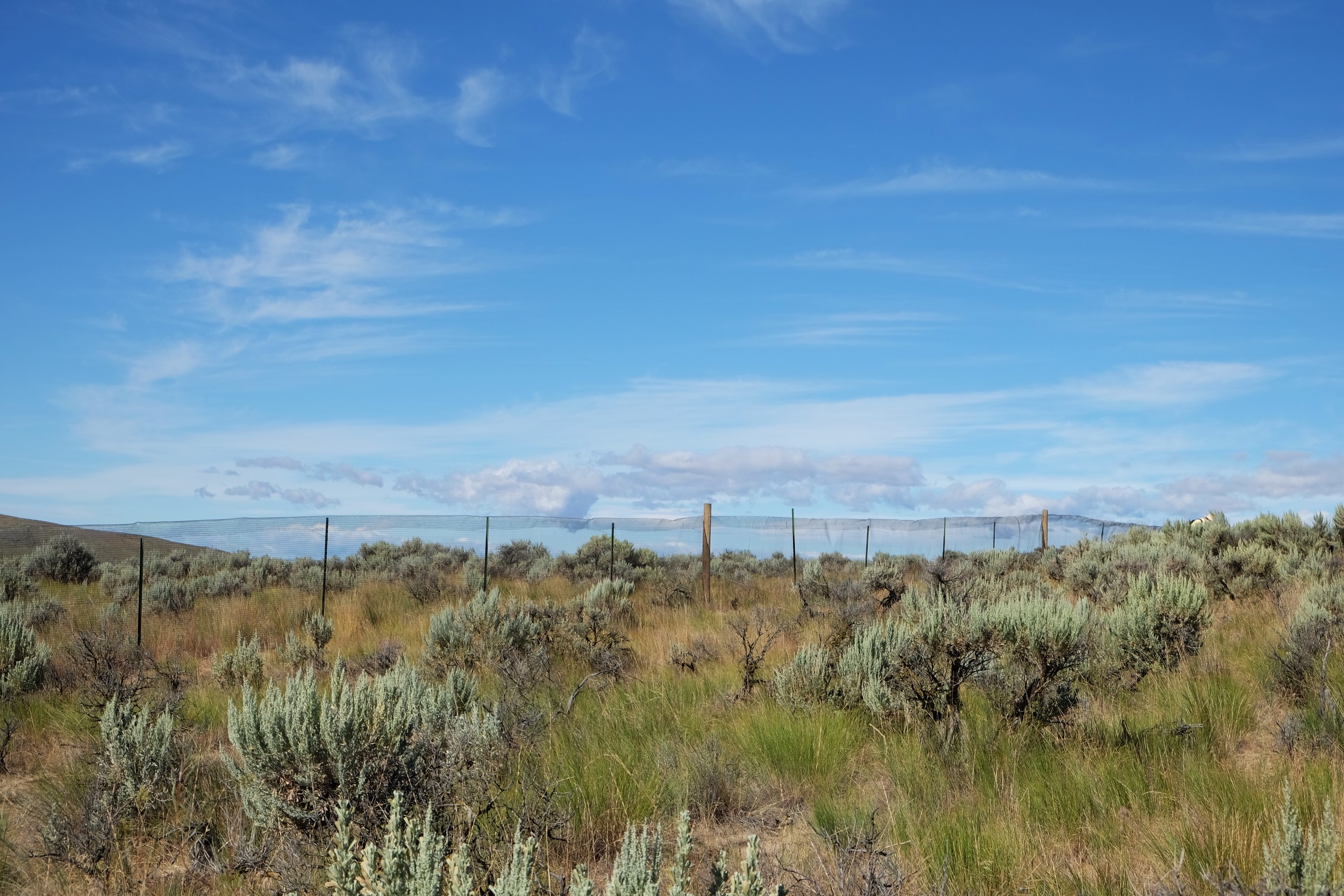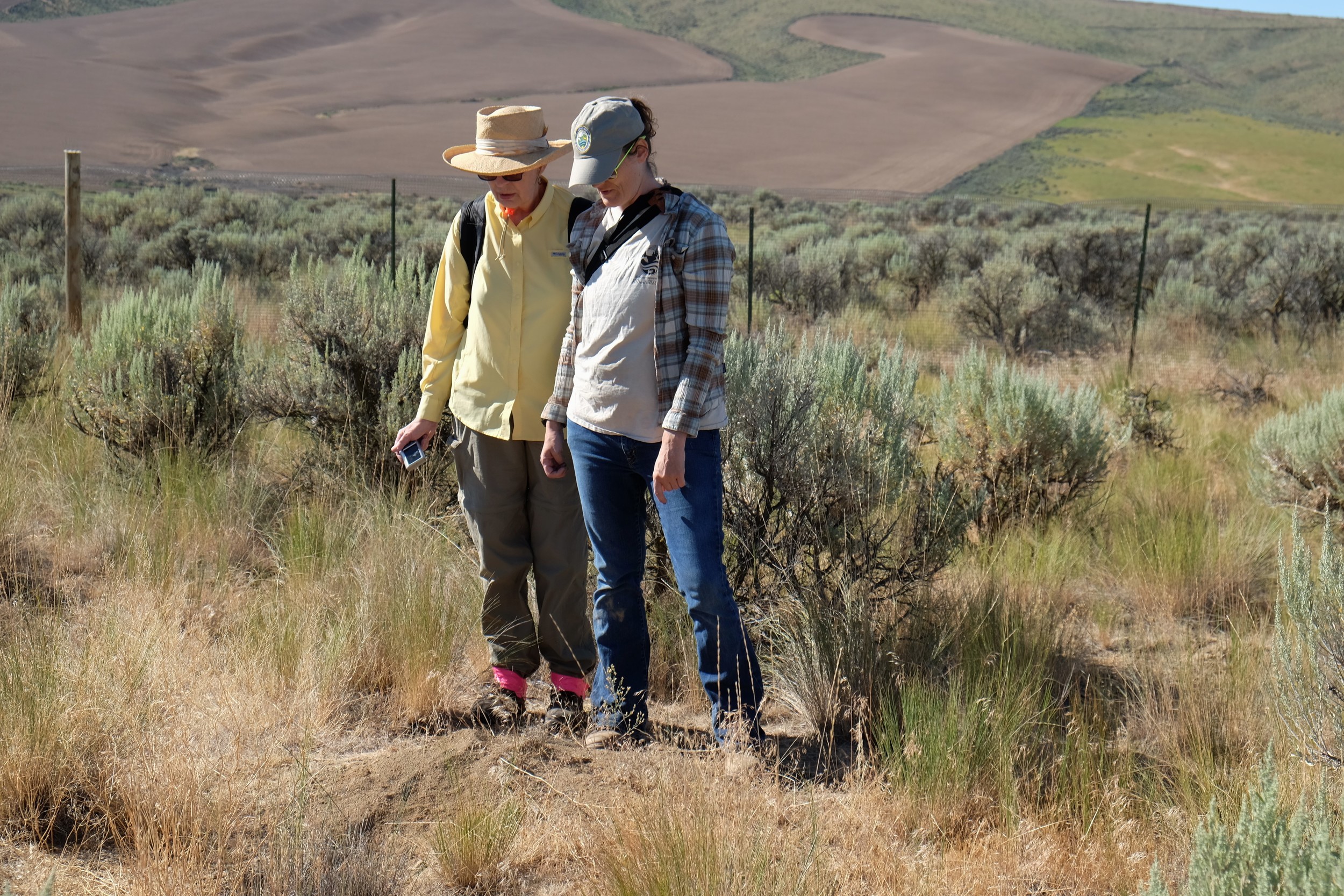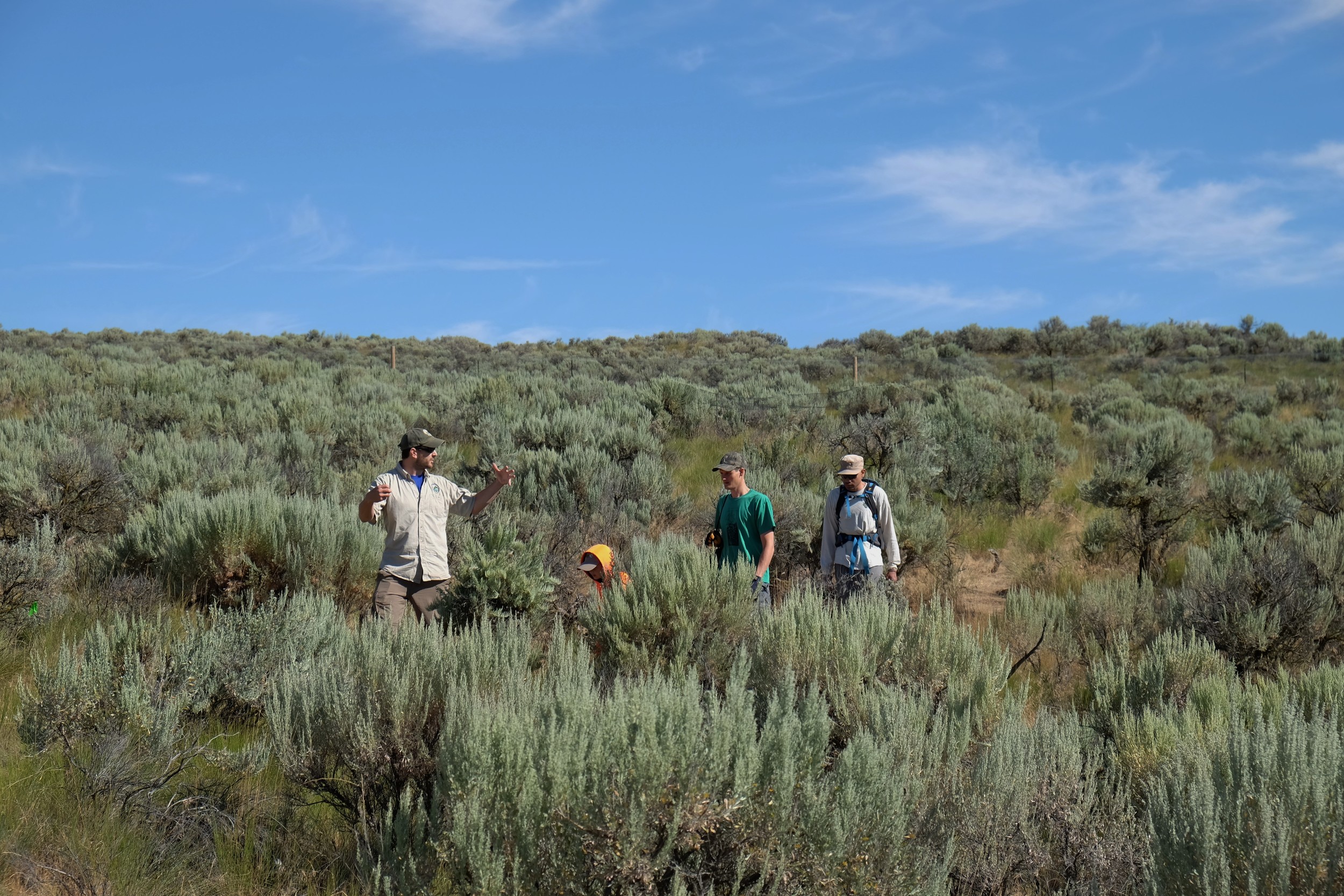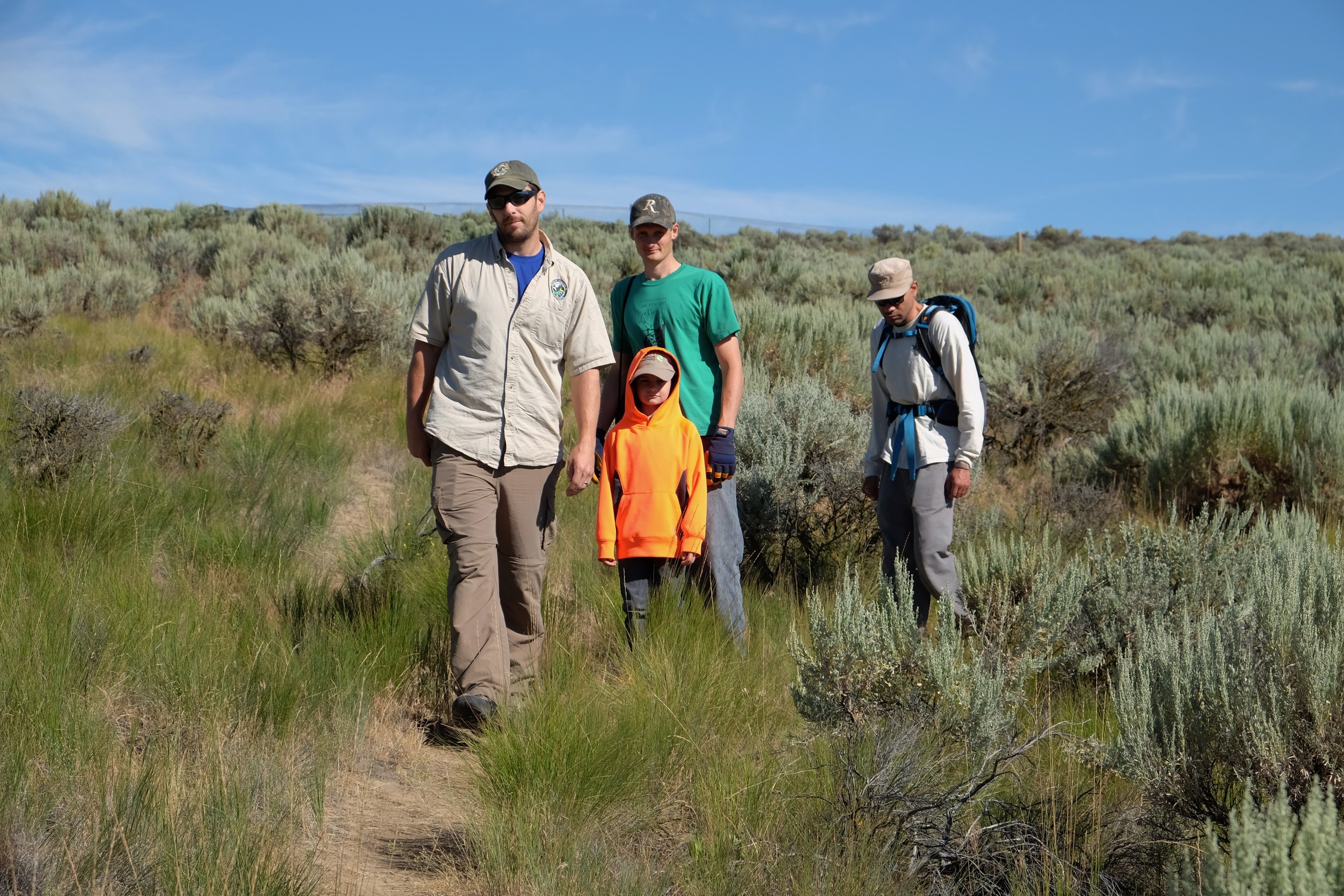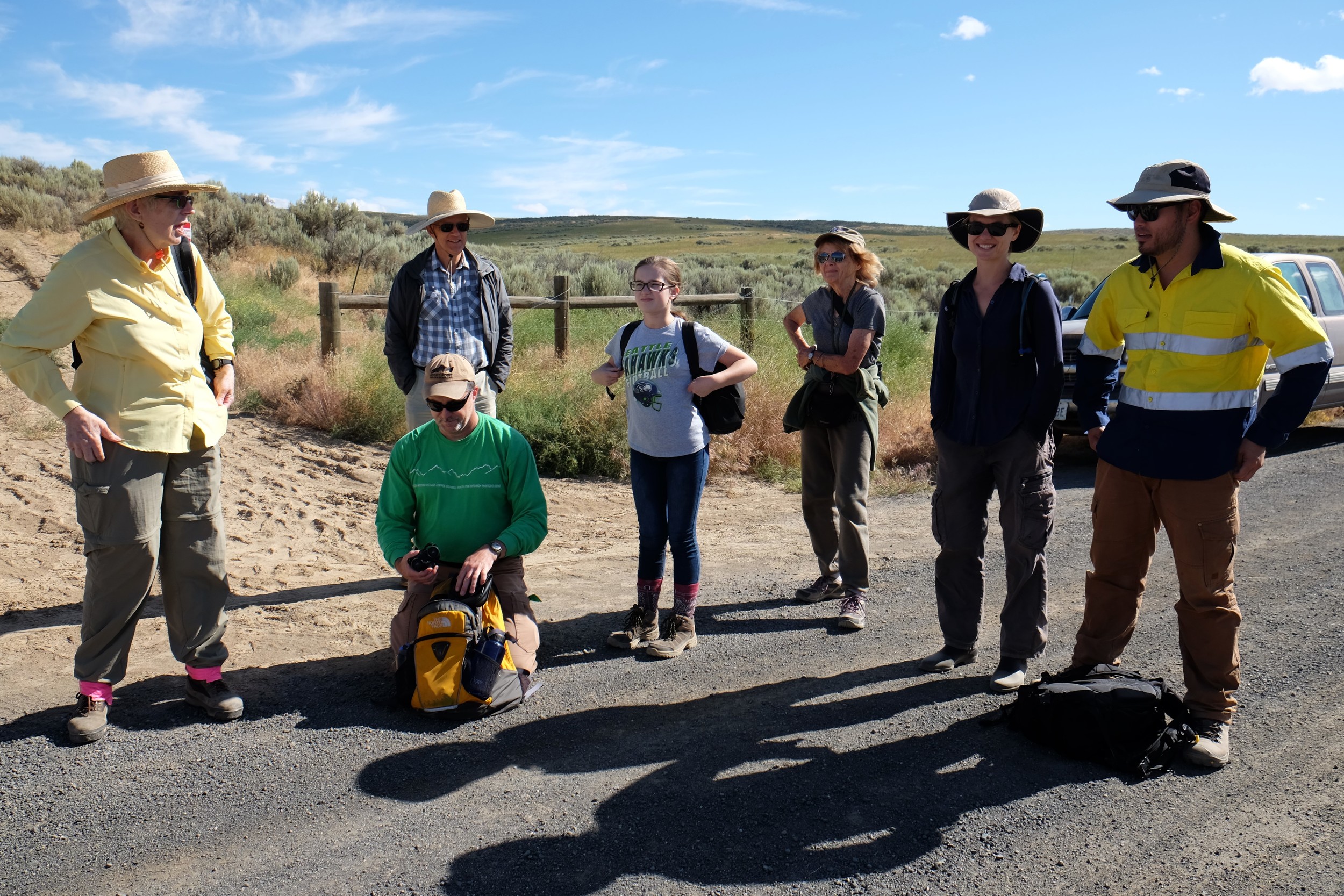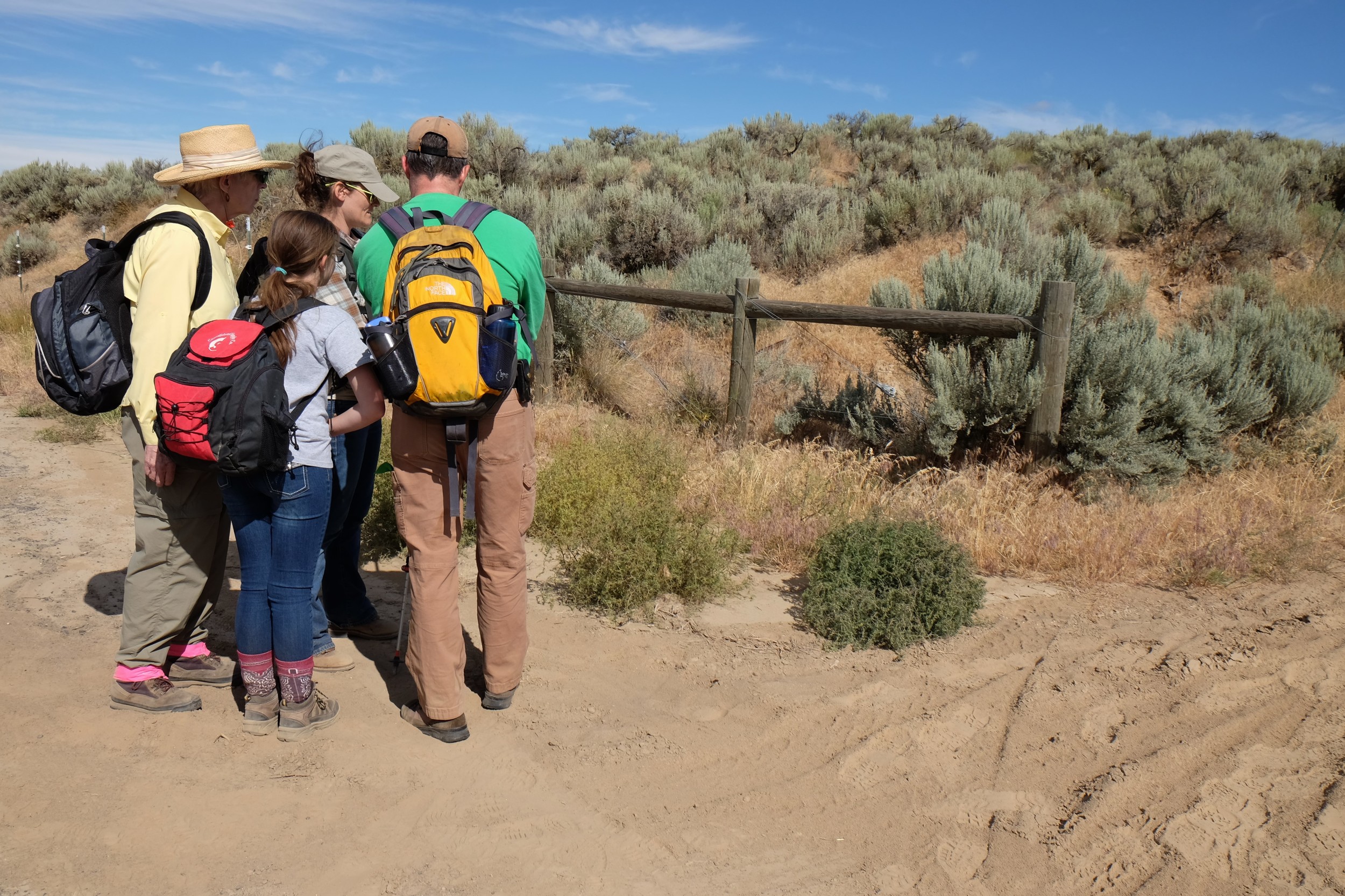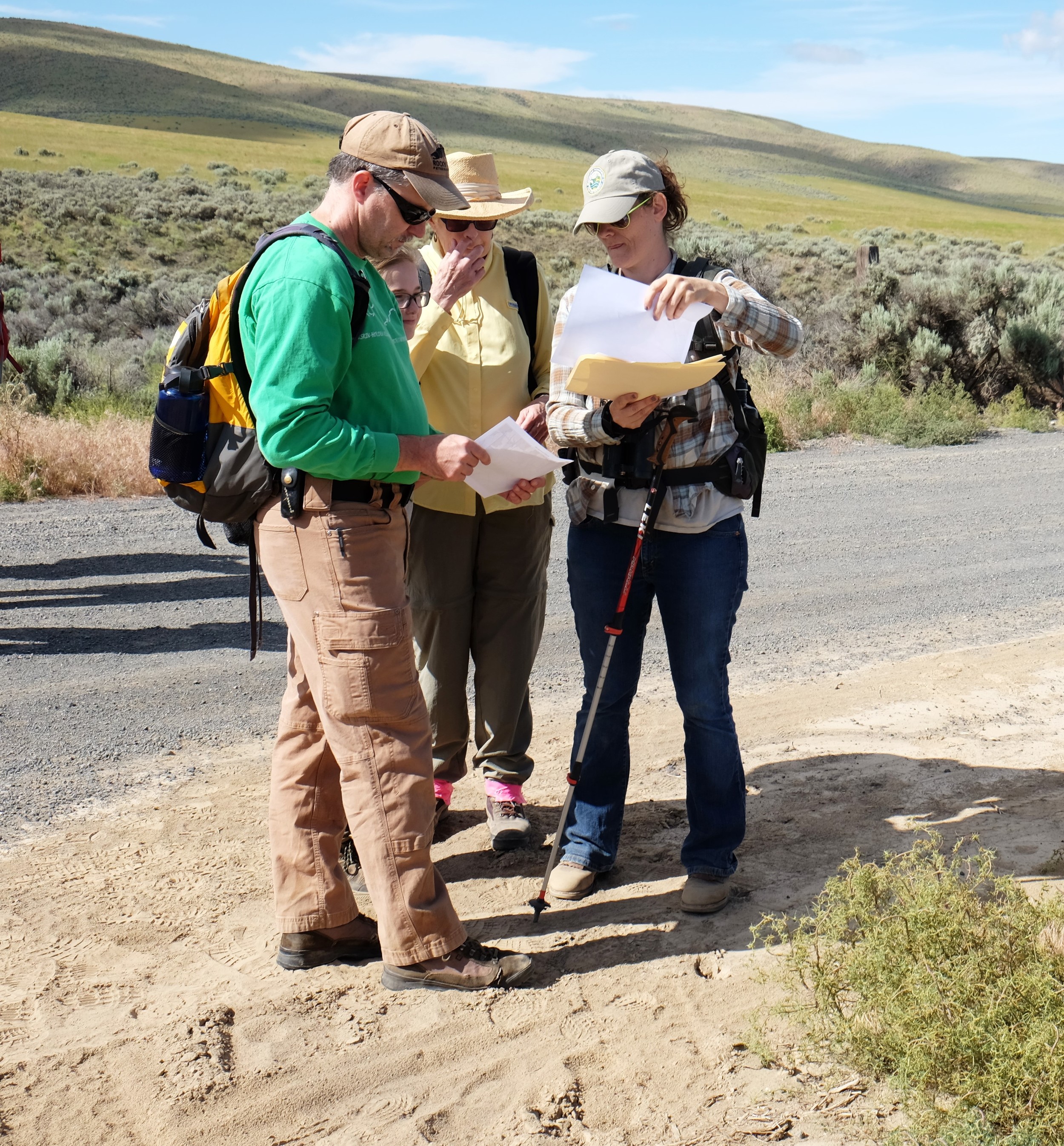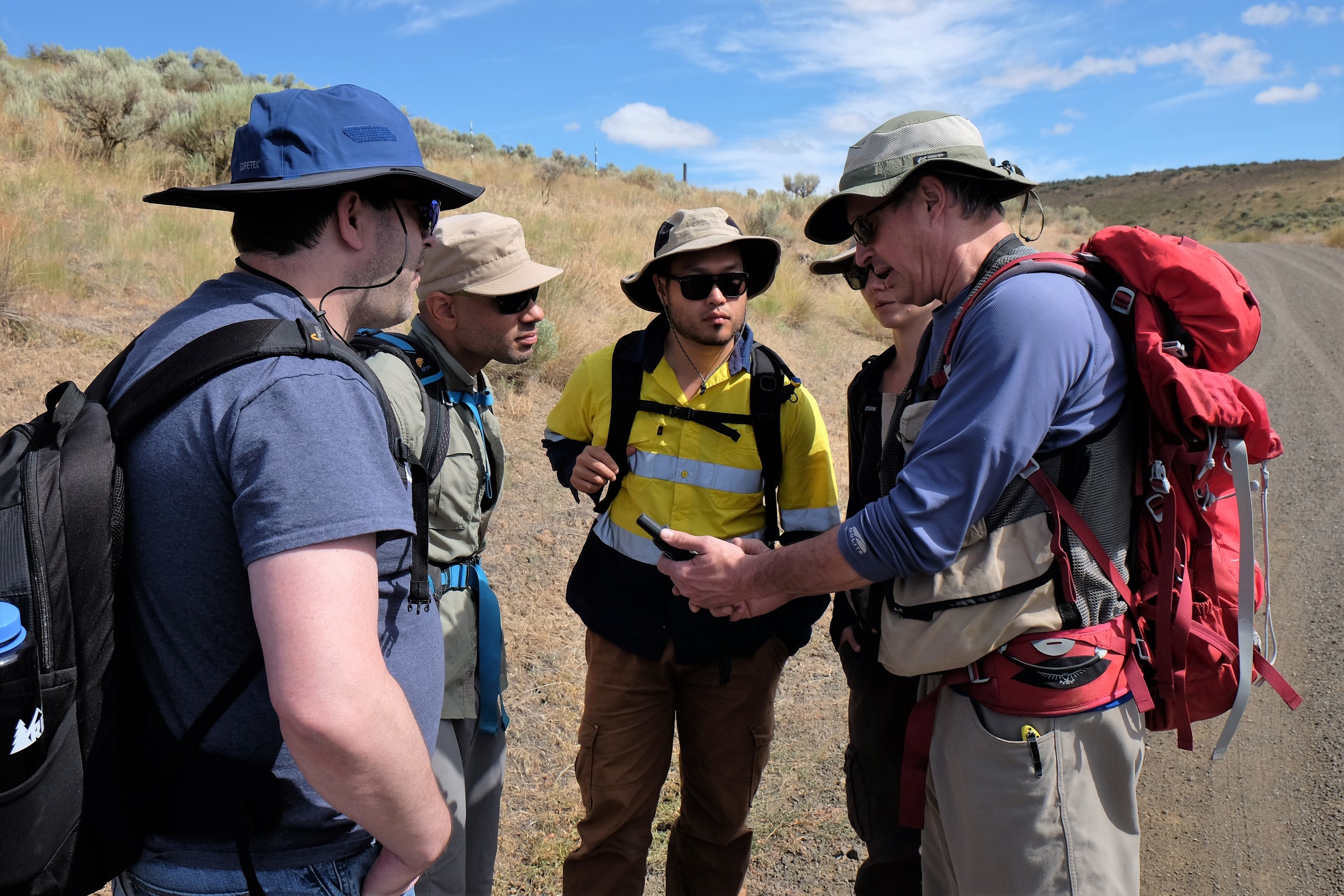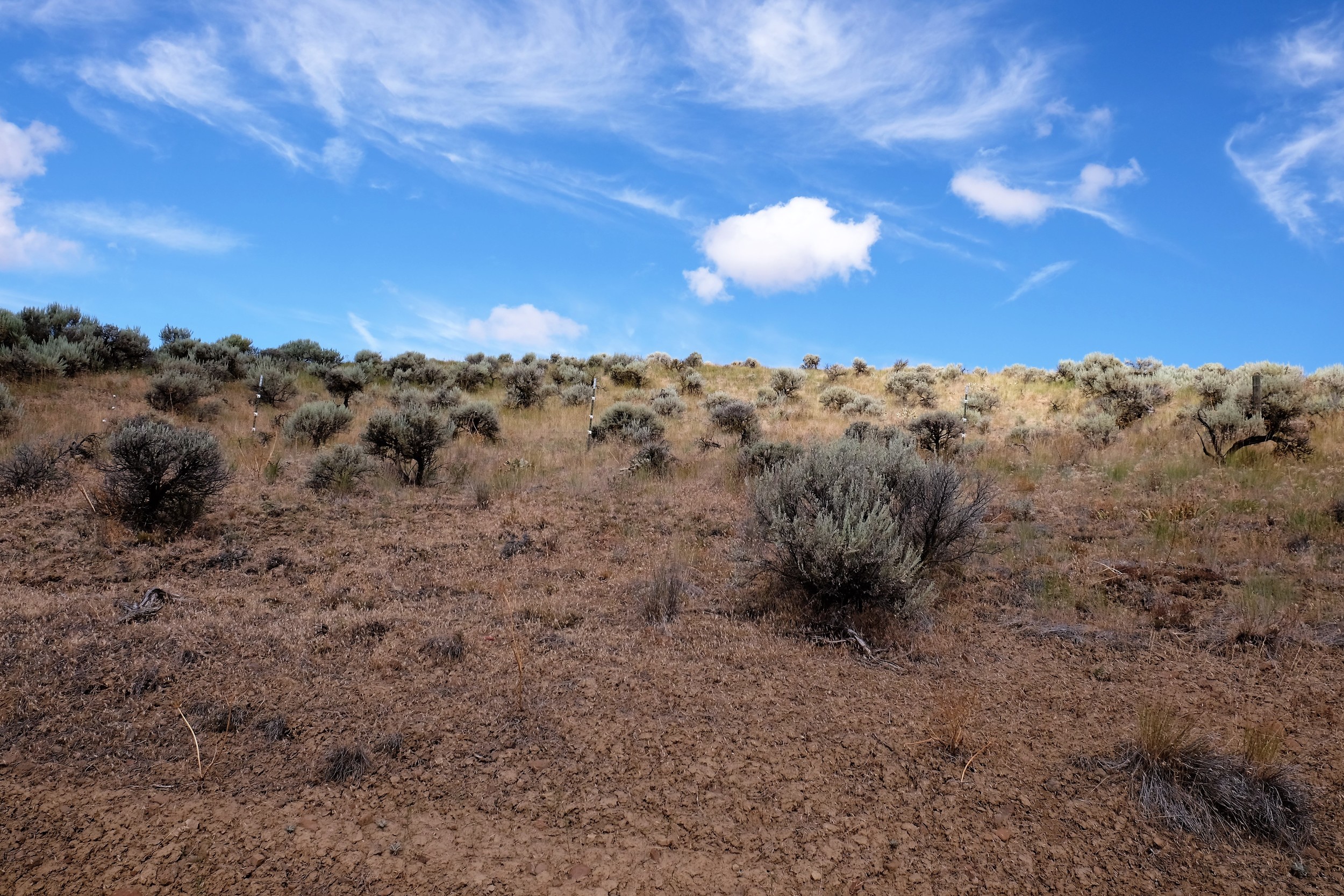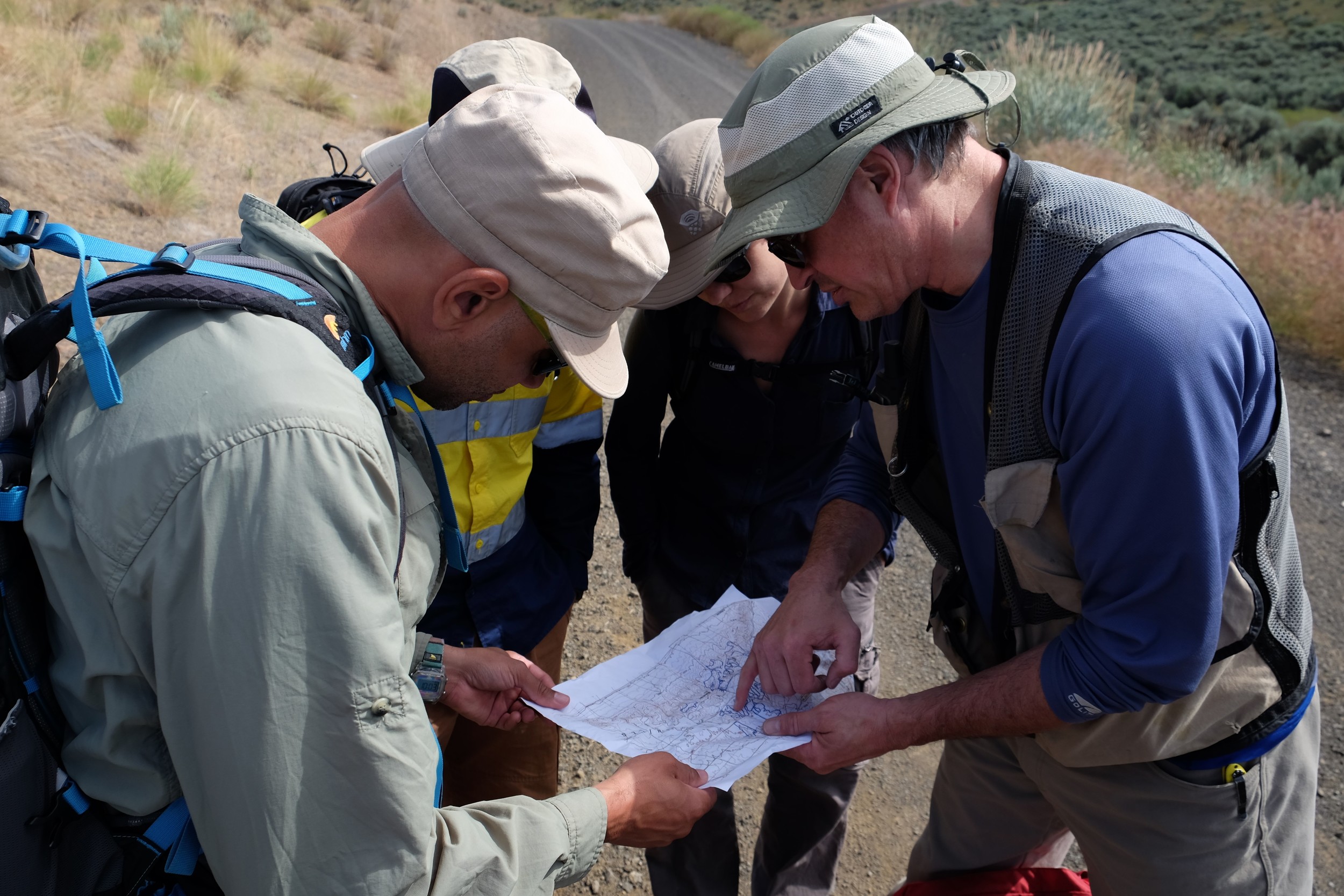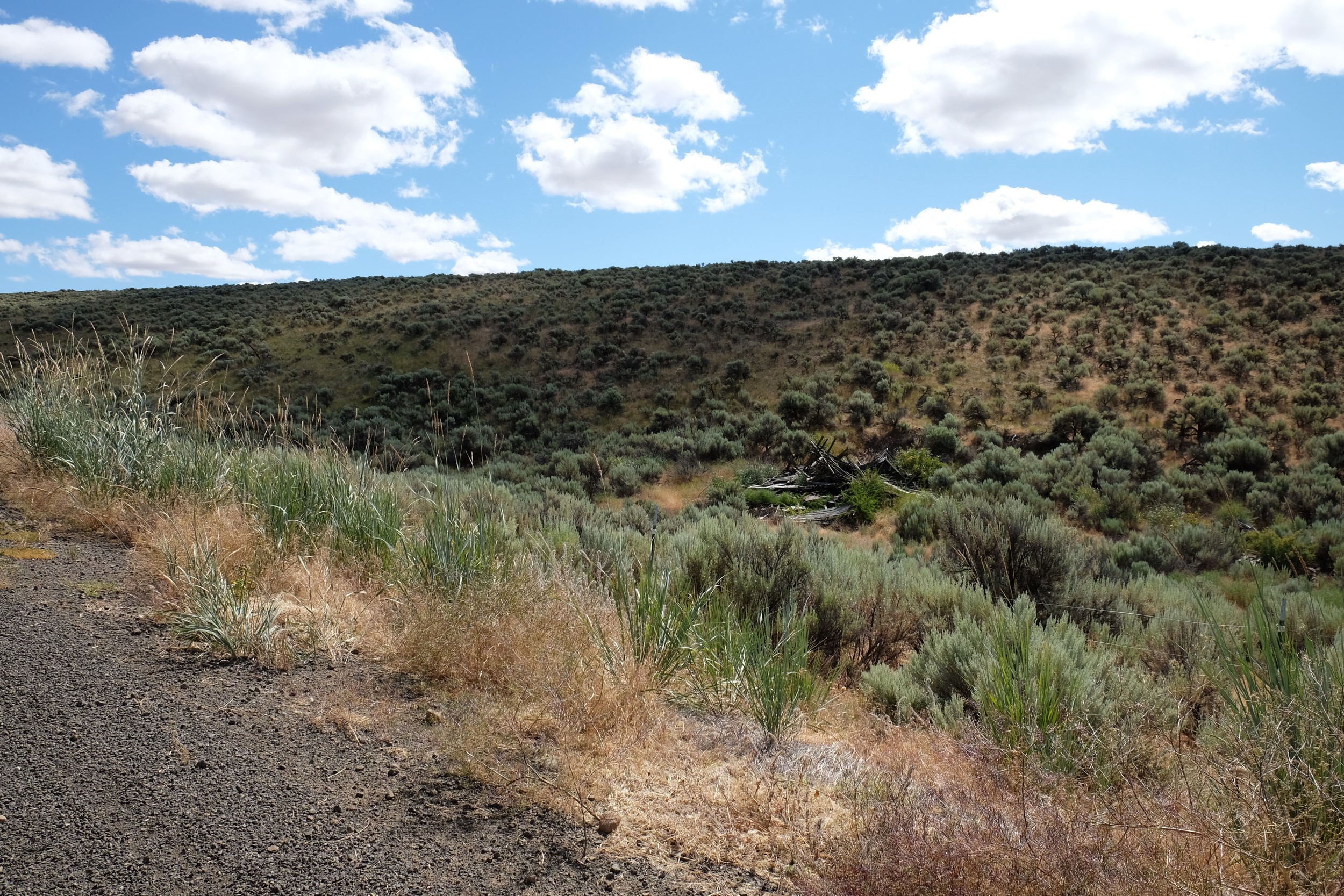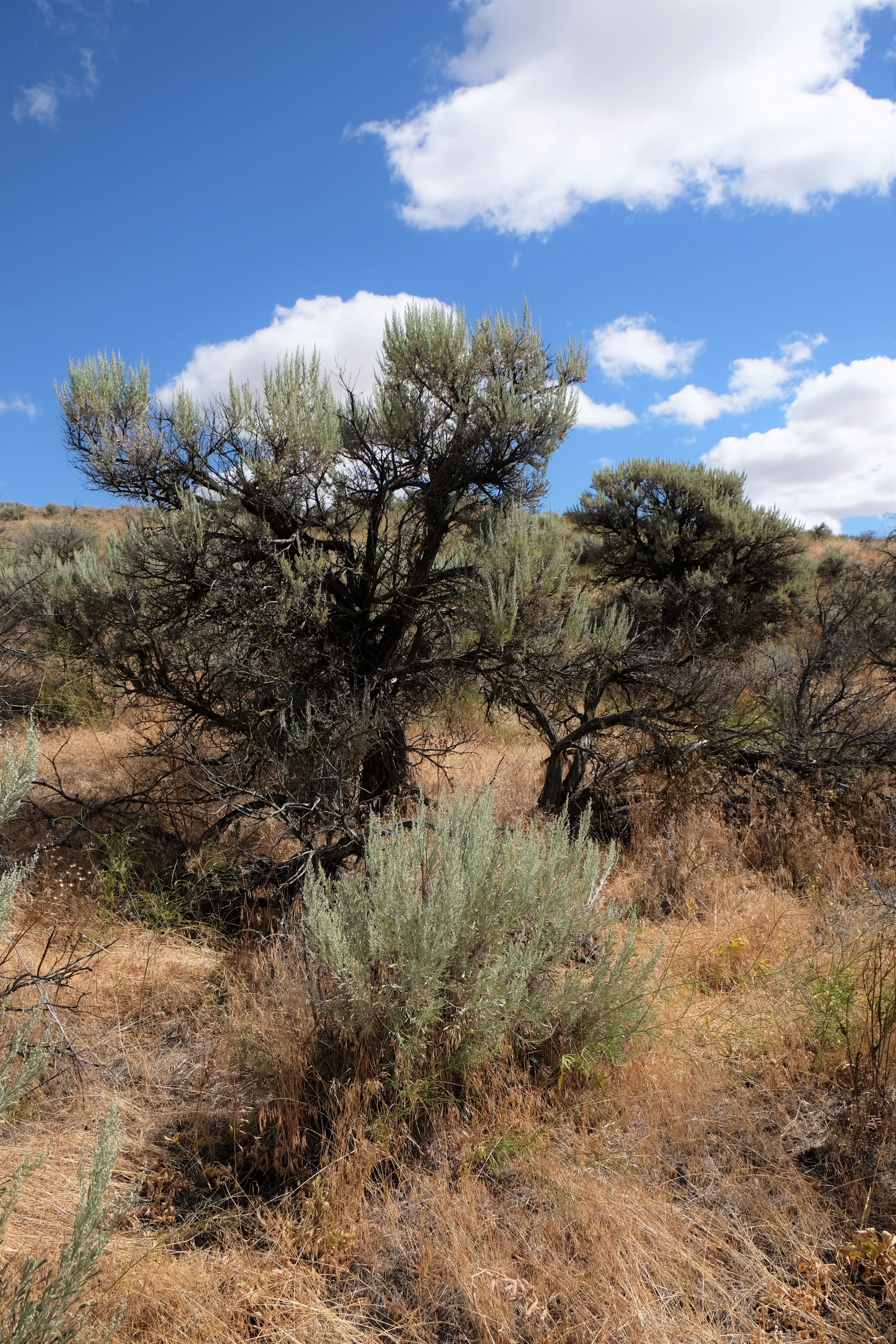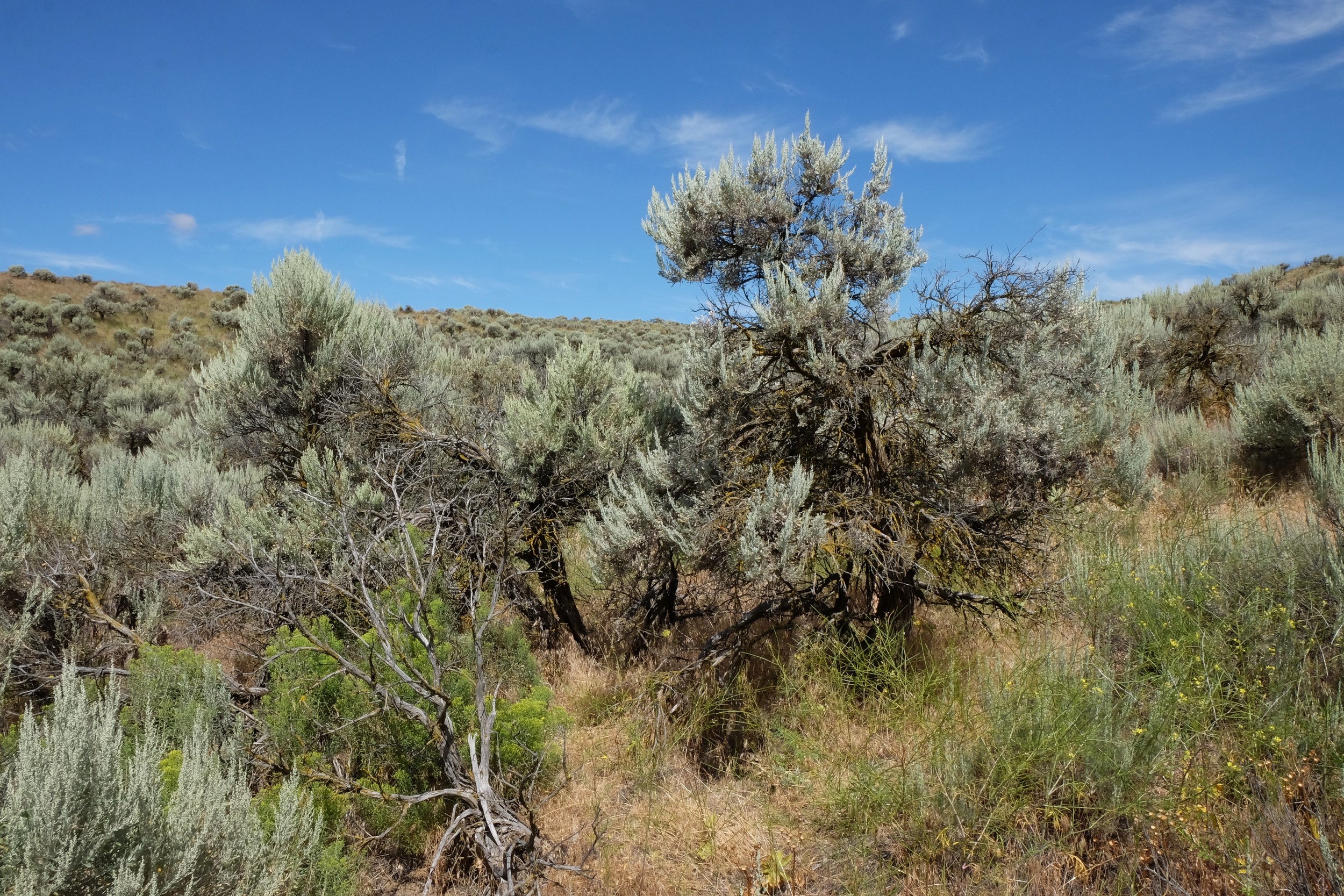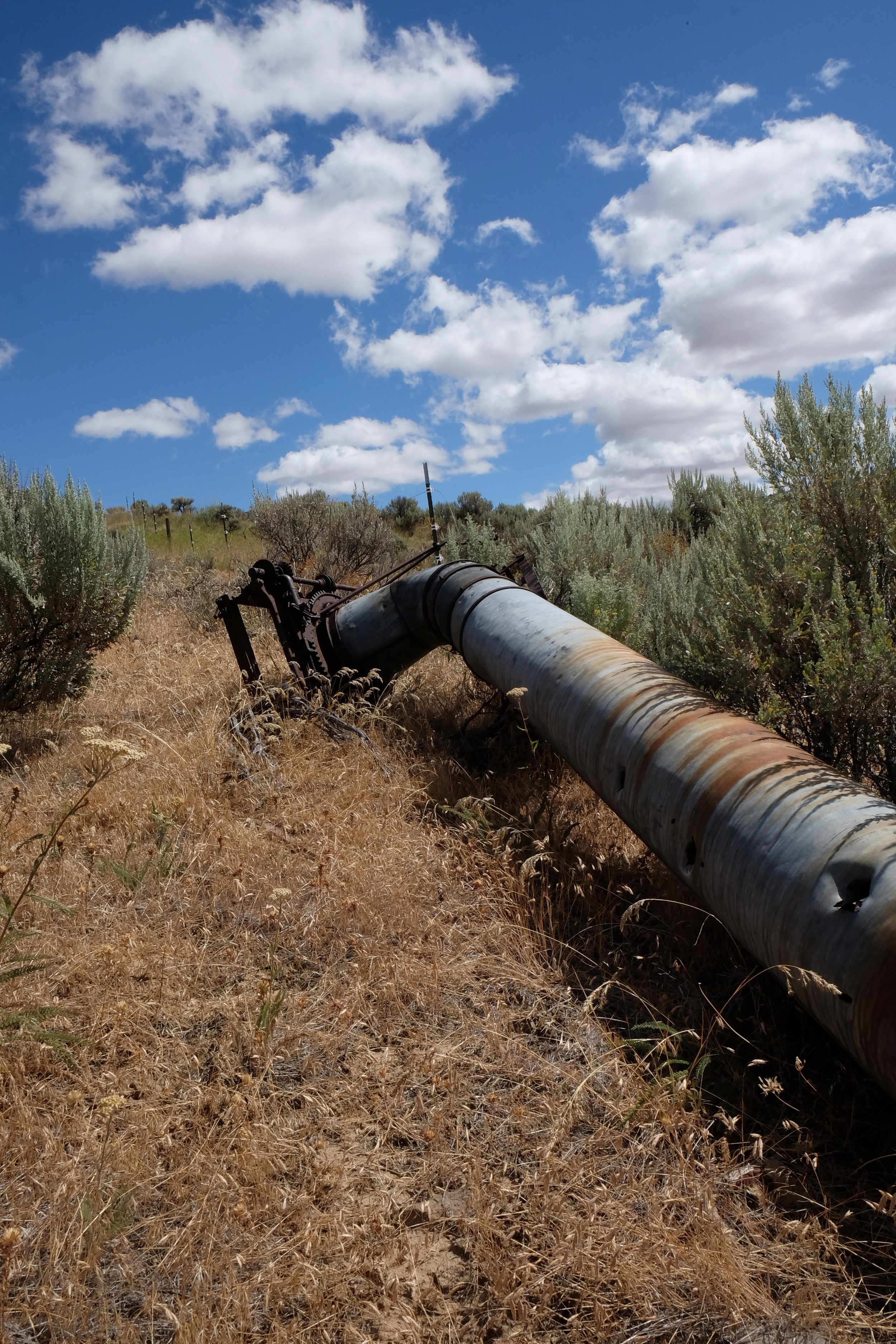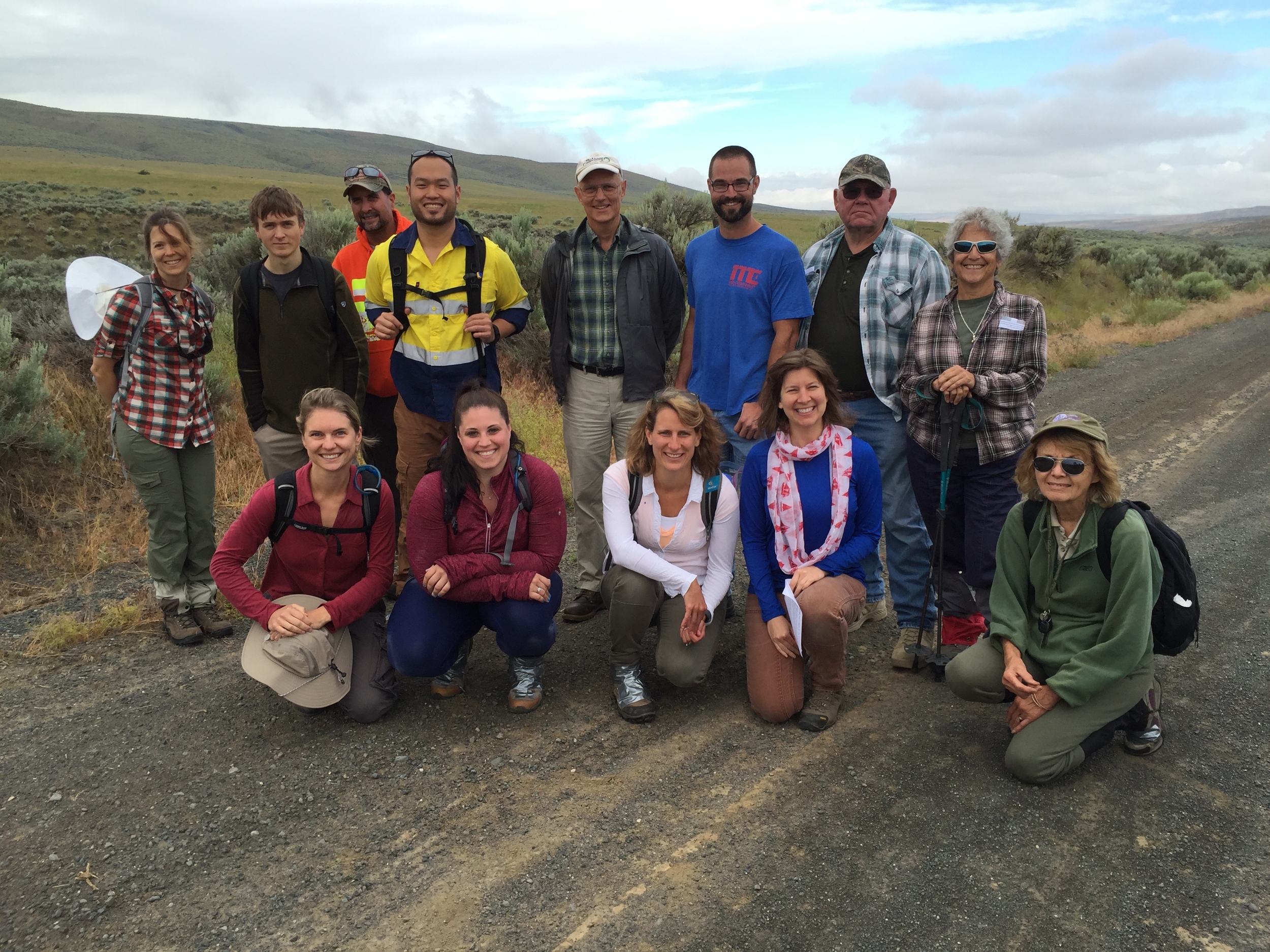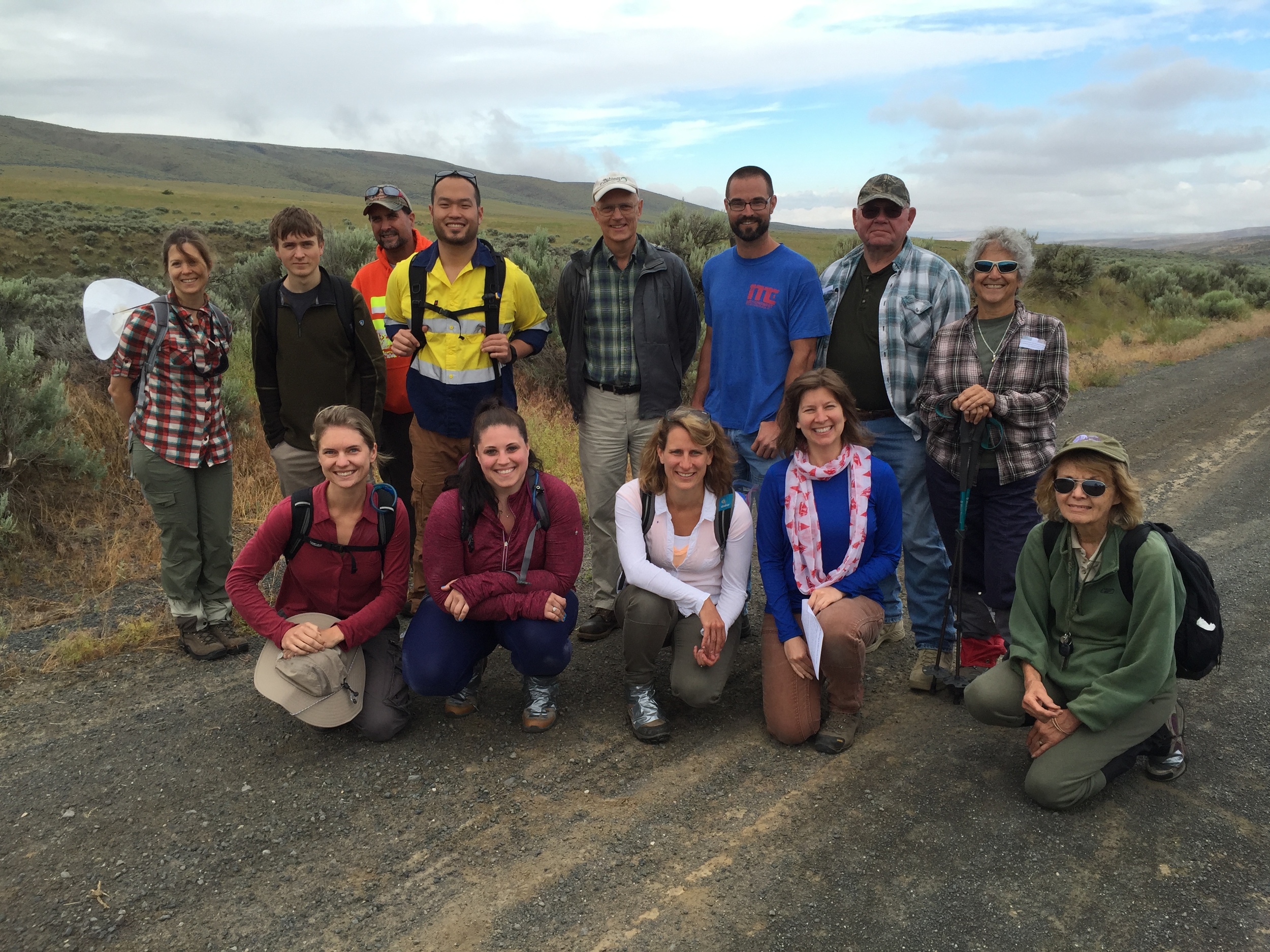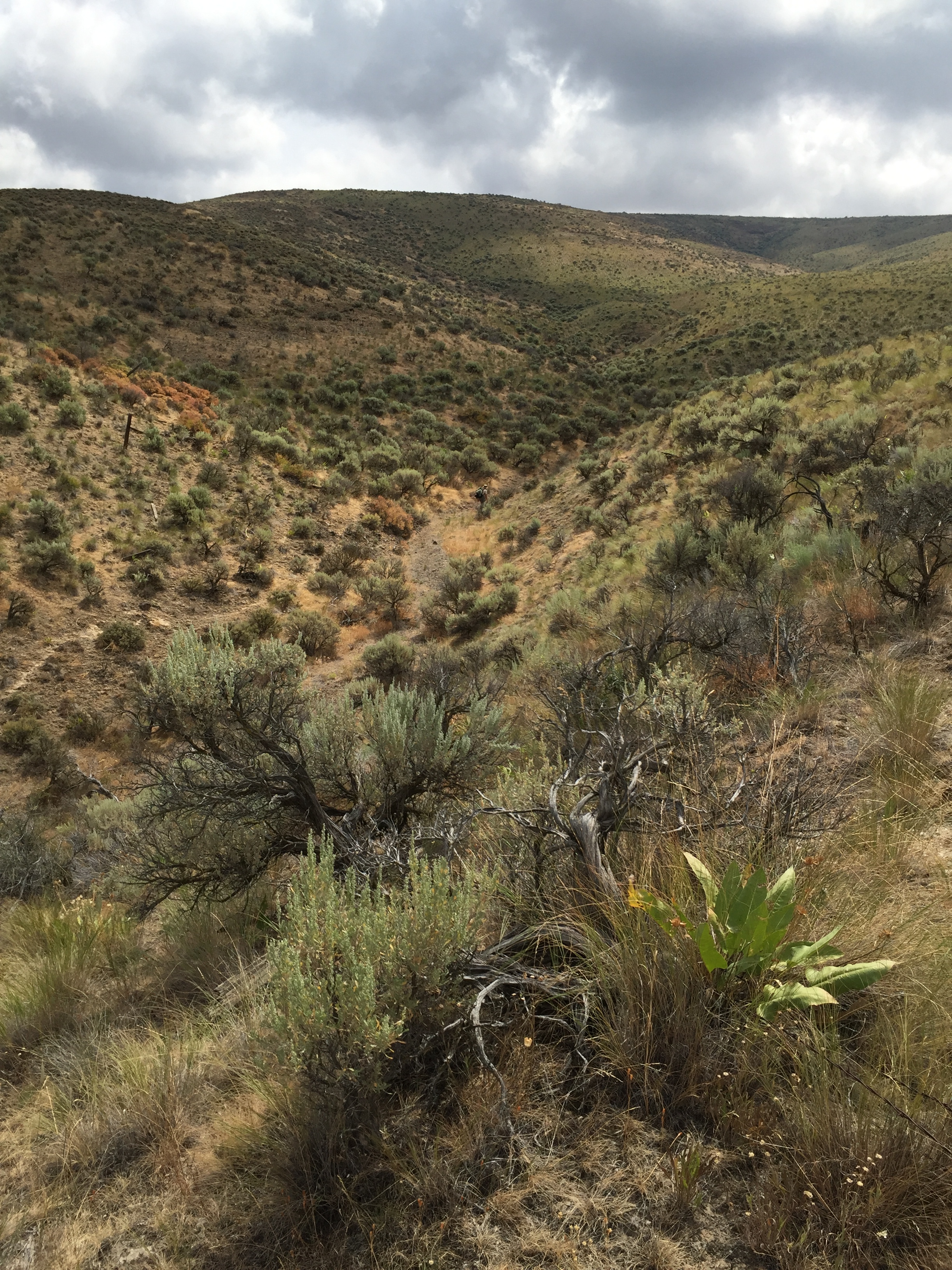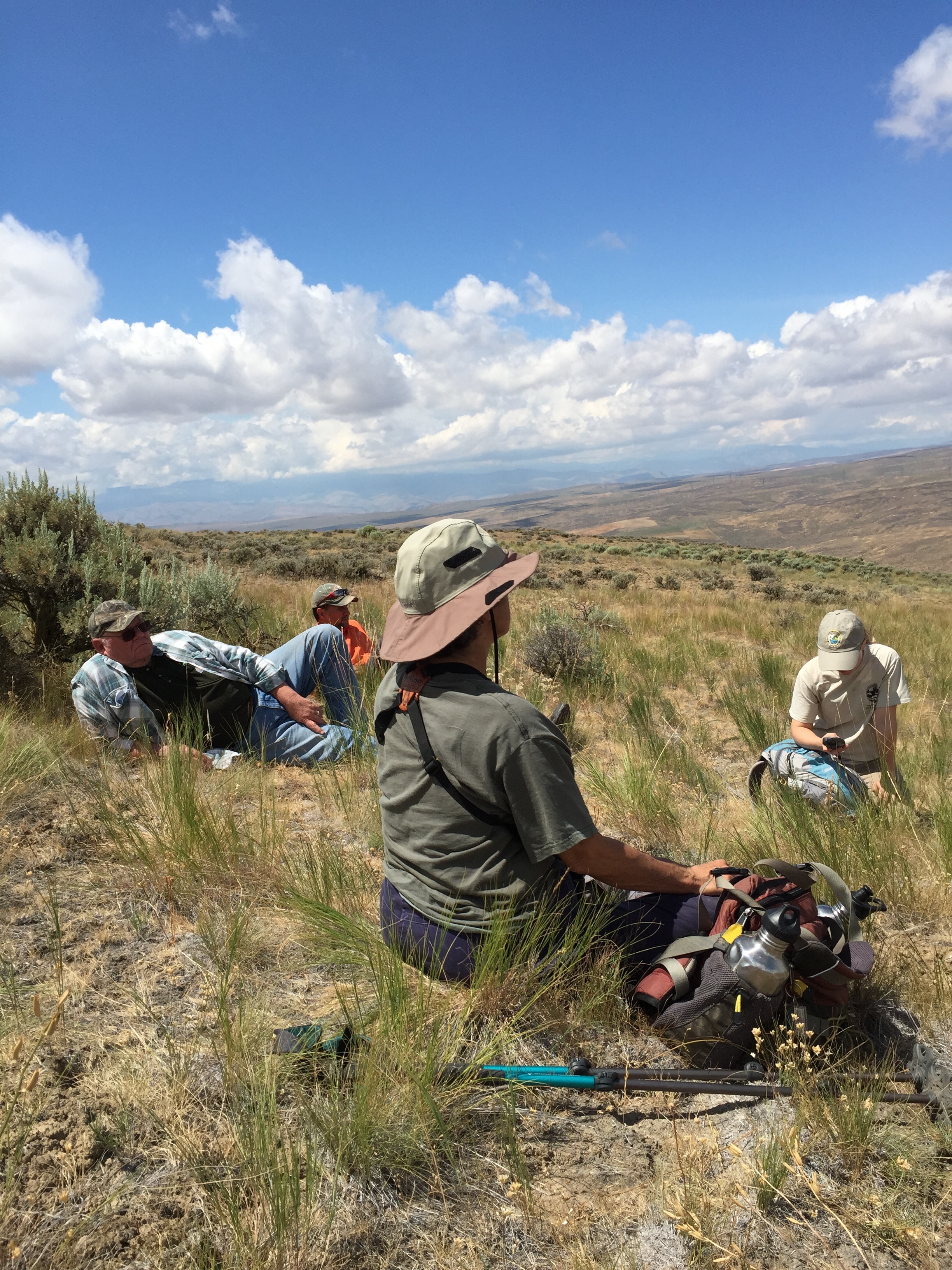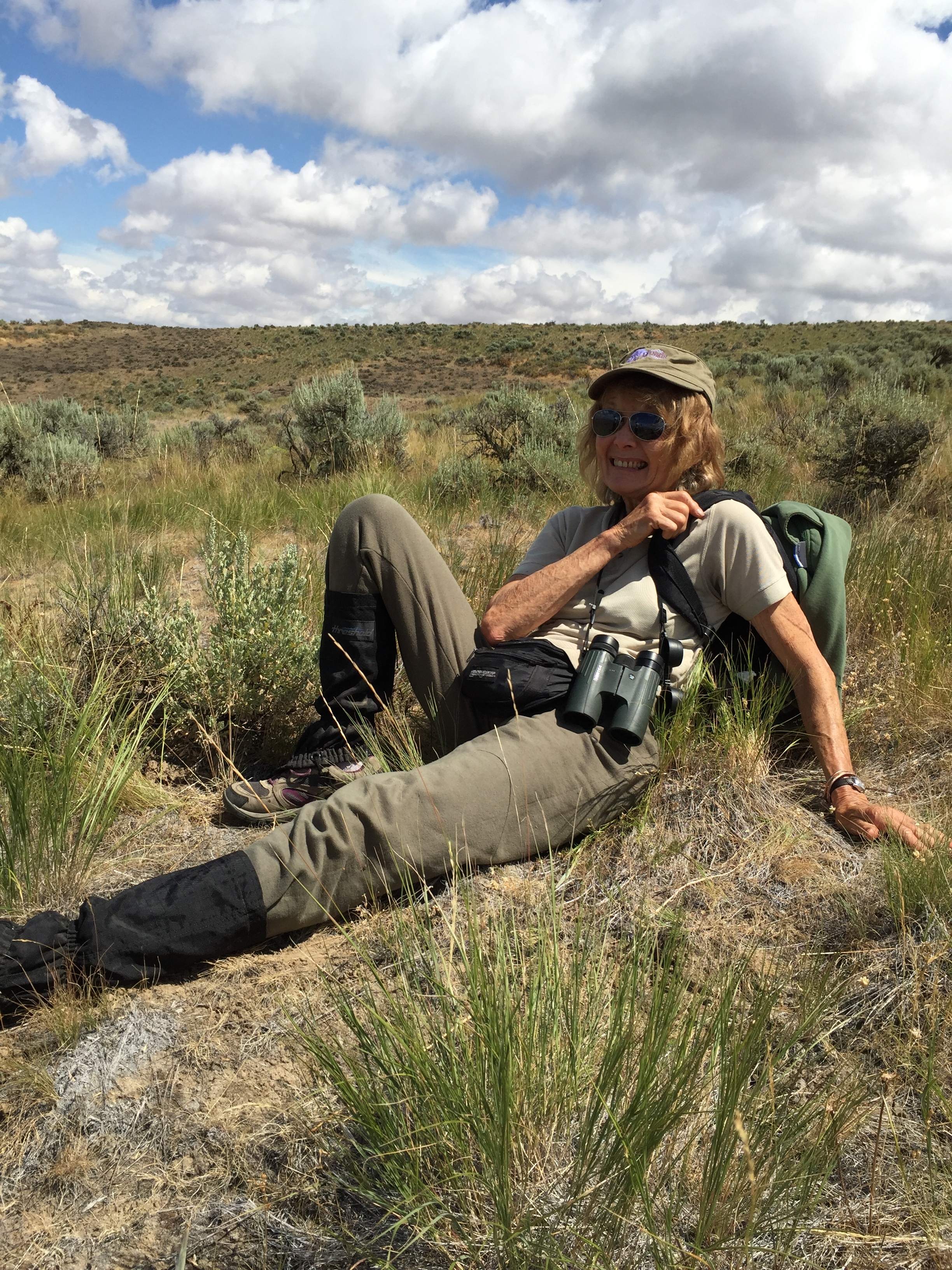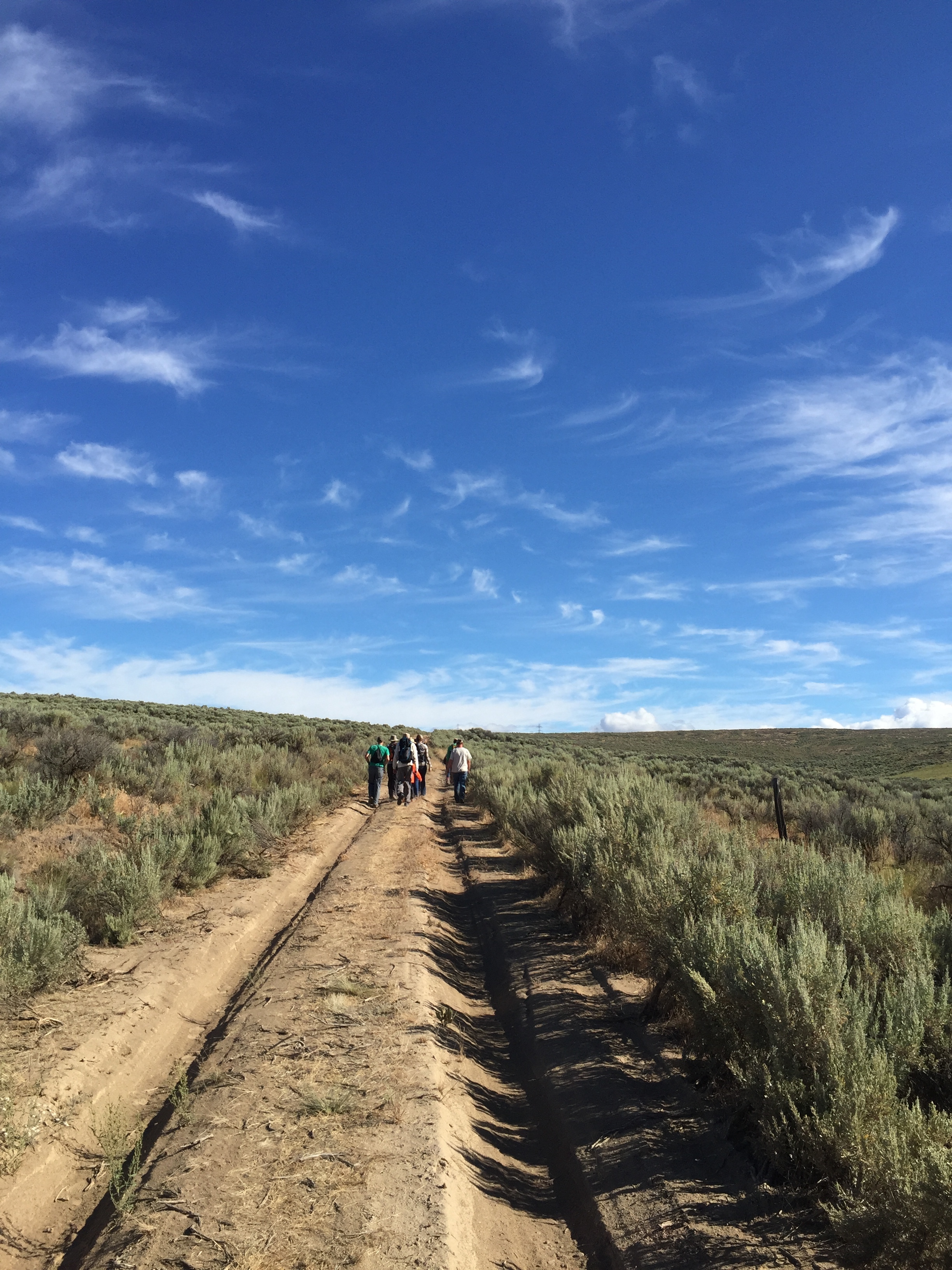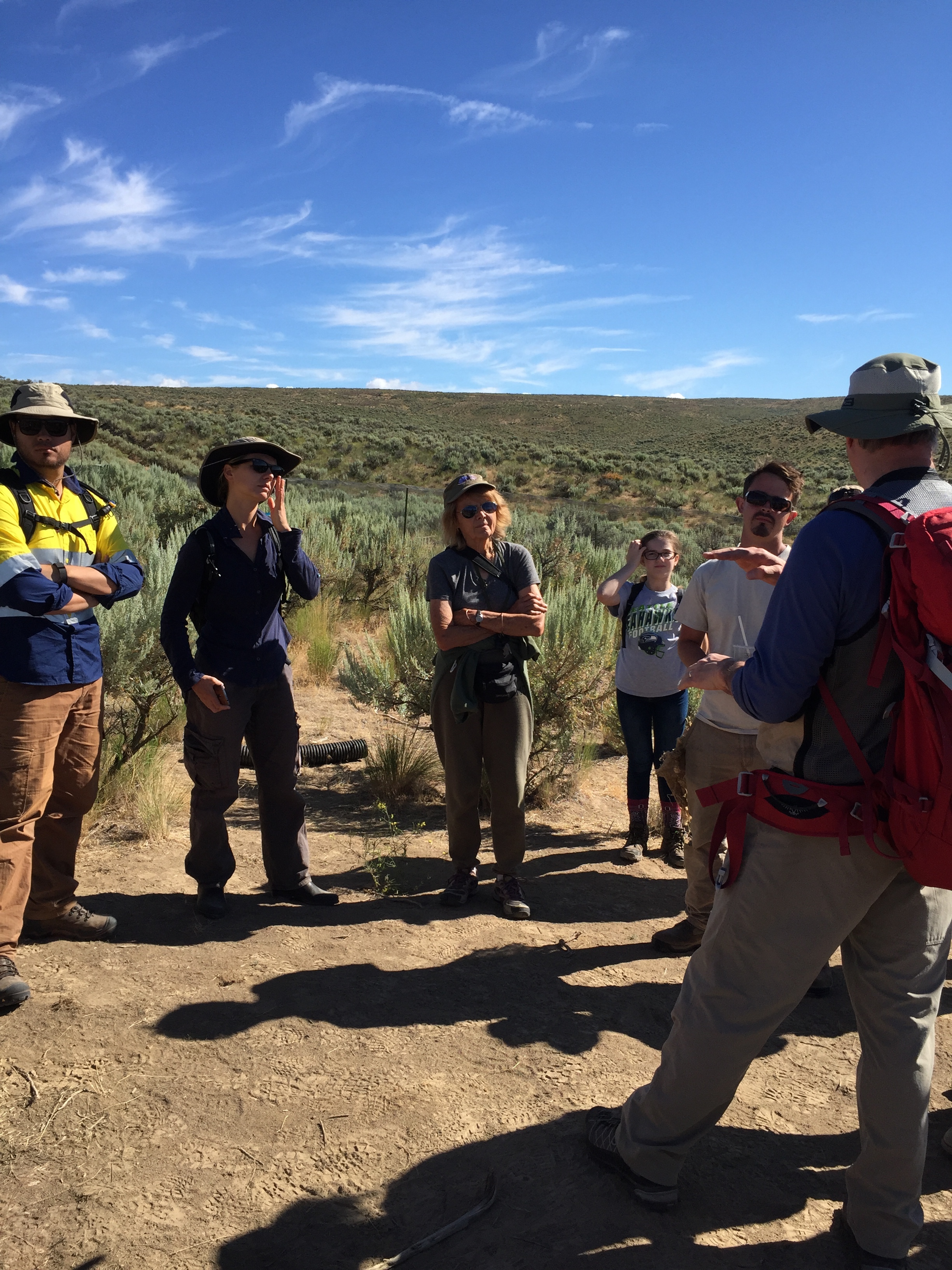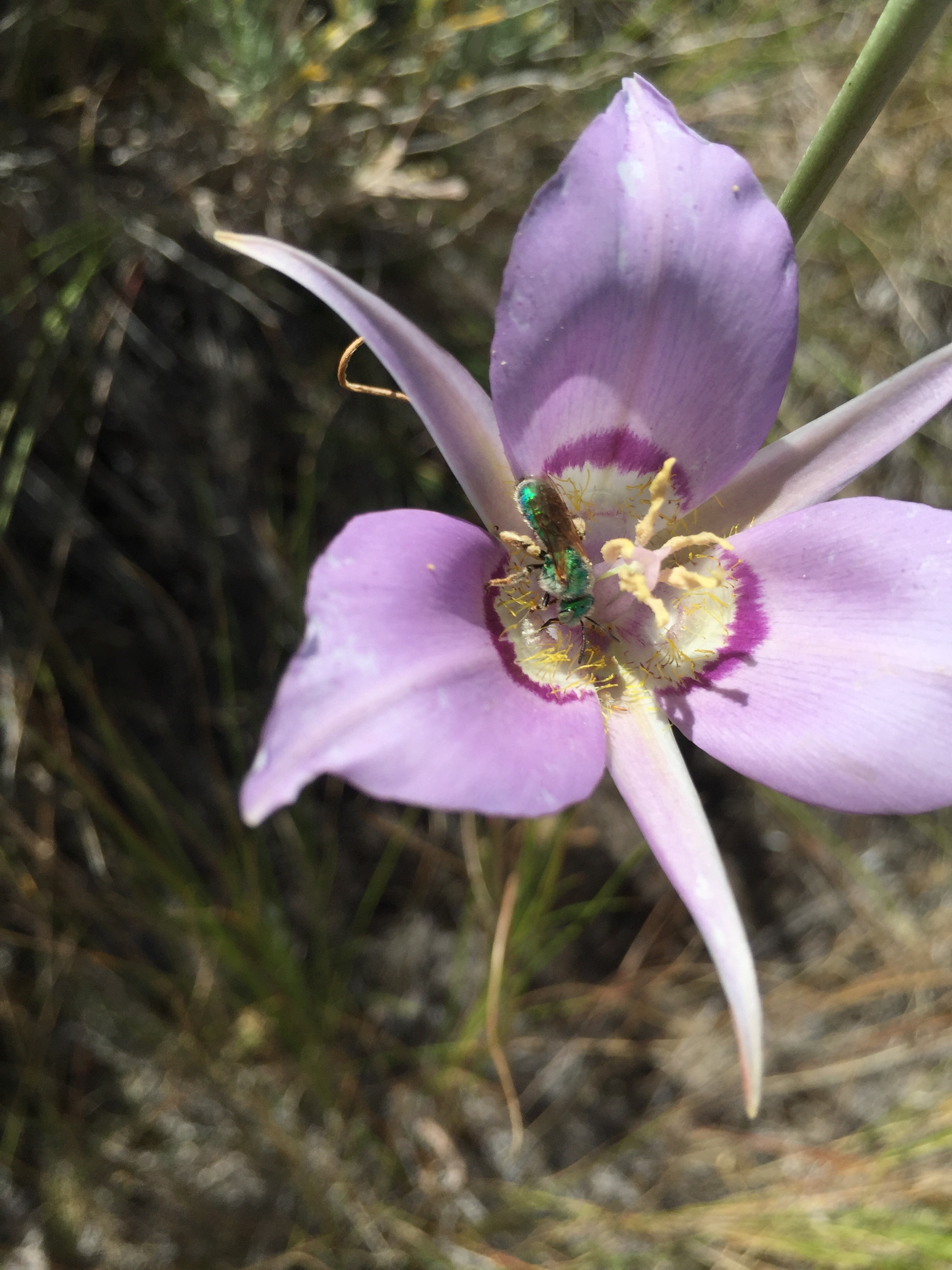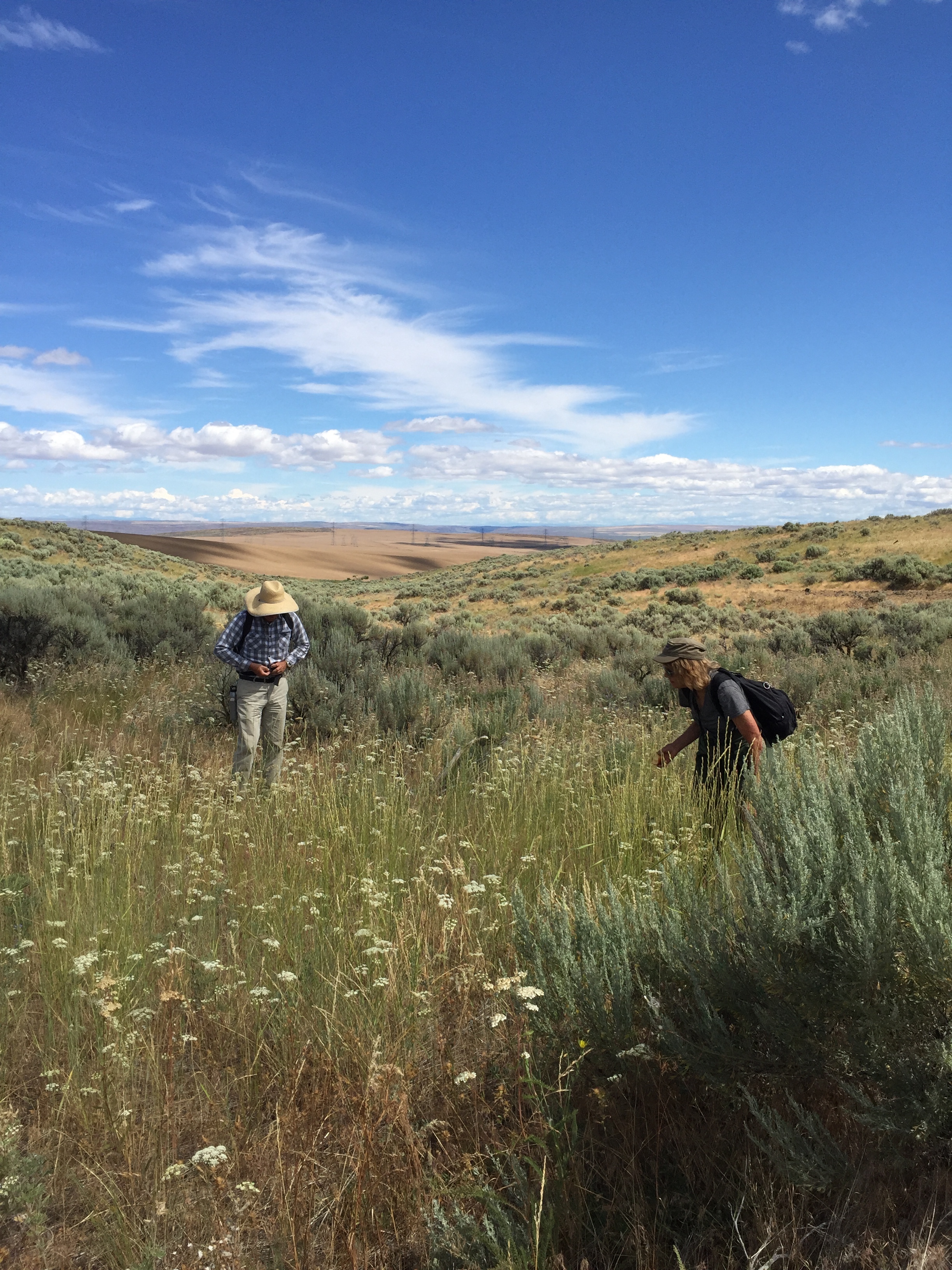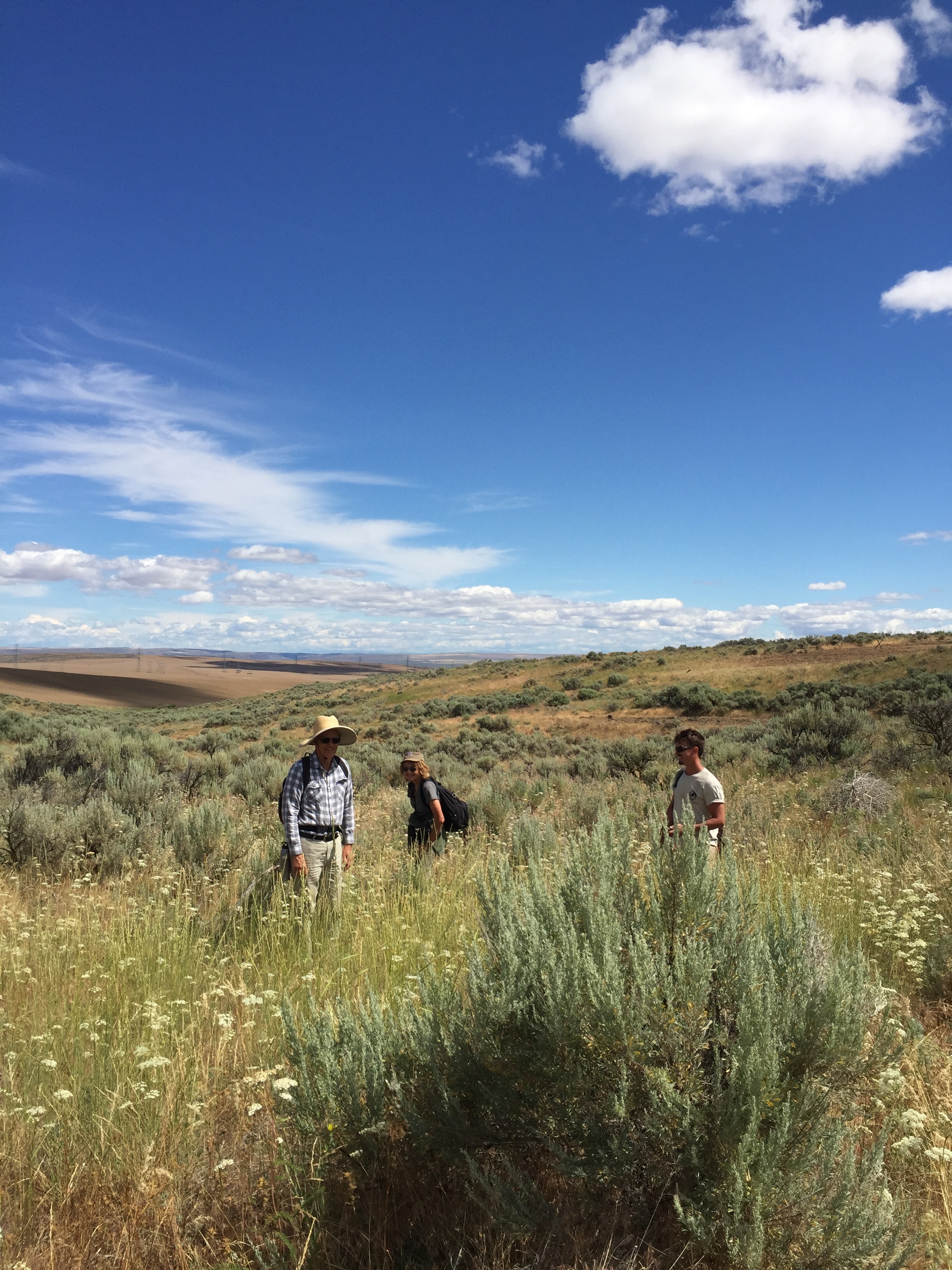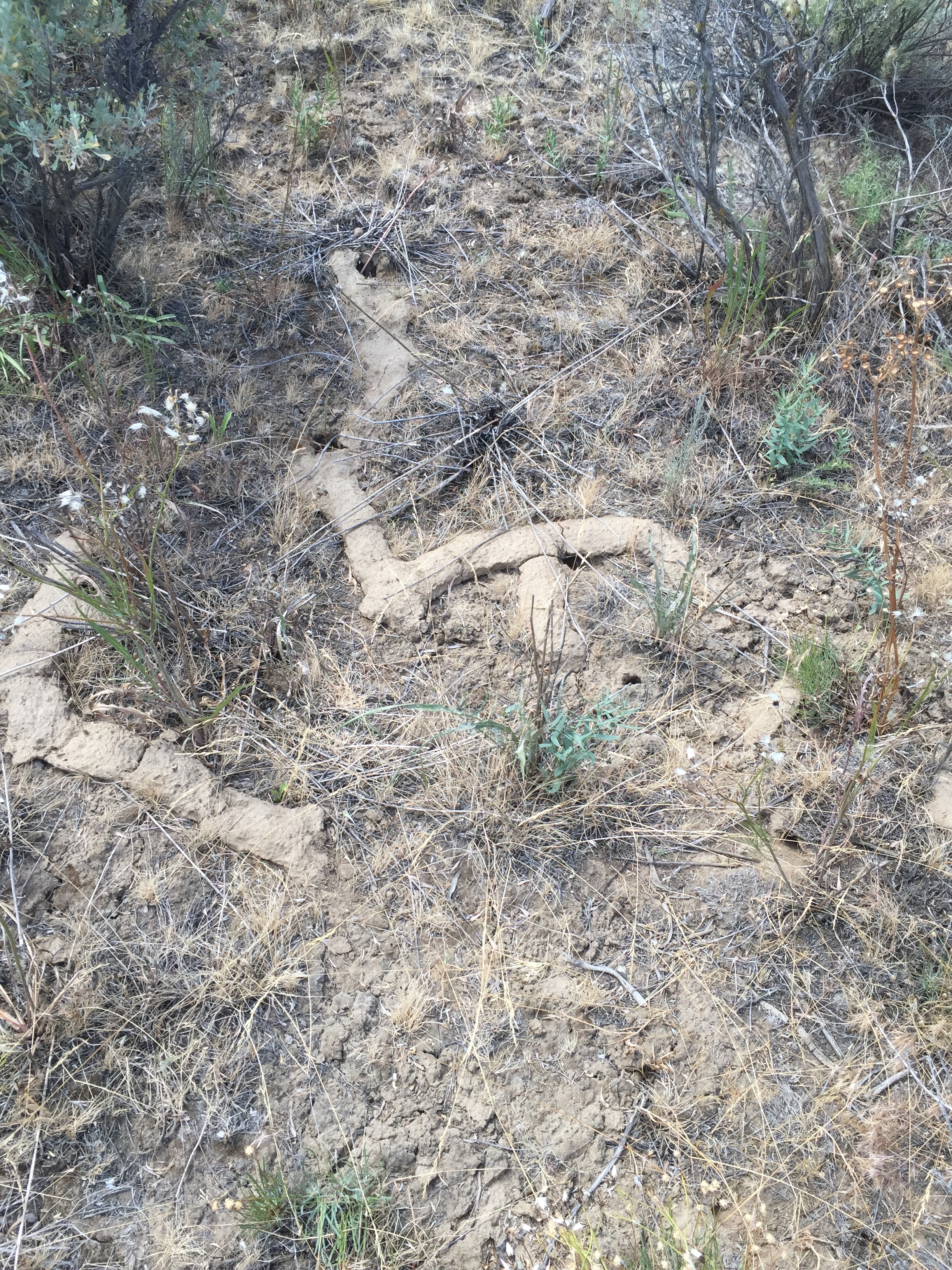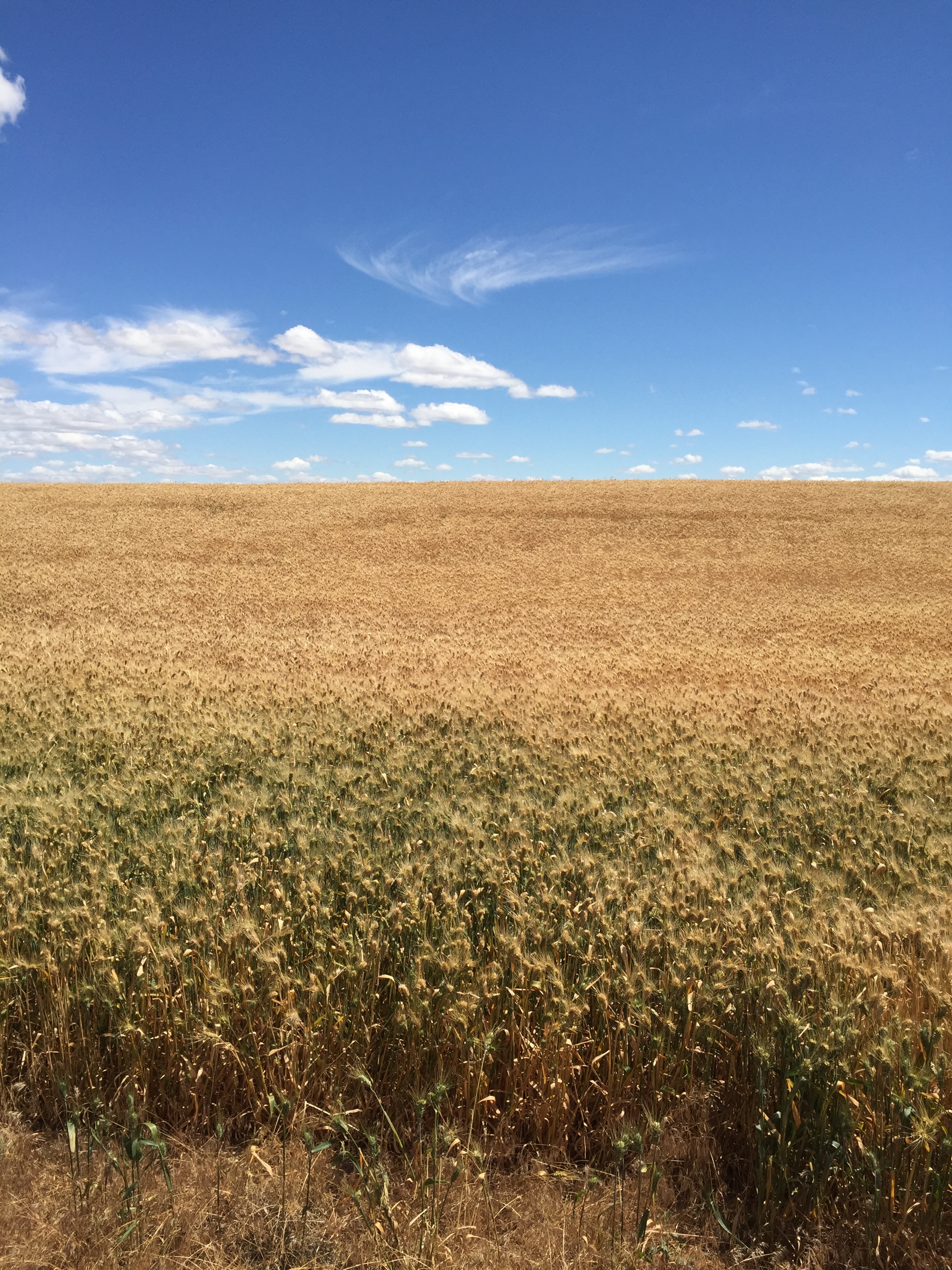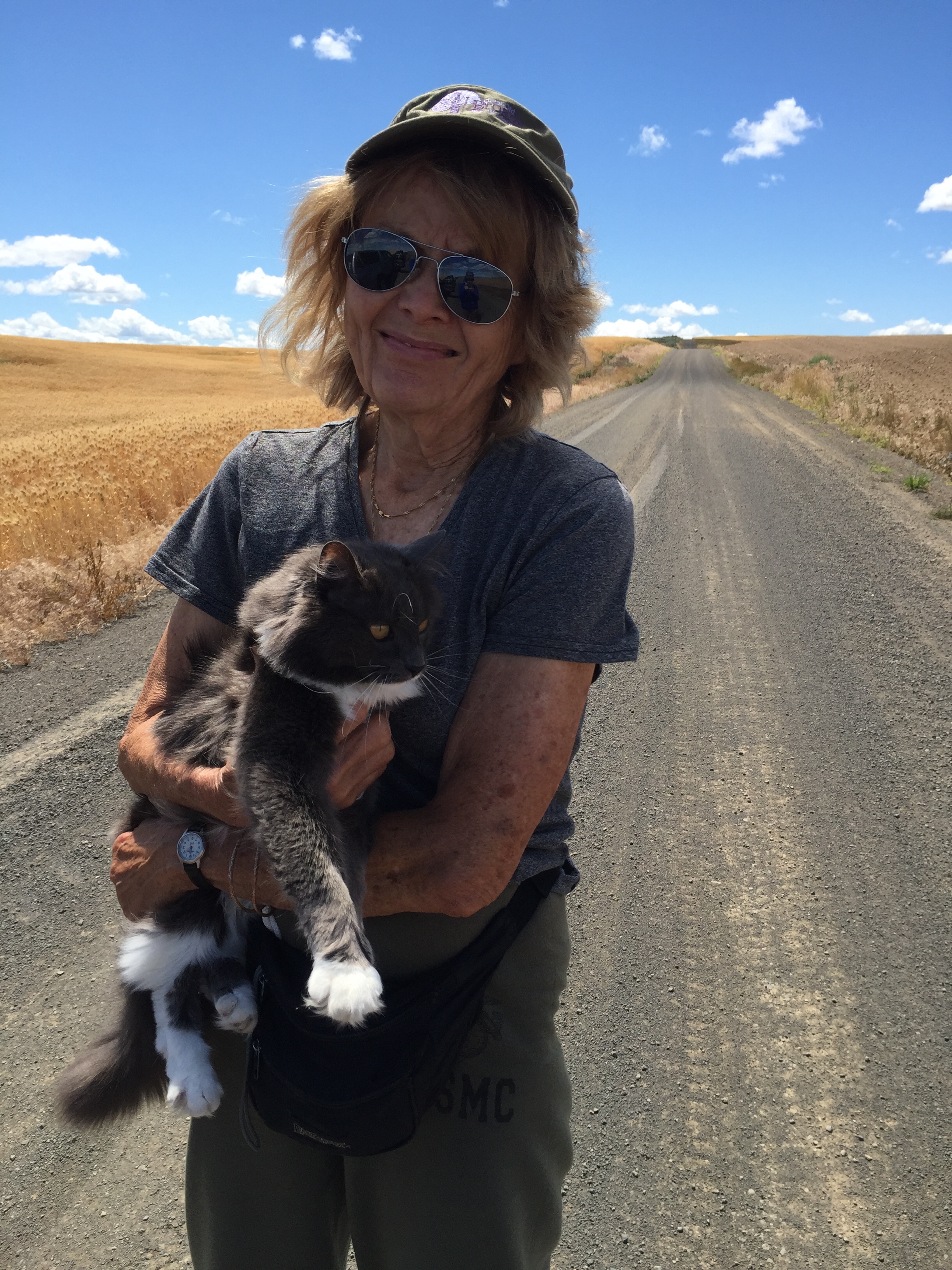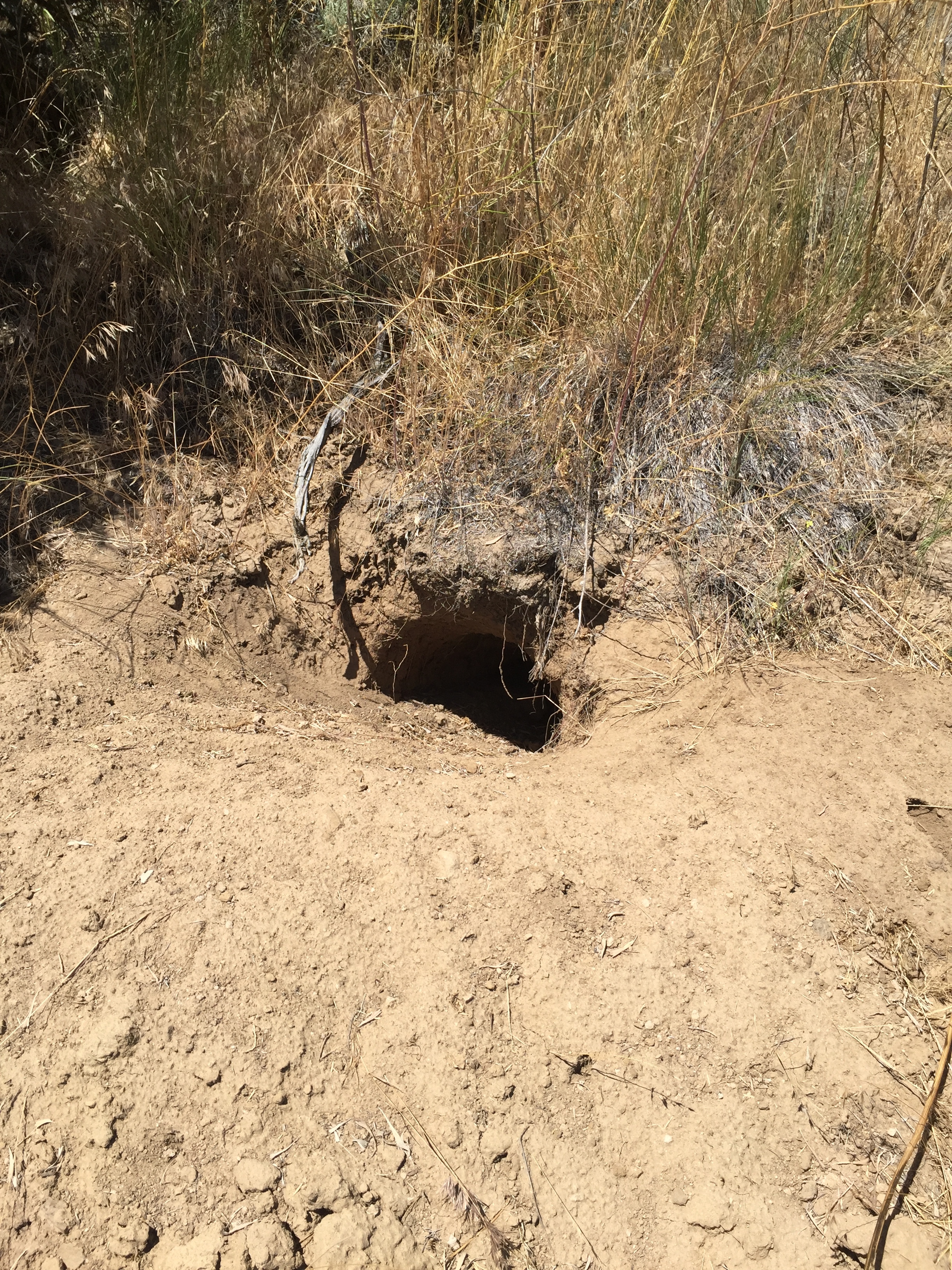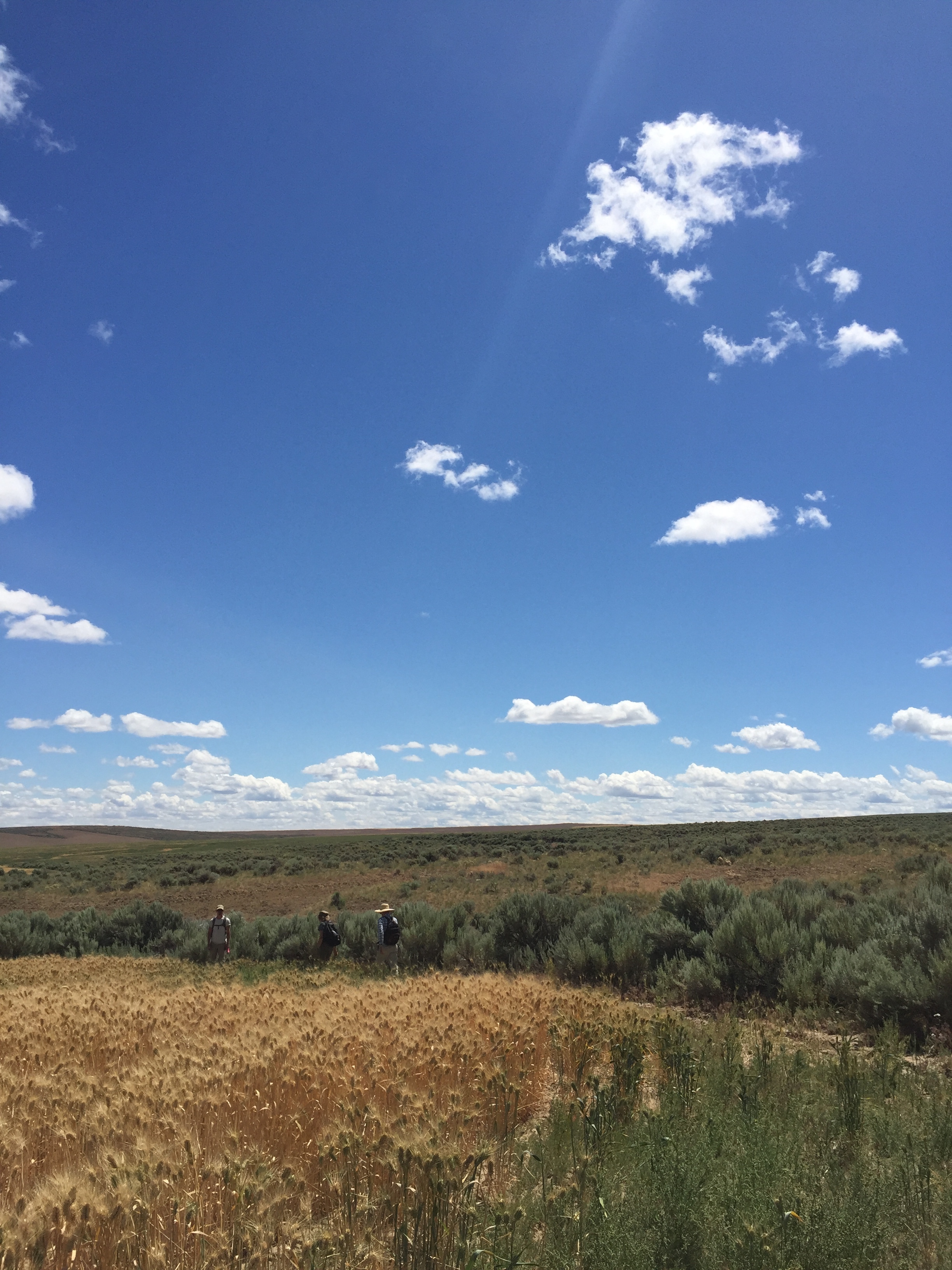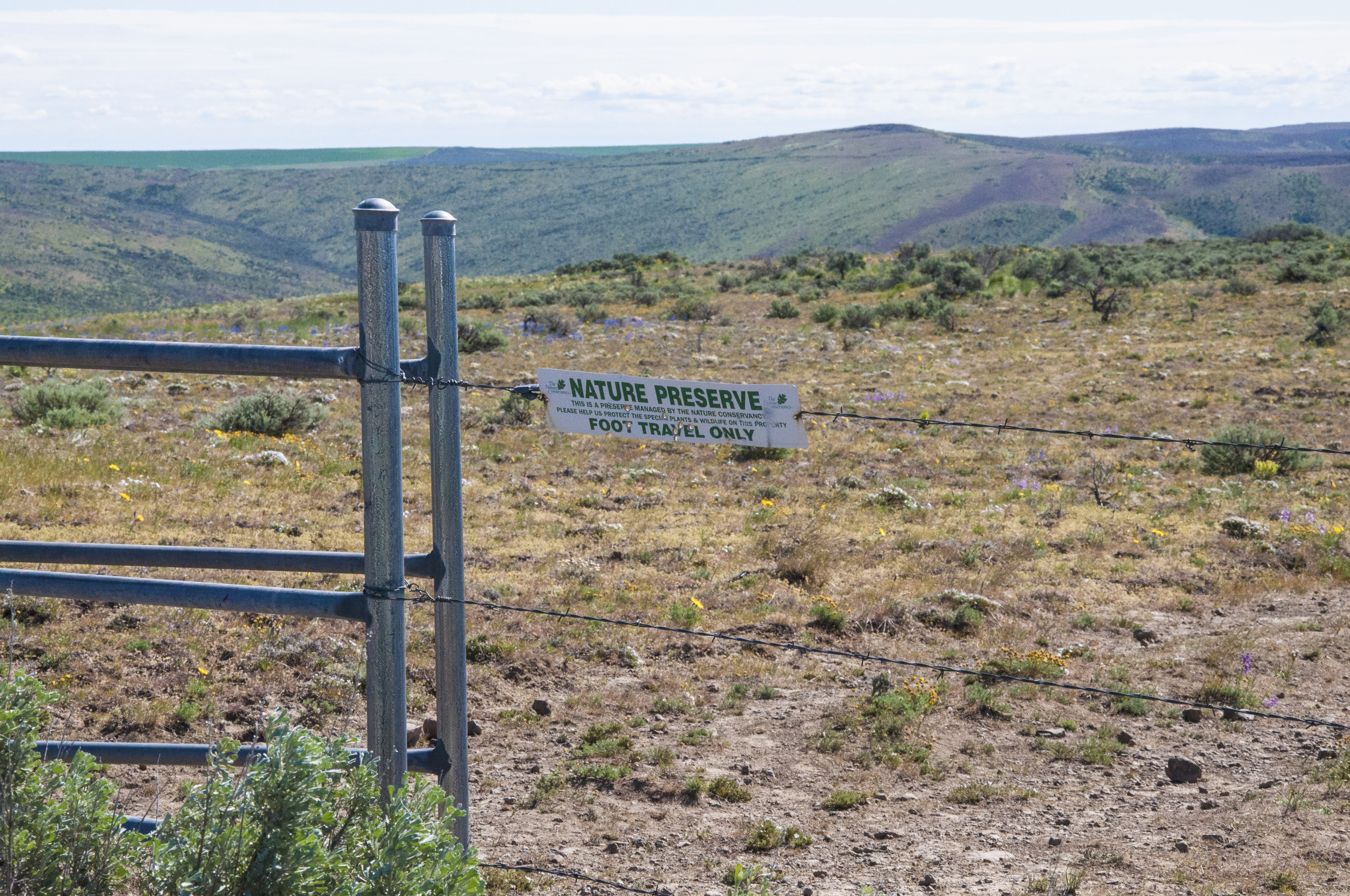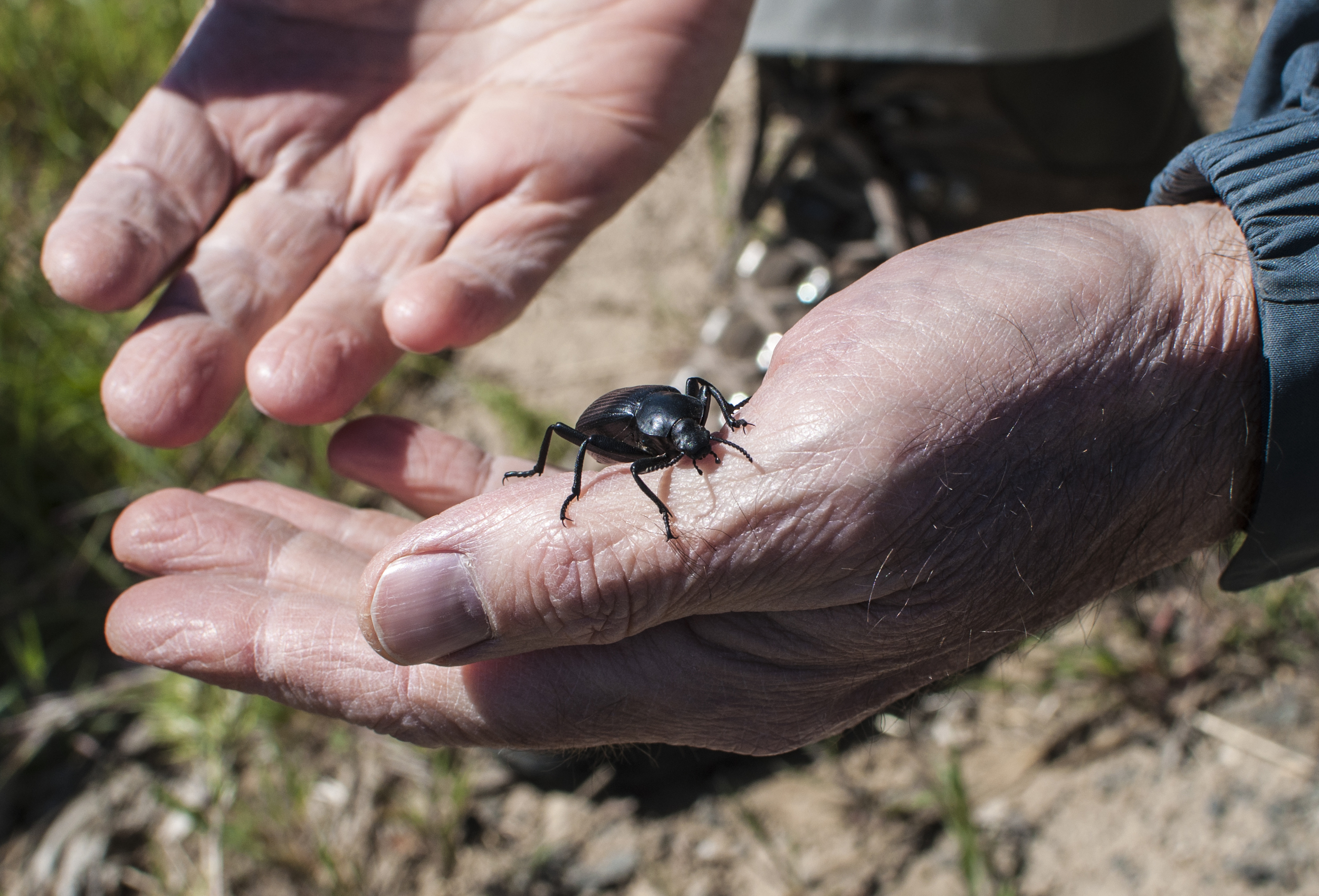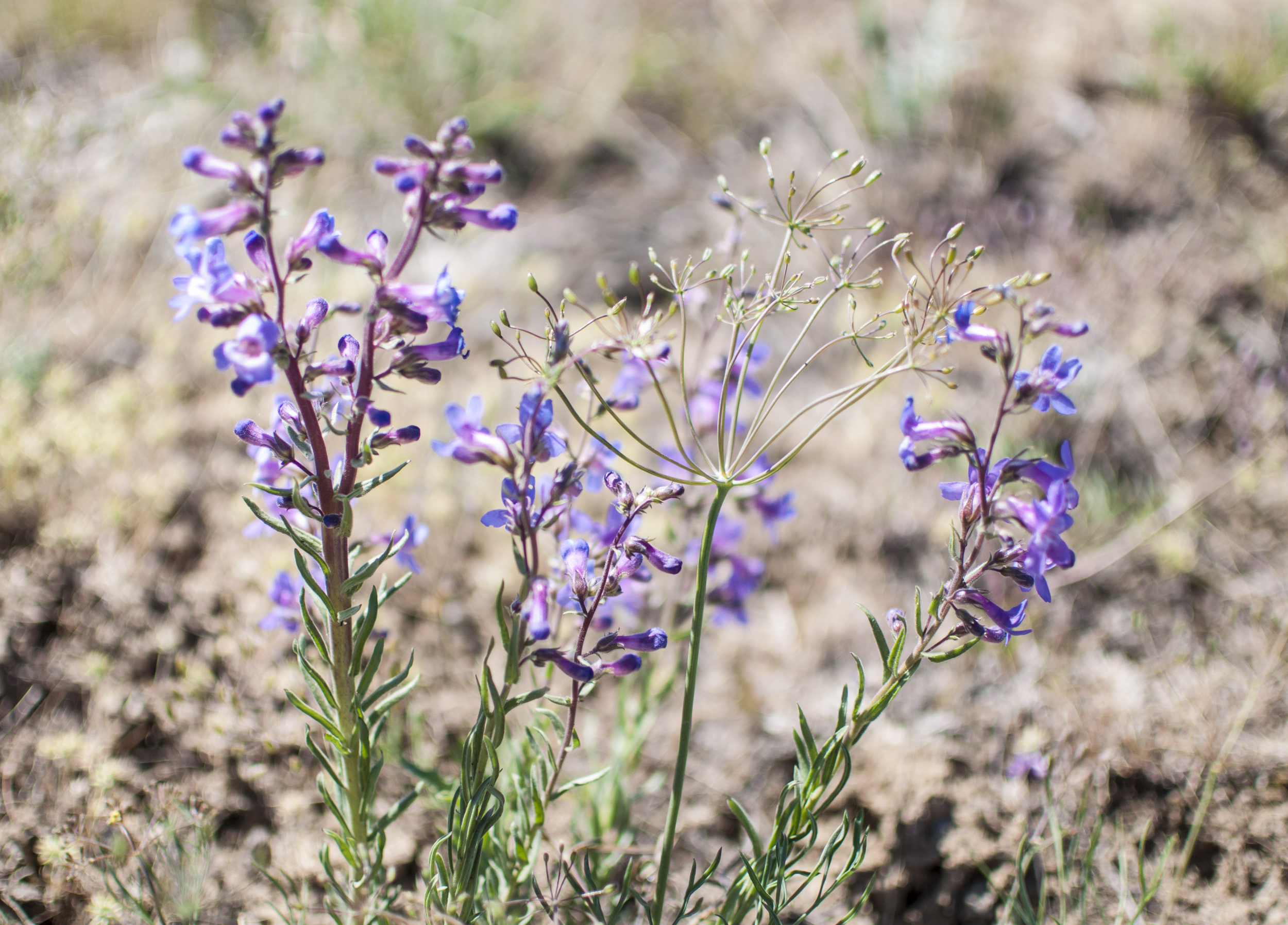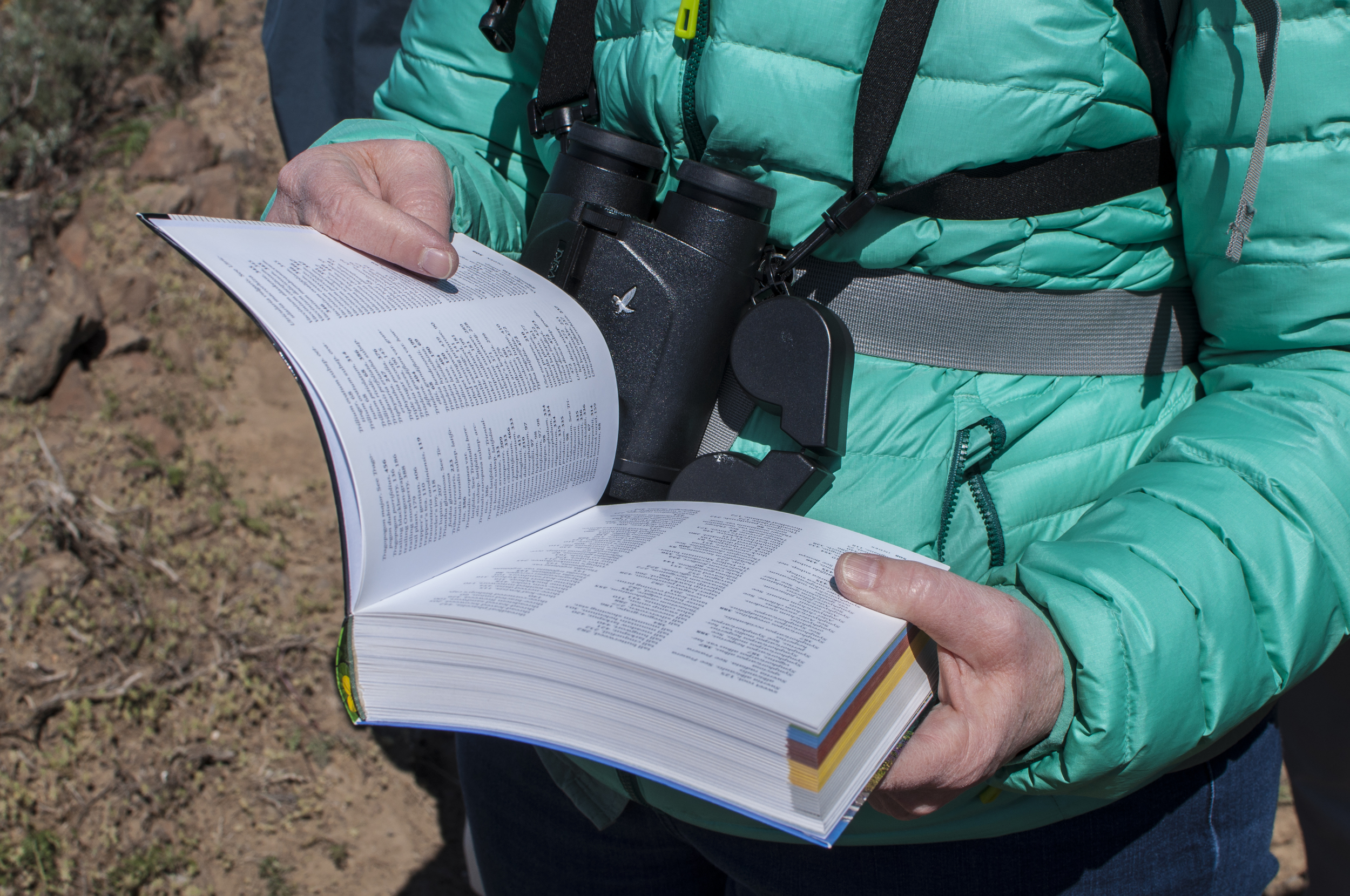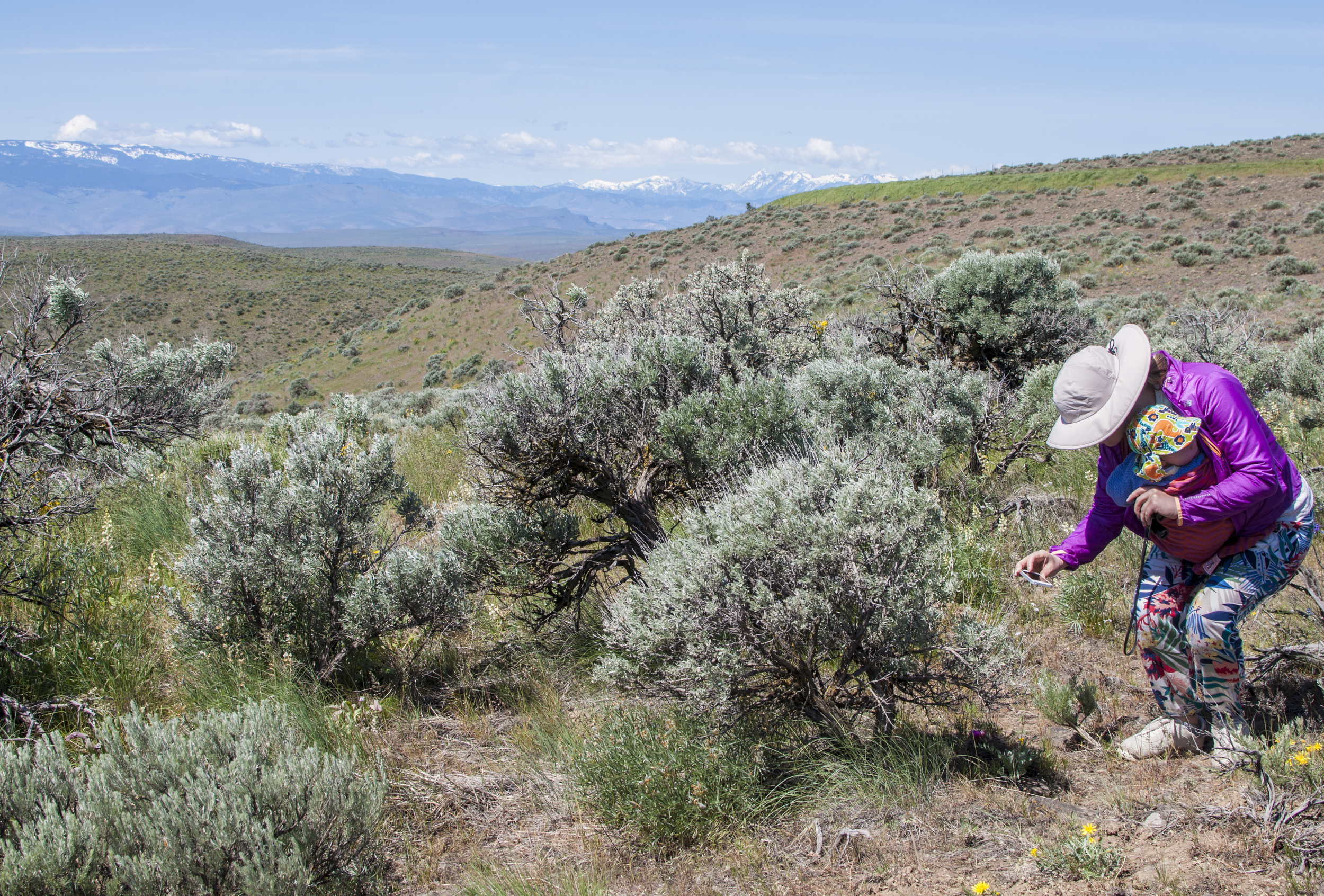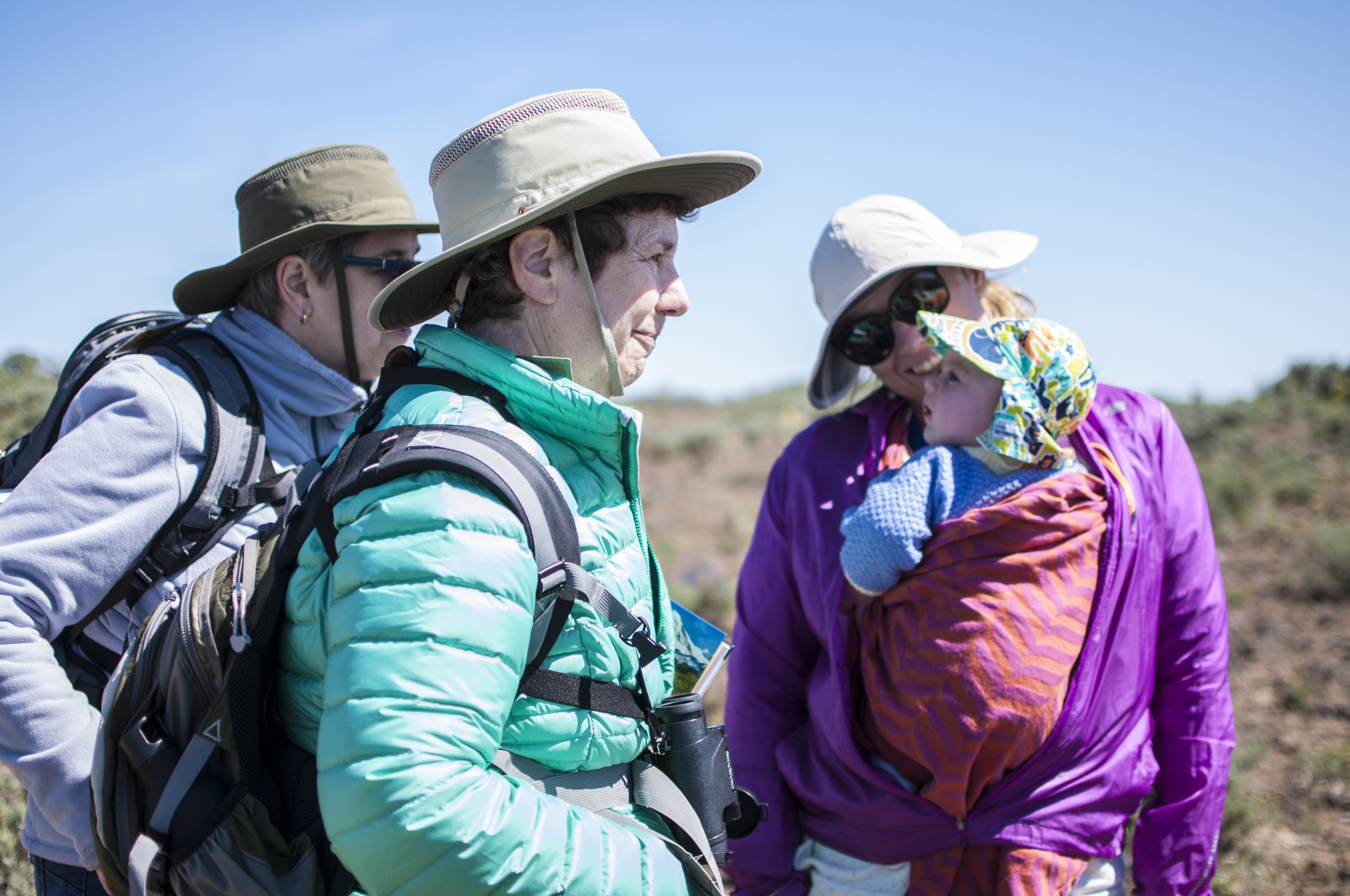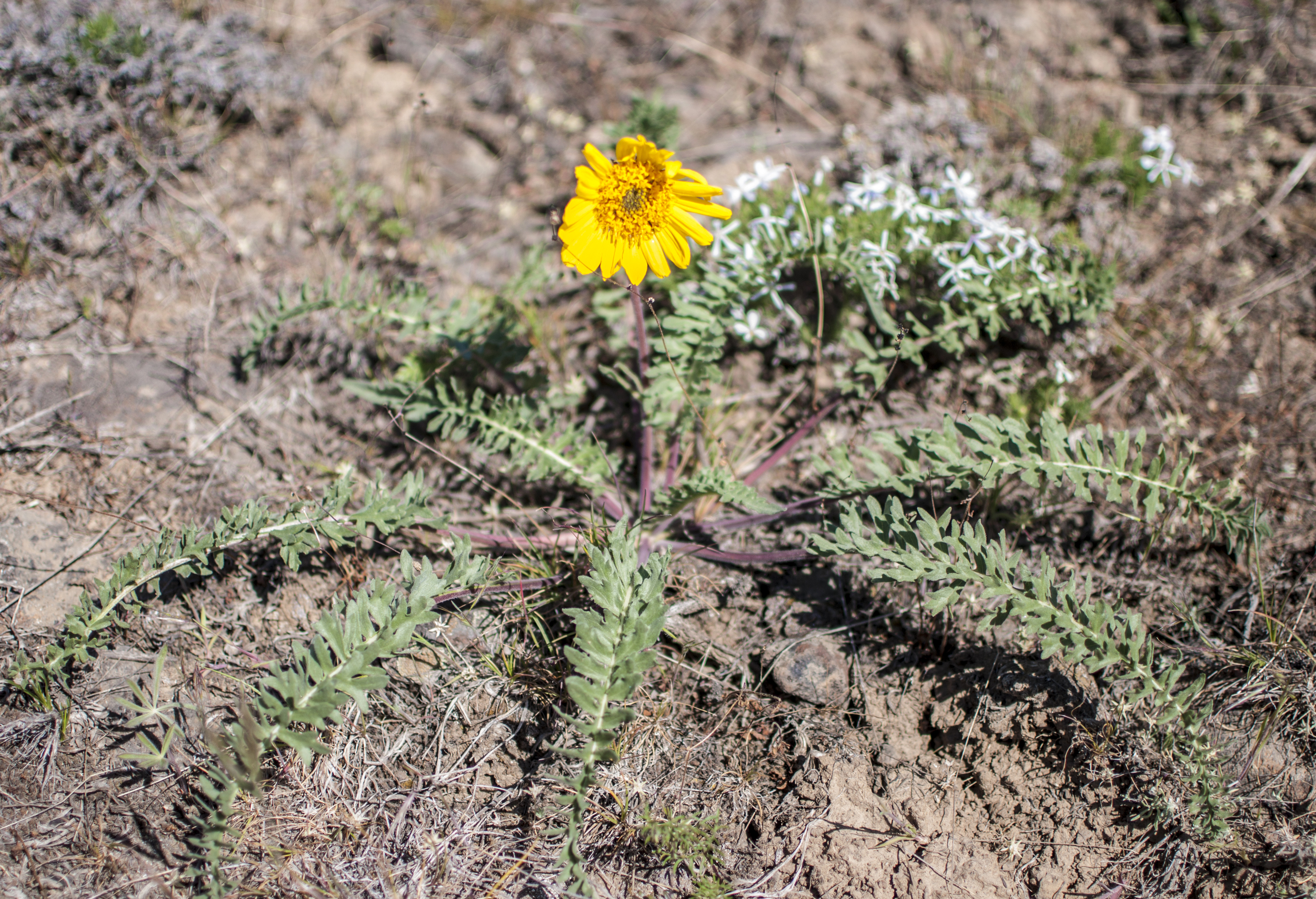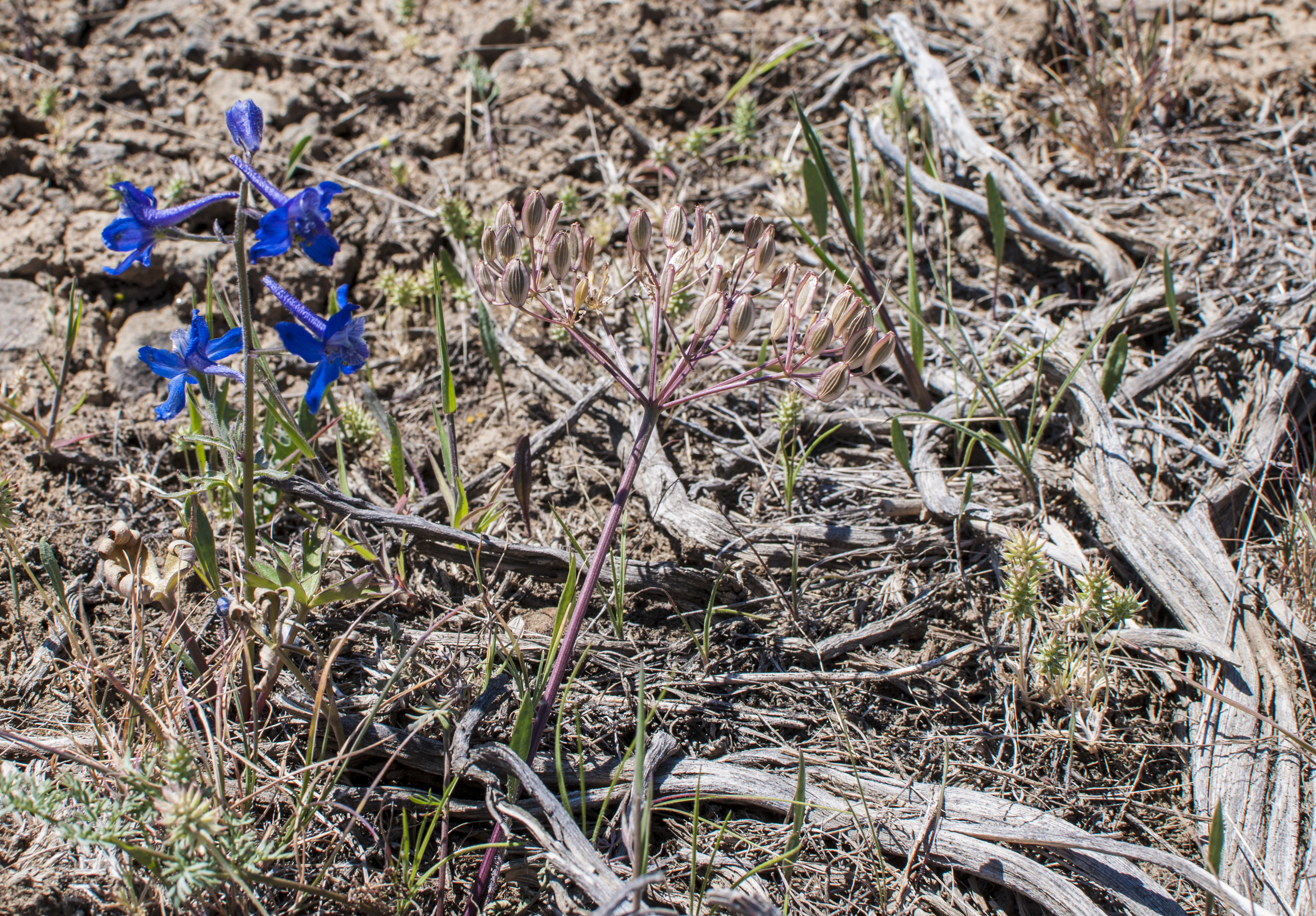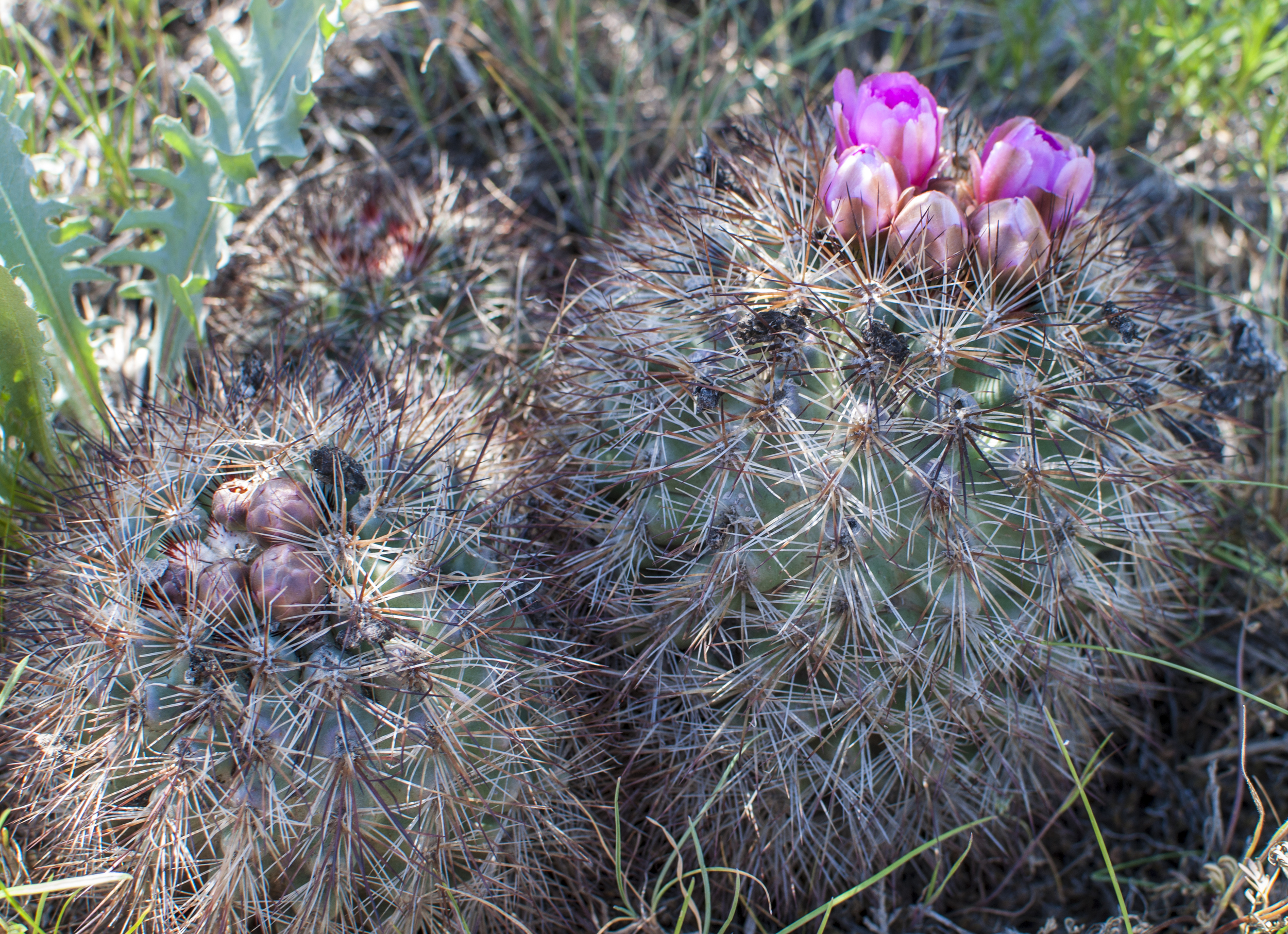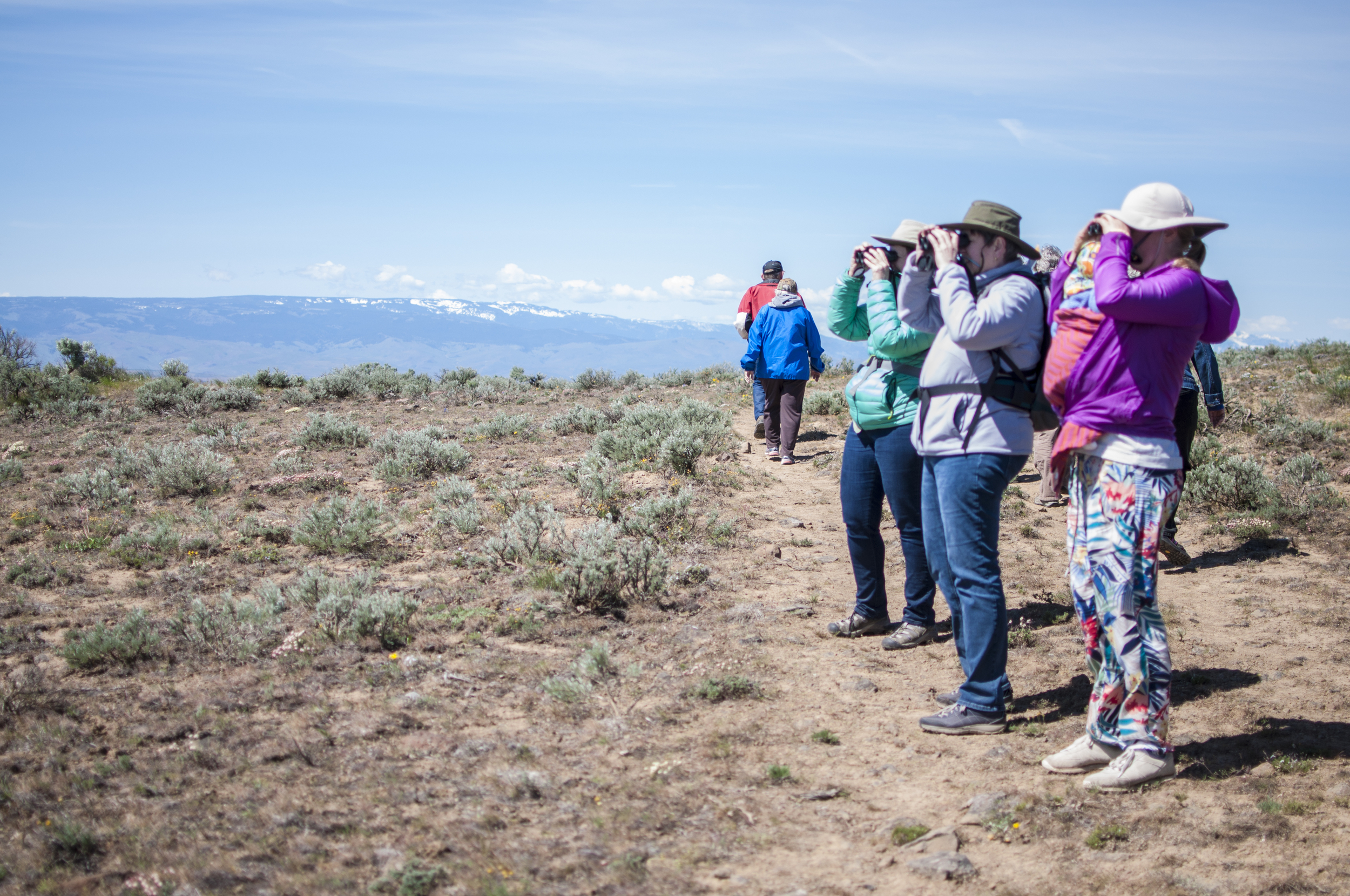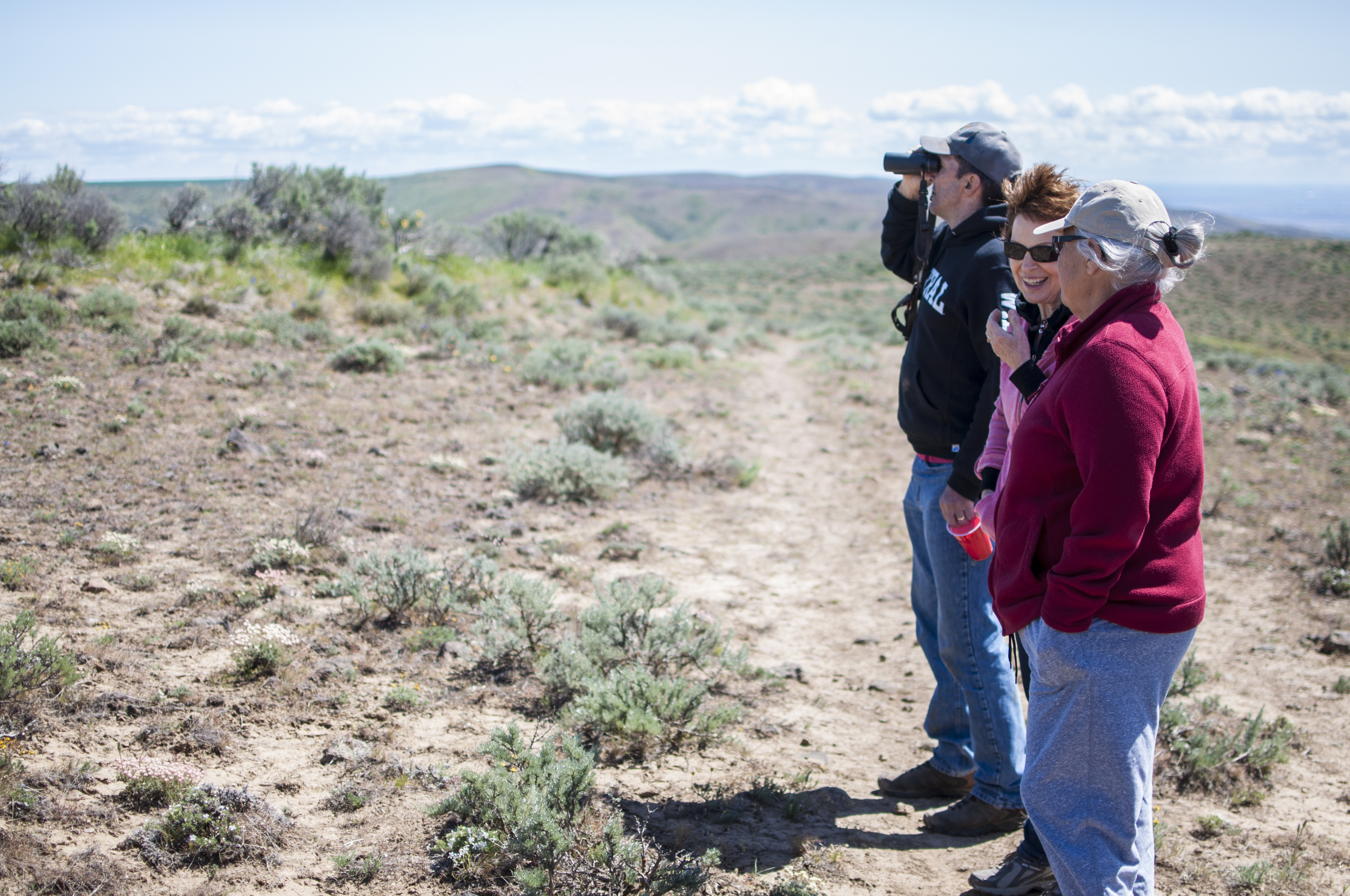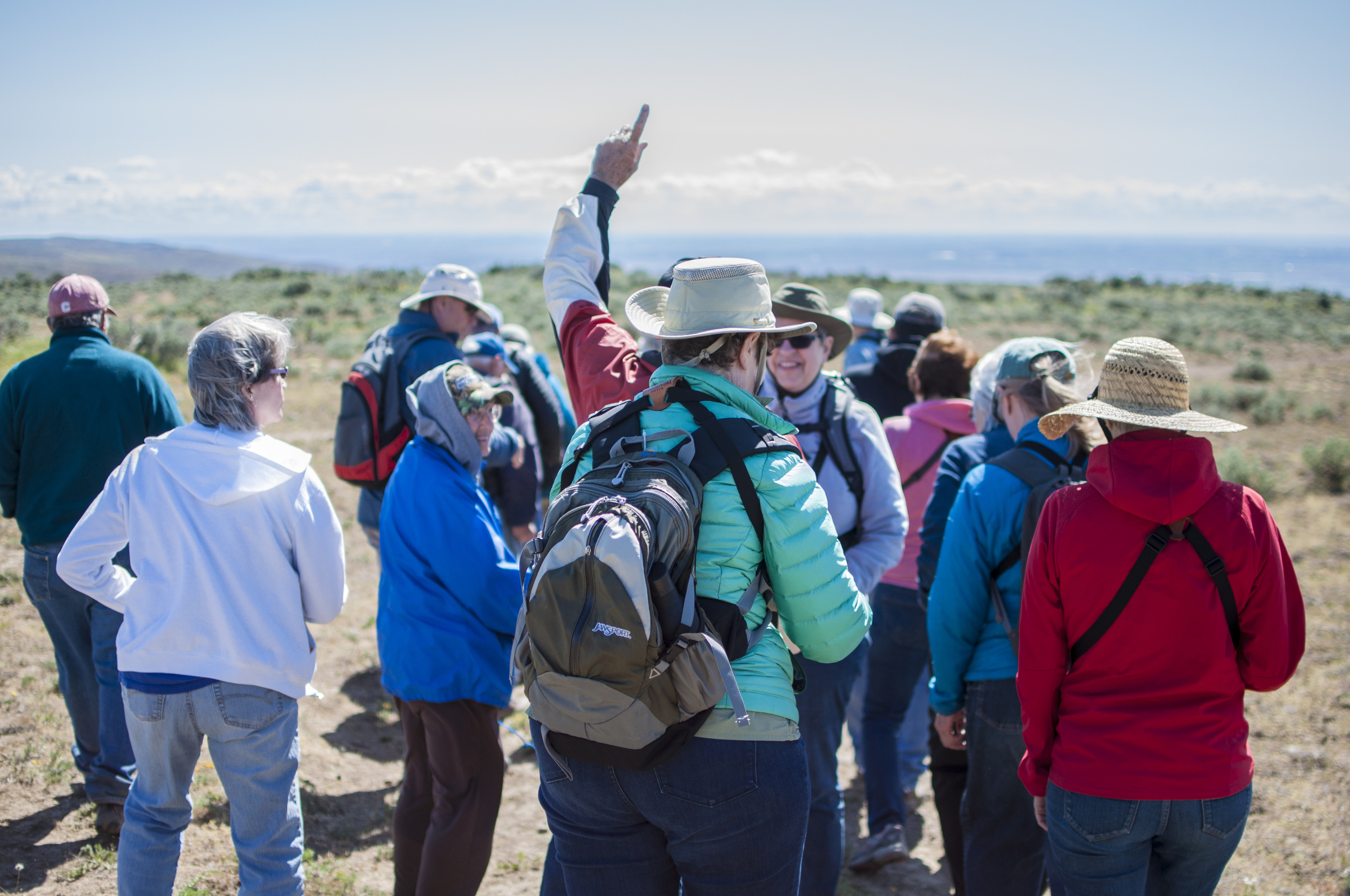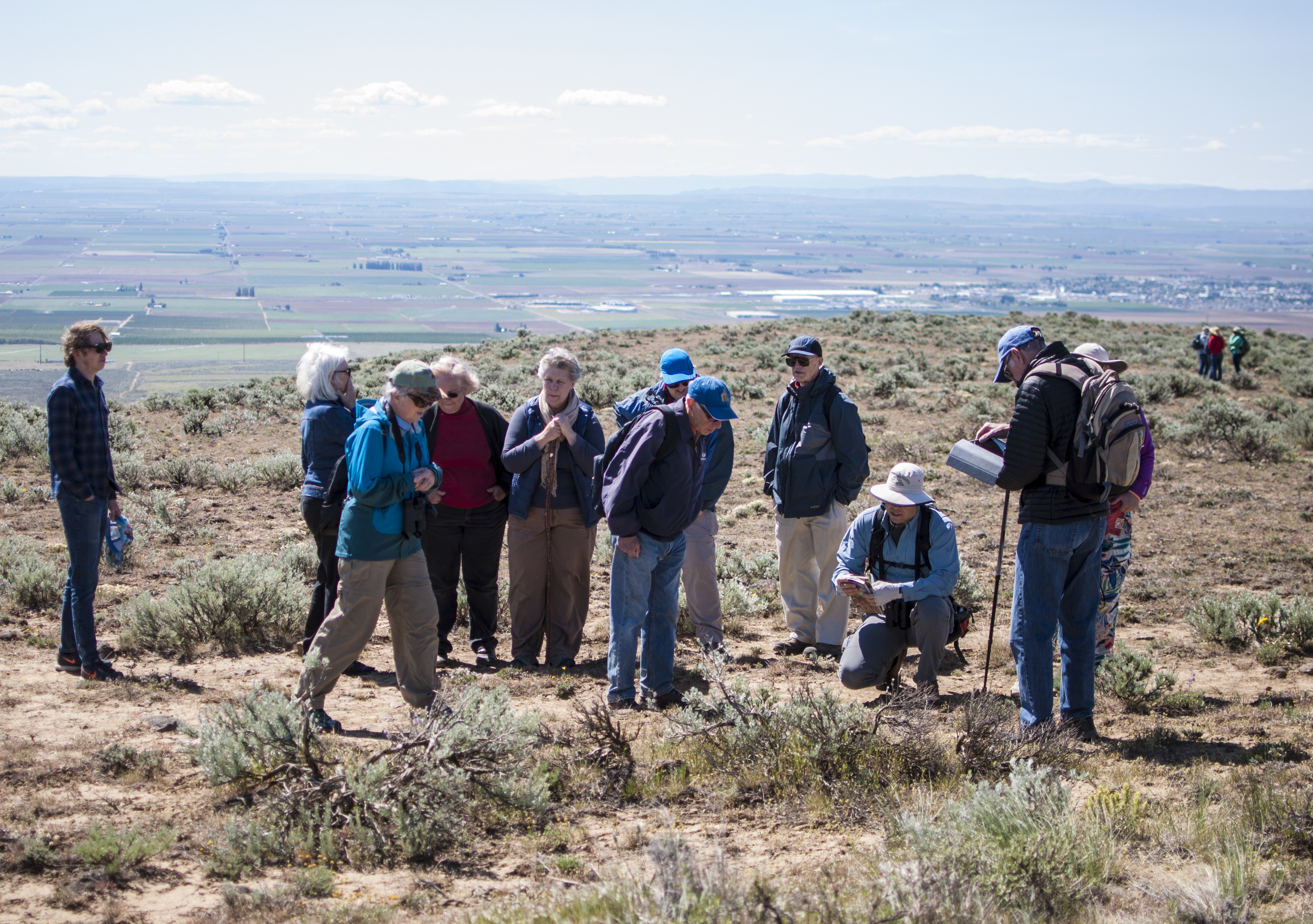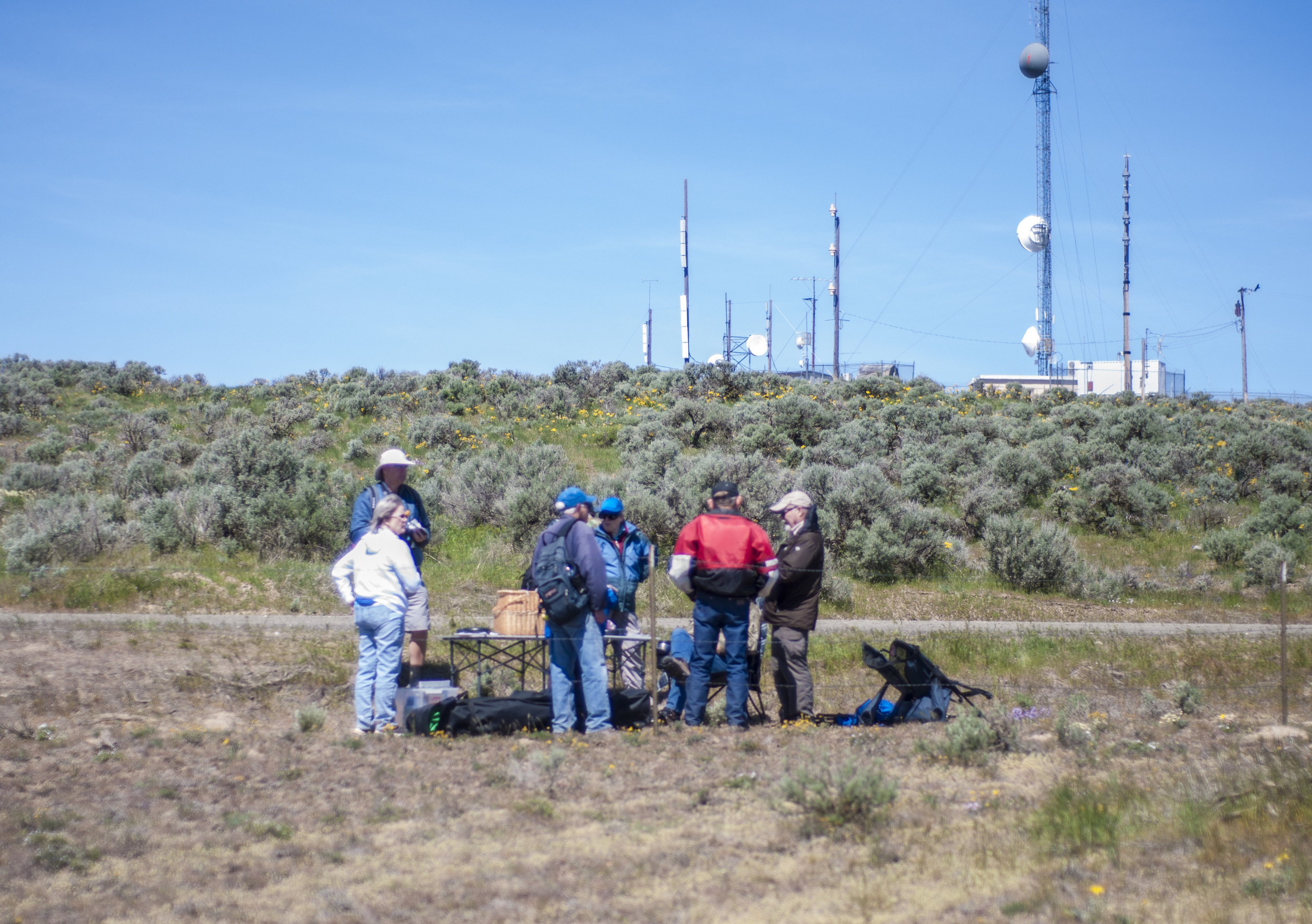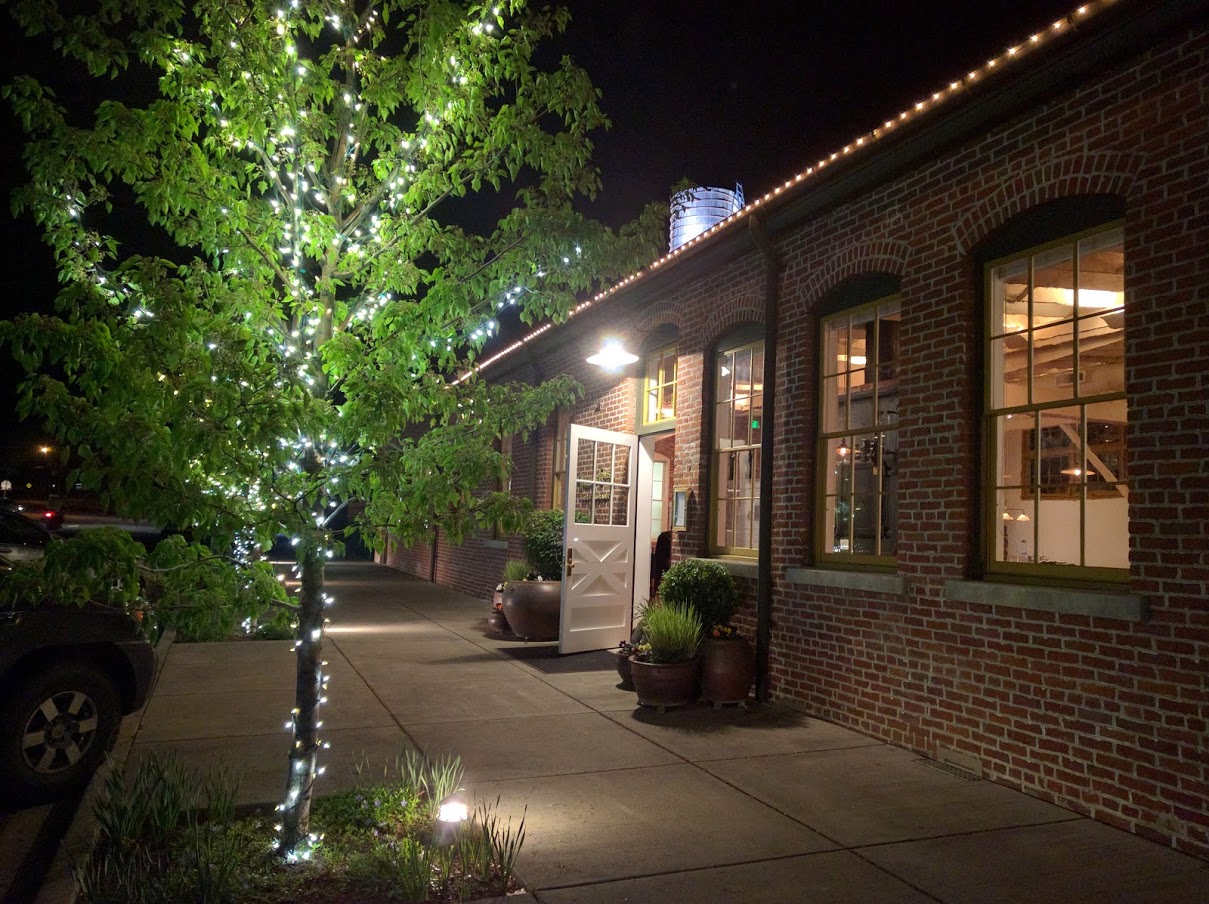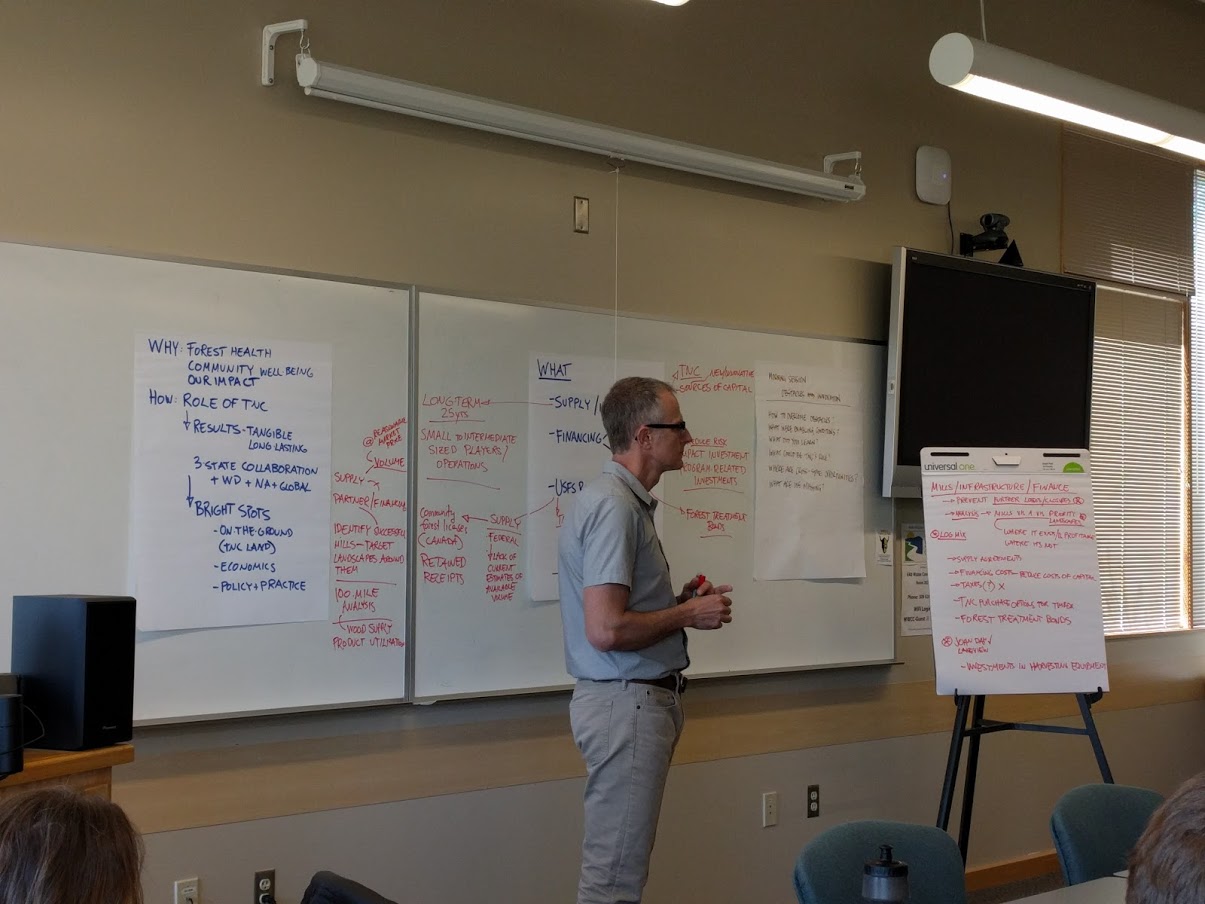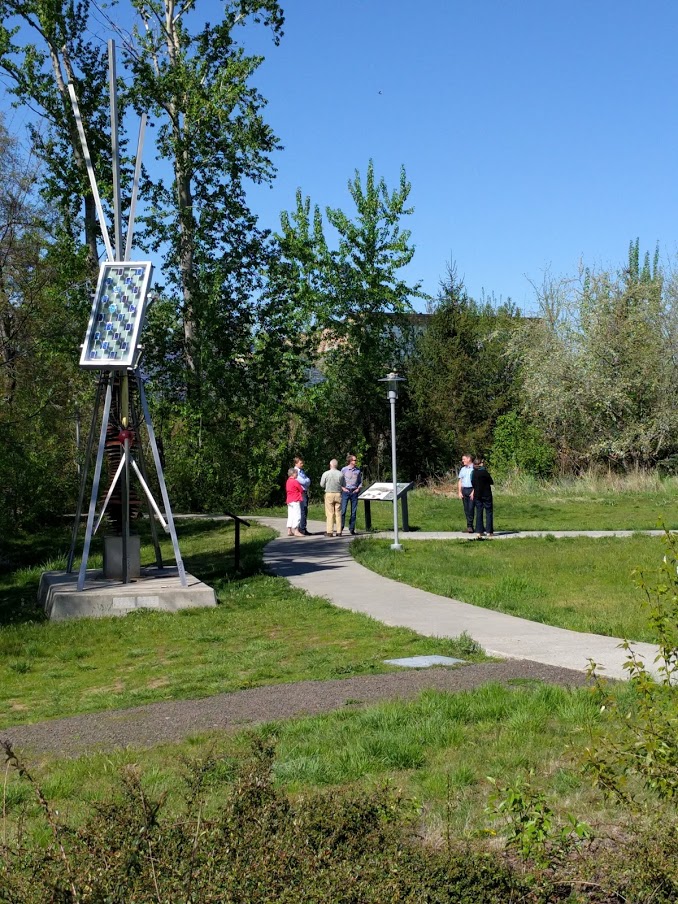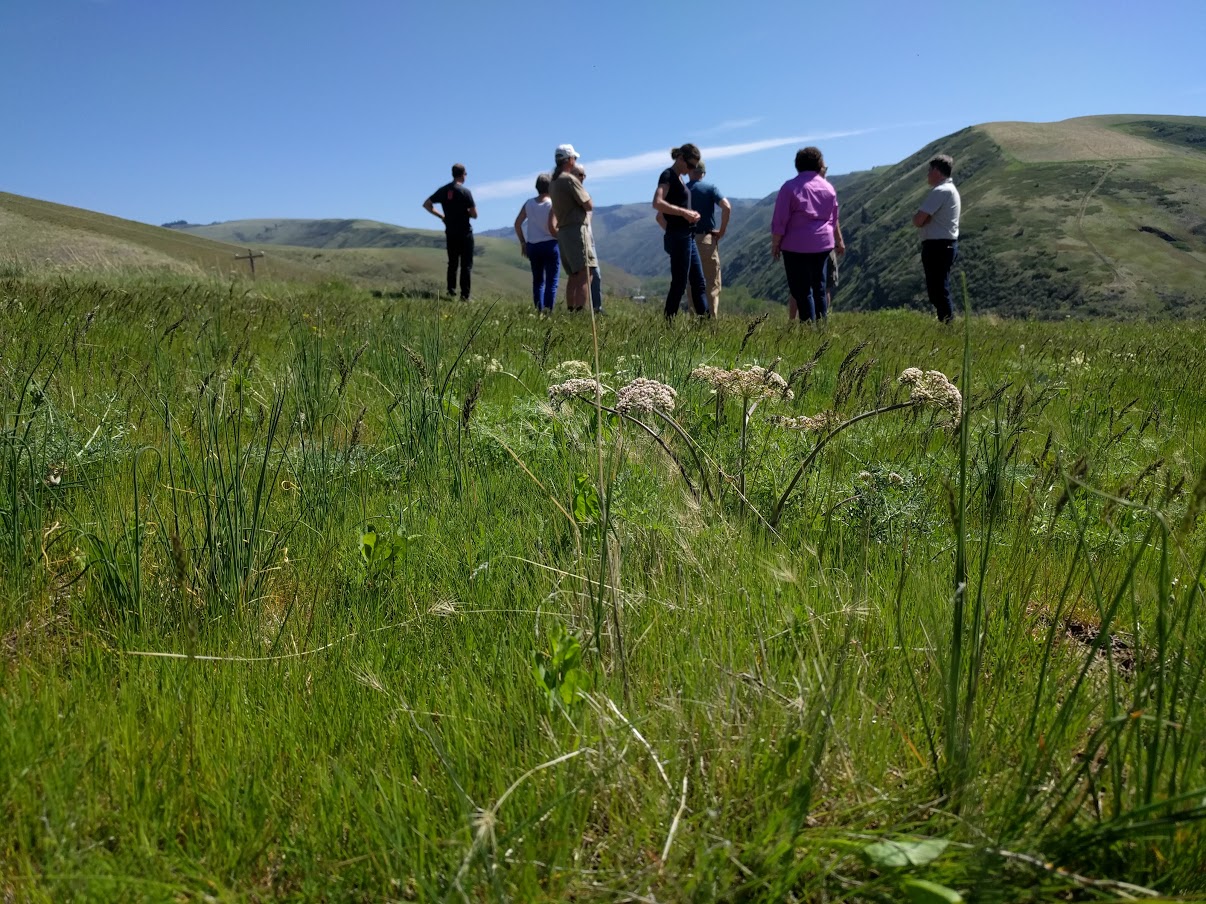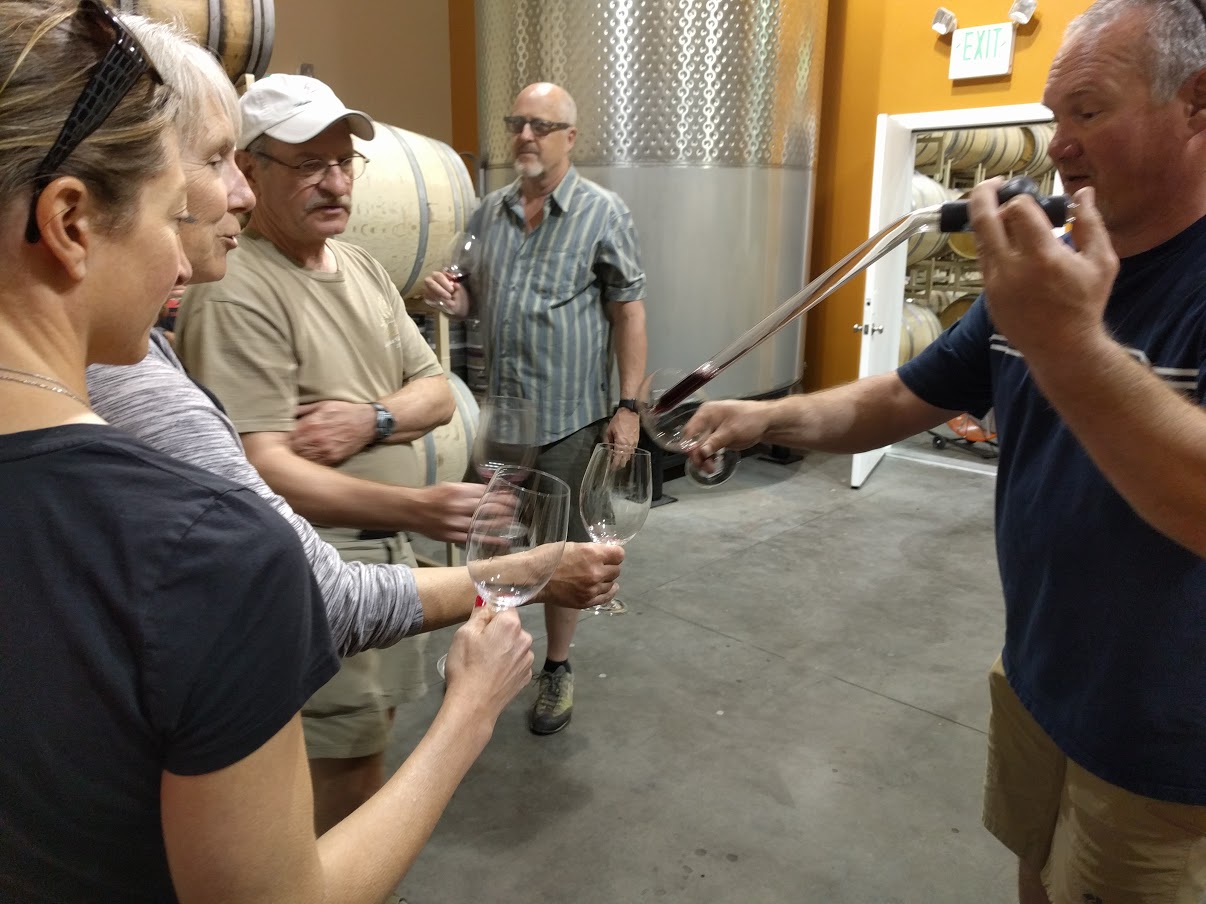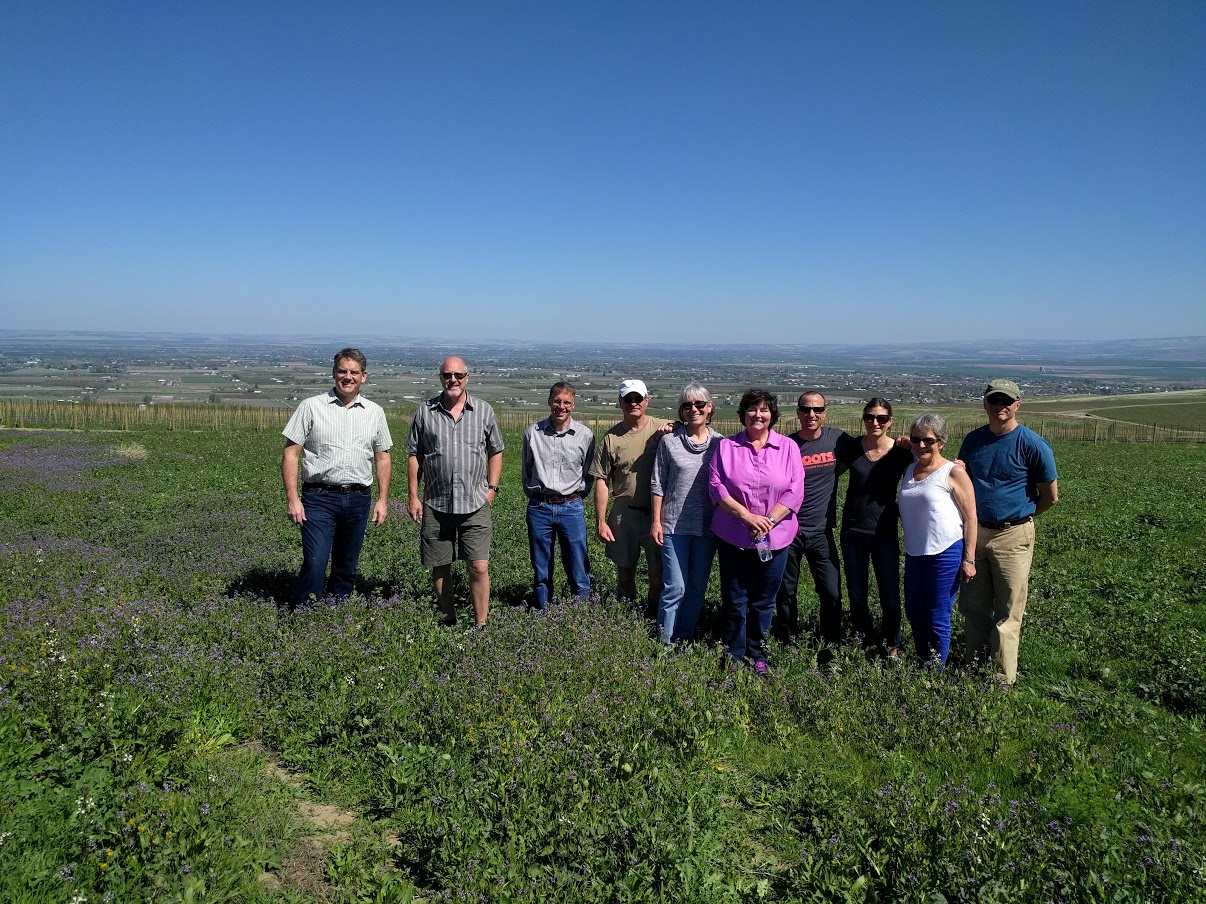This 55-acre acquisition gives the Rock Creek Preserve a more contiguous stretch of habitat and strengthens the landscape scale conservation efforts of nearby tribal, federal, state, and private landowners.
Meet Katie Pofahl, Eastern Washington Community Relations Manager
Shrub-steppe Fire Recovery & Resilience
Local Leadership on Display at This Year’s Prescribed Fire Training Exchange (TREX)
In the Face of Fire: How Communities are Learning From Each Other
Natural Beauty Hidden in Plain Sight
Healthy or destructive? Putting fire to work for people and nature
Listening in the Night
Photographed by Anna Snook
On a nice summer night, with a sky full of bright stars, it was a wonderful time for our volunteers and for spotted bats! Experience the bat survey fun with the slideshow of photos above.
For over 13 years, The Nature Conservancy has conducted spotted bat surveys on our Moses Coulee preserve with the help of our volunteers. This July, two groups of volunteers gathered at Moses Coulee to listen for the unique calls of the elusive spotted bat. Volunteers of all ages participated in using specialized audio equipment to learn more about the different bat species of Moses Coulee and gather data on the presence and behavior of the spotted bat. This data is used to help understand how habitat loss and White Nose Syndrome impacts the spotted bat and will aid in species conservation.
LEARN MORE ABOUT SPOTTED BATS
VISIT OUR MOSES COULEE PRESERVE
Search Party for Pygmy Rabbits
Written & Photographed by Lauren Miheli, Volunteer Coordinator and Anna Snook, Volunteer Photographer
A hike in Washington’s sage brush country will reveal plant, animal, and bird populations distinct from those on the West Side of the state. On a typical day one would be lucky to see mule deer, badgers, meadow larks, mourning doves, small horned lizards and a great many other small mammals, birds and reptiles. Ideally if you saw a rattle snake it would be from a distance. Something you most likely wouldn’t encounter would be a Columbia Basin Pygmy Rabbit. Although native to this region, the pygmy rabbit is in danger of becoming extinct. The Washington Department of Fish and Wildlife (WDFW) has been working on a project to breed these rabbits in semi-captivity and reintroduce populations back into the wild, including on our Beezley Hills Preserve. Bringing a species back from the brink of extinction is challenging work. There is no manual on how it’s done. Wildlife biologists, using their knowledge of the rabbit’s behavior, funding from the federal government, and a lot of intuition, utilize a trial and error approach to breeding and reintroducing them to their native sage brush habitat in central Washington.
In order to determine if any rabbits released have successfully survived in the wild, Jon Gallie and Shea Gibbs of WDFW invited a crew of about 30 Nature Conservancy volunteers to traverse the land near the release sites and look for signs of pygmy rabbits: burrow holes and scat. Volunteers split into groups of 4, with each group led by a member of WDFW’s staff armed with a GPS unit and collection tools. Each volunteer covered about 7 miles each day, traversing back and forth, and up and down hills, throughout sage brush.
While searching for signs of Pygmy Rabbits I was struck at how familiar I became with signs of other desert species – badger and coyote dens, snake holes, mouse holes, cottontail rabbit scat, prints and scat from deer, coyotes, and the feral horses that were grazing in the area. Upon first site a badger den filled me with excitement. After the 5th or 6th one I became jaded. Throughout two days of hiking and covering sage brush land that could once have been home to dozens of Pygmy Rabbits, with all of the volunteers intently searching on those two days, only one burrow with fresh scat was located. So this is what it feels like to look for an endangered species - searching and searching, and not finding what you’re looking for. We collected valuable data that the biologists will use to improve their strategy, but we were disappointed that we did not find more signs of pygmy rabbits. Two days of hiking for nearly 6 hours straight and the absence of signs of Pygmy Rabbits was felt in our collective psyches. The lack of discoveries does not mean that Pygmy Rabbit recovery is hopeless. Aside from the literal silver lining (partial cloud cover on both days cooled us down and made the typically unbearable eastern Washington heat a non-issue) the one burrow that we did find gives the project managers something to be excited about. Previous surveys of the area revealed no burrows at all. Samples of the scat were collected that will be sent to the lab at the Oregon Zoo, where DNA from all captive-bred rabbits is kept on record, and we will learn when the rabbit that left the evidence was released, how long it has survived in the wild, and if we’re really lucky we will find out that it has DNA that has not yet been recorded - which would indicate that it was wild born.
The biologists at the Washington Department of Fish and Wildlife are doing amazing work, and are highly dedicated to their task of bringing this species back to healthy population numbers. I believe they are up to the challenge, and I hope that we can continue to improve our land management and conservation practices, so that other species are not pushed this far in the future.
LEARN HOW YOU CAN VOLUNTEER
Beezley Hills Wildflower Day
Photographed by AJ Dent, Volunteer Photographer
It was a celebration of the magic of Eastern Washington at our Wildflower Day Celebration! Visitors explored the Beezley Hills preserve, then joined in the festivities with other Conservancy members and Legacy Club guests through guided walks and talks about nature.
Peter Lancaster began at the trailhead to talk about the Pygmy Rabbit recovery program happening in the area. Afterwards, Molly Boyter, Botanist for the Bureau of Land Management and Emily Orling, Botanist for Rebalance Consulting shared information about plants and flowers.
Become a member today
Conservancy Comes Together for Northwest Forests
Written & Photographed by Caitlyn O'Connor, Staff Volunteer
The interior forests of the Northwest and Intermountain West are yielding fewer benefits for nature and people as a result of impaired forest health and reduced productivity, massive wildfires, regulatory hurdles, and challenging economics.
Leaders from The Nature Conservancy’s Idaho, Washington, and Oregon chapters came together recently to figure out how to accelerate the pace and scale of forest restoration across private and public lands across these three states.
The goal of this meeting was to convene trustees, staff, and industry leaders to learn more about regional challenges to forest restoration, to facilitate cross-state learning, and to strengthen our regional collaboration and shared purpose.
We met in Walla Walla, where it was sunny and 80 degrees the whole weekend. Dr. Ryan Haugo, Senior Forest Ecologist for Washington kicked off the meeting by explaining what is a healthy fire environment, evaluating forest restoration needs, the hard truths, and the path forward.
We convened the next day at the Water and Environment Center for a deep dive into the issues. We started the day on a positive note by looking at our ‘bright spots’, what we were doing well and stories of integrated small diameter mills, with guest speakers Duane Vaagen from Vaagen Bros and Nils Christoffersen, Wallowa Resources.
Then we looked at the private and public forest management and their roles in forest health. We listened to Bill Aney, USFS Region 6 and Tom Lindquist, formerly of Plum Creek.
But our learning was not done yet. At dinner, we were treated to a presentation from Dr. Kevin Pogue, a geology professor at Whitman College, where he is known for his expertise on terroir for winegrape production.
This presentation wrapped up the official program for our Walla Walla conference.
For those who had extra time, Dr. Pogue helped us explore multiple vineyards, the different types of terroir and explained how much location matters when growing grapes and what conditions make the best type of grapes for the type of wine. Fascinating information where we learned about the Rocks District in the Walla Walla Valley. Yes, growing wine on rocks.
We are constantly learning more about how much nature is intertwined and interconnected with everything we love!
LEGISLATORS PUT $10 MILLION TOWARD FIRE-RISK REDUCTION
SEATTLE — On Tuesday, the Legislature approved $10 million in the capital budget for forest hazard reduction by the state Department of Natural Resources, the largest single increase in funding for forest health ever made by the state, but just half of what was originally requested.
Already this year there have been 324 wildfires across Washington. Last year’s fire season was the biggest on record in the state, with the largest fire — the Carlton Complex — destroying more than 250,000 acres. More than 1 million acres of Washington’s landscape has been consumed by wildfire since 2009.
“As we approach an unprecedented wildfire season due to changing climate and decades of fire suppression, these investments are more critical than ever,” said Mike Stevens, The Nature Conservancy’s Washington state director. “While this represents the single largest legislative appropriation for forest health, there is much more that we need to do to ensure resilient communities and forests in face of increasing amounts of fire.”
“The health of our forests is important to wildfire prevention. Dead or dying trees are fuel for potentially catastrophic wildfire,” said Commissioner of Public Lands Peter Goldmark, who leads DNR. “We appreciate the Legislature’s investment in this critical effort to improve forest health and the resilience of Washington forests.”
Fire and forest health experts believe some of the uptick in the number of fires earlier in the season is due to years of persistent drought on the east side of the Cascades, which have weakened forests and made them more susceptible to insects and disease. Ailing forests become flammable “tinder bombs,” ready to ignite from a human-caused spark or lightning strike.
The appropriation includes $9 million for forest hazard reduction work on state and in certain circumstances, private non-industrial timber lands, to reduce the risk of fire, insect and disease to state lands, and $1 million for grants to local communities for the Firewise program, which helps communities take action to increase public safety, and reduce wildfire risk and losses.
DNR and a coalition of advocates developed the original $20 million capital budget request based on an October 2014 report to the state legislature titled “Eastern Washington Forest Health: Hazards, Accomplishments and Restoration Strategy.”
Up-front investments in in forest treatment can save millions in lost asset value for state forests and firefighting costs, protect homes and other property, and generate immediate economic benefits. Recent studies indicate that $1 invested in restoration can yield $1.60 in wildfire suppression cost reductions, and that $1 invested in restoration also generates $6 in overall economic benefit.
The following links offer additional information on the importance of forest health and its relationship to wildfire:
KING 5: Bug infested forests raise fire danger in Washington
KOMO 4: DNR: ‘These forests are tinder bombs’
CONTACT
Tom Bugert
The Nature Conservancy
(509) 885-6991
tom.bugert@tnc.org













